inbox and environment news: Issue 553
September 4 - 10, 2022: Issue 553
Dogs Off-Leash On Beaches Open For Feedback
- Do You Want Pittwater Leashed? Let The Council Know Why!
- Calls For Council To Address Dogs Offleash Everywhere After Two Serious Dog Attacks On Local Beaches In Same Week - owner has still not come forward or been identified as of Saturday August 6, 2022
- Sydney Dog Attack Victim Awarded $225, 000: July 2022
- Council Push For Dogs Off Leash On Family Beaches Among Wildlife Habitat - delves into 2022 Central Coast Council report that found 'Dog owners who are of the opinion that they and their dogs have priority access to the space, and other people are a secondary user' (on/of public beaches)
White faced heron landing at north Palm Beach, March 7th, 2022 during storm event. All native birds, reptiles, amphibians and mammals (except the dingo) are protected in New South Wales by the Biodiversity Conservation Act 2016 (BC Act).
Masked Lapwing Plover Chicks Update: All Now Dead Because No One Is 'Responsible For Wildlife In Council Areas'
- Do we need a change to either the Local Government Act or Environment laws in New South Wales to ensure the letter of the law is not only well-known but policed? (laws are written to respond to what has been identified as a problem in our society, most often in/as human behaviour - but why is the process to address breaches failing?)
- Should Councils be funded to look after the wildlife in their Local Government Areas?
- Or should the burden being taken up by volunteer wildlife rescue and carer organisations and their volunteers continue indefinitely? (physical, emotional, financial)
- If Councils are tasked with looking after wildlife in their LGA's - what form should this take?
- Should volunteer wildlife rescue and rehabilitation organisations be funded by local, state and federal governments?
- Are we witnessing the extinction of species in our local area that could once live safely here, raising their own young? (recent studies suggest we are - read in page linked to below 2 that came out same week this was occurring)
'Celebrating Biodiversity Month with surprising facts about our natural environmentSeptember not only marks the beginning of spring, it’s also the beginning of a unique celebration for our natural environment - National Biodiversity Month.The Northern Beaches is blessed with more than 300 bushland reserves and two national parks right on our doorstep.We’ve got some almighty statistics about these areas that might just surprise you!540 native fauna species call our reserves and bushlands home, and 69 of them are listed as threatened.1,460 plant species can be found right here in our backyard, of which 65 are threatened.48 different native vegetation communities; 13 of these are threatened ecological communities.This level of biodiversity makes the Northern Beaches one of the most biodiverse areas left in Sydney. In a bustling world-renowned city this really is unique.Council and the community are committed to sustaining our bushland and wildlife for future generations to enjoy.'
Leopard Seal Visitor
.jpg?timestamp=1660590847423)
VALE Barbara Triggs
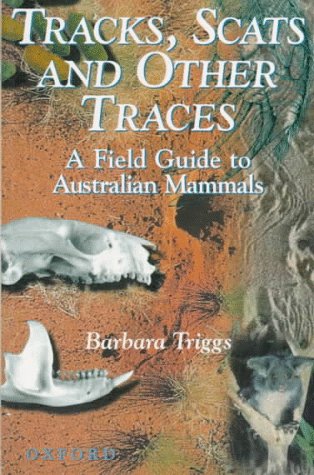 Sad news this week on the passing of Barbara Triggs.
Sad news this week on the passing of Barbara Triggs. 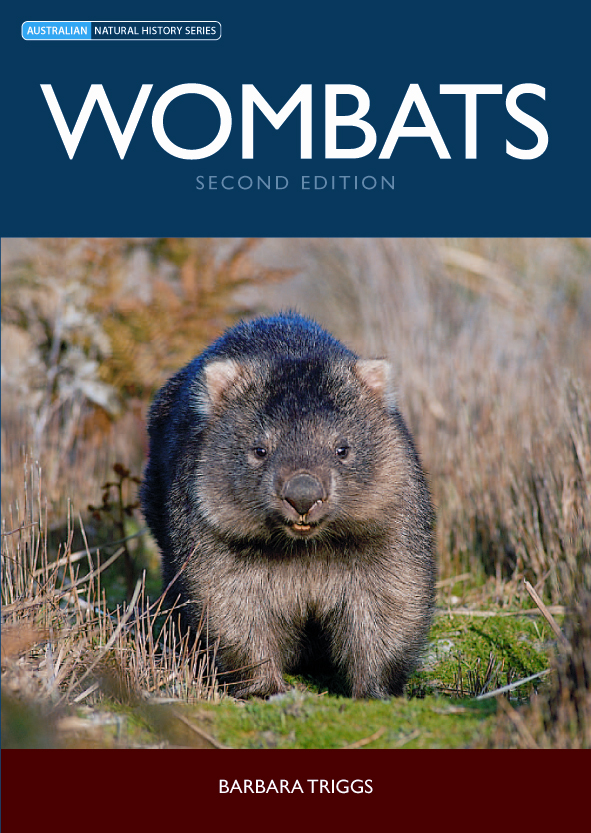
Katandra Bushland Sanctuary Open
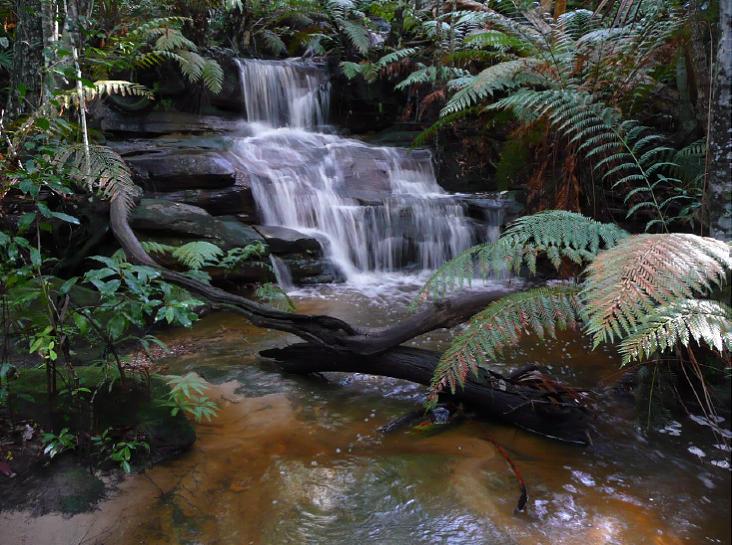
Ku-Ring-Gai Sculpture Trail For 2022 Eco Festival
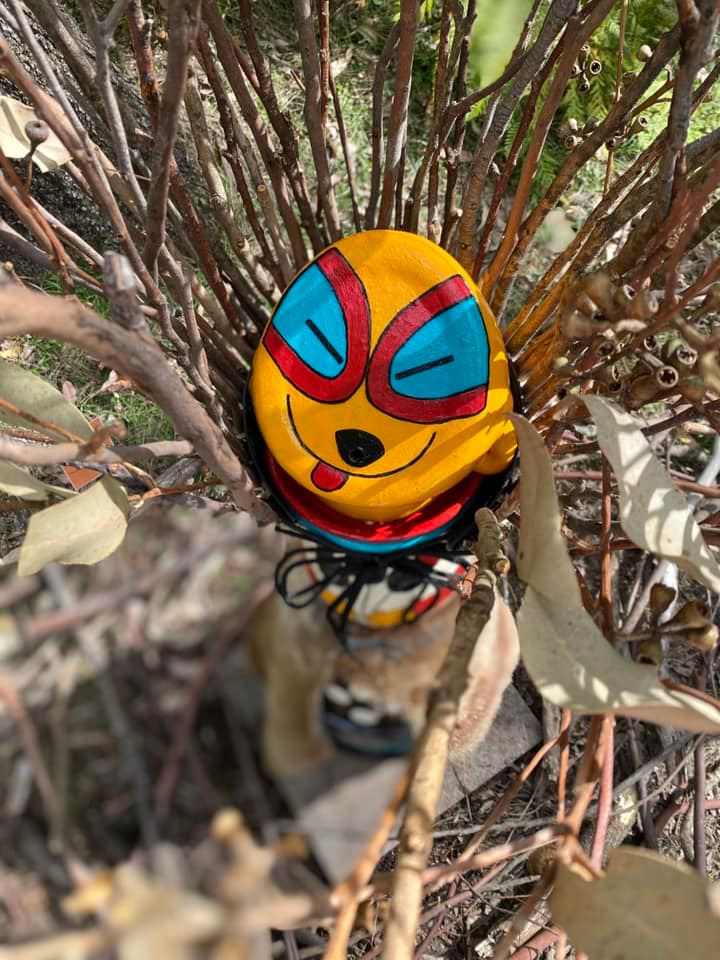
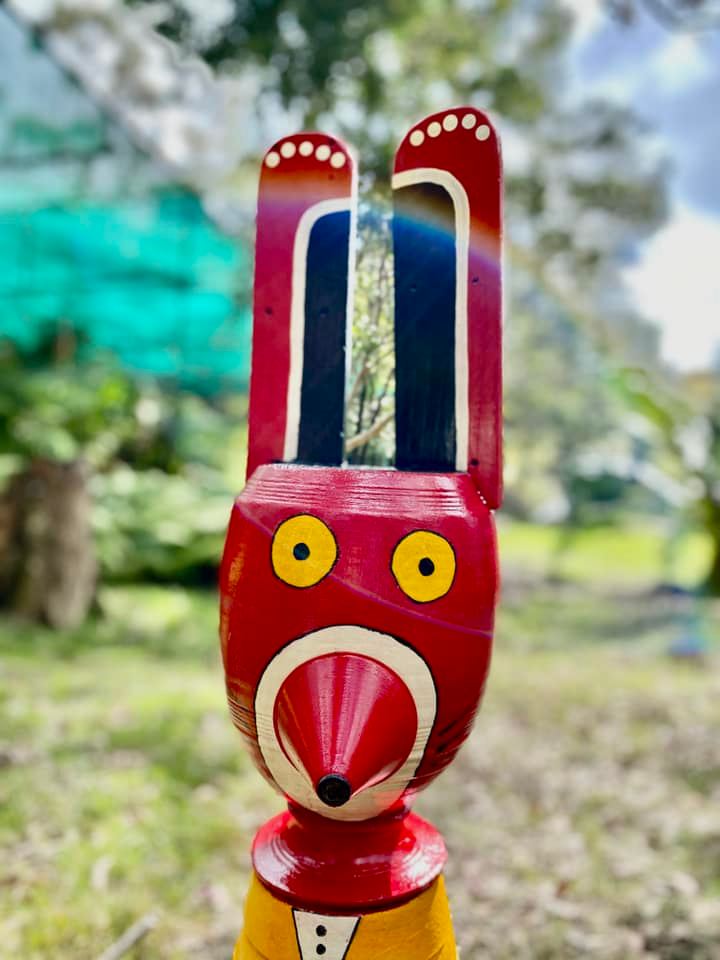
Dust Off Your Picnic Blankets For The First Ever Statewide Picnic For Nature
New National Fire Rating System Backed By New Fire Behaviour Models And Fire Danger Calculator
- forest
- grassland
- grassy woodland
- spinifex
- shrubland
- mallee-heath
- buttongrass
- pine
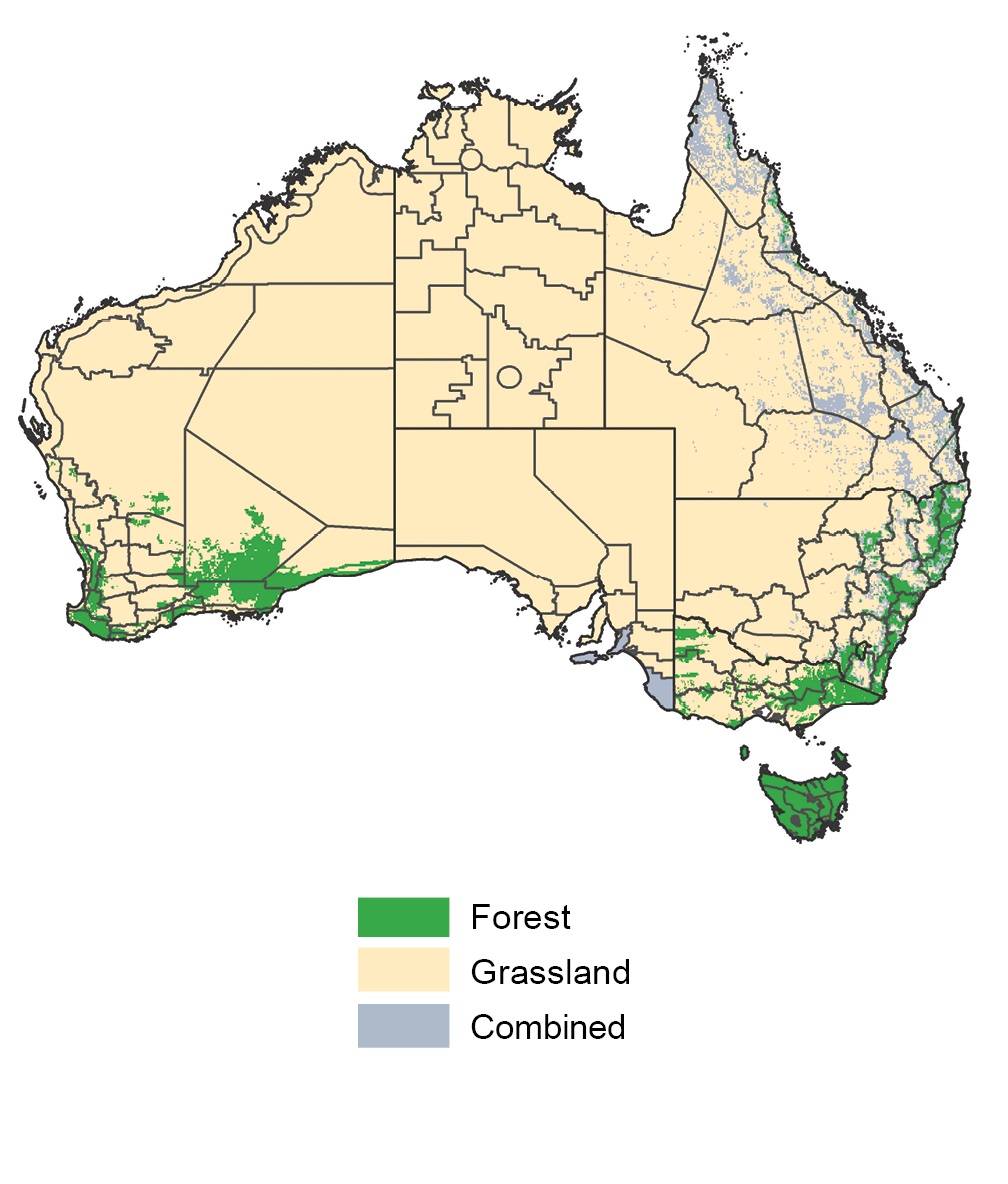
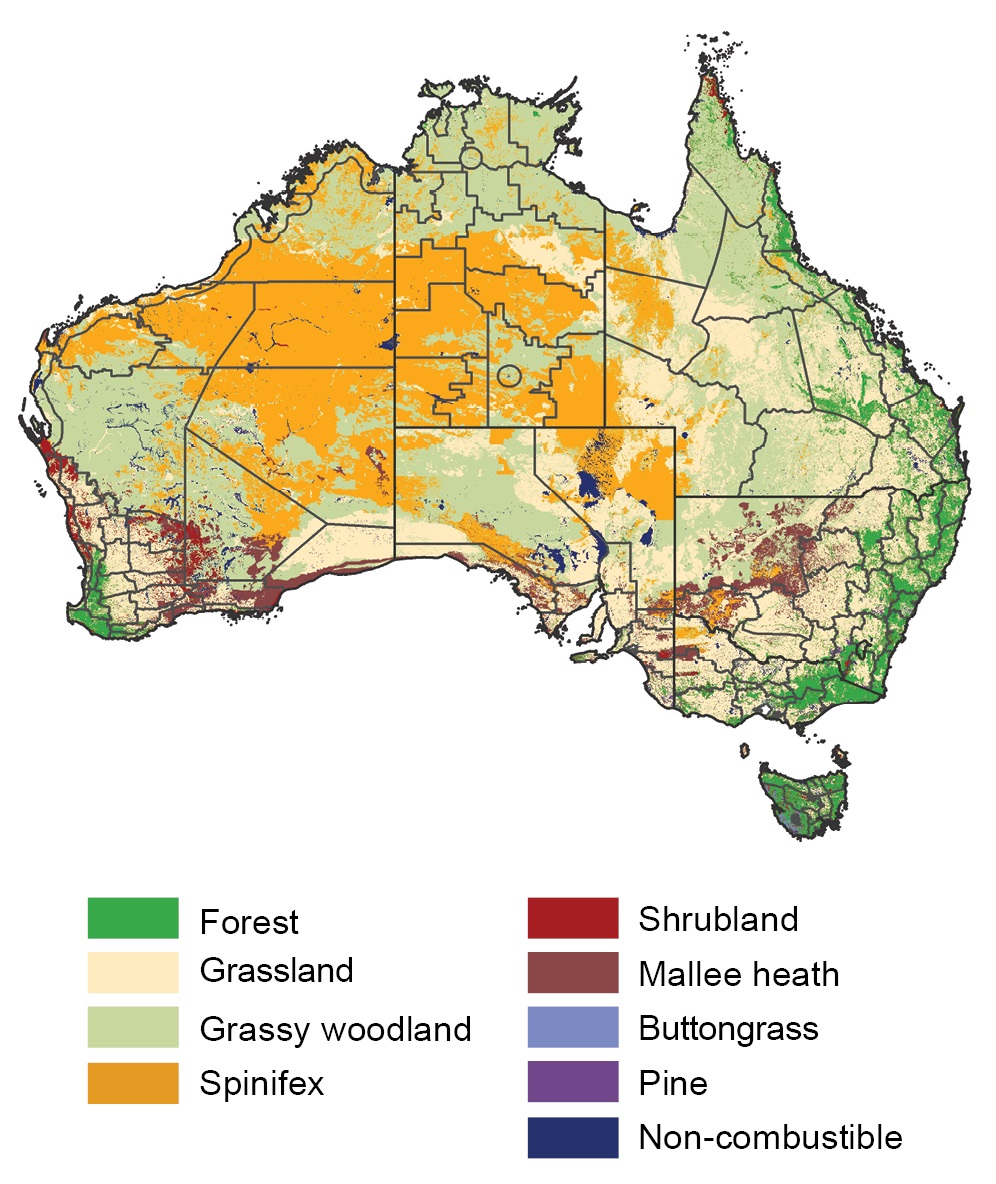
Effectiveness Of The NSW Biodiversity Offsets Scheme
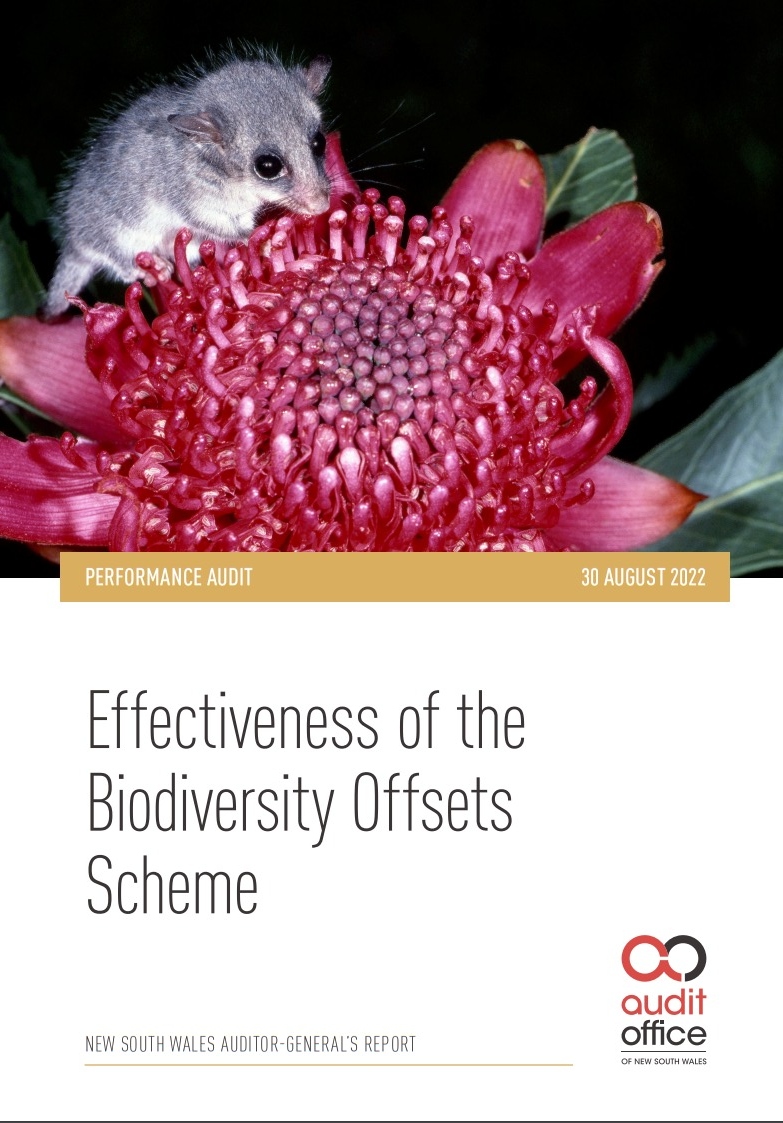 What the report is about
What the report is about- a long-term strategic plan for the Scheme
- improvements to the operation and transparency of the market and credit supply
- frameworks to ensure the financial and ecological sustainability of biodiversity stewardship sites
- enhanced public reporting and data management
- resolving issues in conflicting governance and oversight.
- 96% – proportion of developer demand for species credits not met by current supply
- 97% – proportion of species credits that have never been traded on the biodiversity market
- 60% – proportion of the 226 Biodiversity Stewardship sites under active land management
- $90m – value of developers’ obligations paid directly into the Biodiversity Conservation Fund
- 20% – proportion of developer obligations transferred to the BCT that have been acquitted.
Damning Auditor-General’s Report Finds Coalition’s Biodiversity Conservation Architecture Is A House Of Cards States Nature Conservation Council
- Adhering to the avoid, minimise, offset hierarchy.
- Requiring no net loss, and preferably a net gain, in biodiversity.
- Ruling out destruction of high-conversation value habitats.
- Requiring strict like-for-like offsetting, with no variation rules.
- Excluding supplementary measures, mine rehabilitation and payments in lieu of offsets.
- Ensuring all offset actions are additional to what is already required by law.
- Core elements of the scheme are “not effectively designed”. (p2)
- There is no clear strategy for assessing whether the scheme is achieving its intention (p2) to maintain a healthy, productive and resilient environment, so we may never know the full extent of the damage it has allowed.
- The market-based approach is not working. There are not enough biodiversity 'credits' to meet the demands of development, even as credit demand is projected to grow with the NSW Government's infrastructure plans.
- The practice of developers paying into the Biodiversity Conservation Fund without proper information about whether sufficient credits for their project exist is enabling damaging projects to progress while nature loses out.
- The scheme is plagued with problems of integrity, transparency and conflict of interest (p2). The Biodiversity Conservation Trust is the scheme’s supplier, market intermediary and market participant.
- There is no plan for long-term funding for the care of Biodiversity Stewardship sites, and with no monitoring in place, we can't know if land management actions are actually achieving the necessary gains to compensate for biodiversity loss (p8).
So-Called Biodiversity Certificates Scheme Another False Solution To Tackling Environmental Crisis Researcher States
NSW Government To Allow Carbon Credits For Marine Ecosystems
- Conserving blue carbon ecosystems and supporting their adaptation.
- Delivering blue carbon projects on public, private and First Nations peoples owned and managed land.
- Embedding blue carbon in coastal and marine policy planning and management.
- Conducting blue carbon research.
- Promoting pathways for blue carbon investment.
7.7 Million Hectares For Seismic Surveying
- a joint venture between INPEX, Woodside Energy and Total Energies for an area in the Bonaparte Basin
- Woodside Energy for an area in the Browse Basin.
We call on the elected representatives of Australia to cease any further expansion of fossil fuel exploration in commonwealth waters adjacent to the Tasmanian, South Australian and Victorian coastline by supporting the Offshore Petroleum and Greenhouse Gas Storage Amendment (Fight for Australia’s Coastline) Bill 2022.It is critical for our local economies and our communities’ health & well-being for the ocean to be safeguarded as the well balanced, fruitful ecosystem that it is. We are particularly concerned with the seismic surveys happening in the Otway Basin, in the North West of Tasmania.Last year Conocophillips & 3D oil conducted seismic surveys just 27km West of King Island3D Oil now have plans to drill a “frontier exploration well” by 2023Slumberger & TGS are applying to seismic survey 7.7 million hectares of the continental shelf from South Aus to as far south as Arthur River, Tasmania.This is occurring over the Zeehan & Nelson Marine ParkWe call for a cancellation of PEP/T/49P where US company ConocoPhillips has recently conducted seismic testing. In addition, no further exploration or permits granted on the Eastern Beach Energy lease (T/RL2, T/RL4 & T/RL5). We also call on all new petroleum exploration leases in the Otway Basin (12 Apostles) and Sorell Basin to be canceled.Both commercial and recreational fishing has always been a huge part of our coastal culture. We want to be able to keep local seafood on the table for our families, protect local industries and continue recreational activities on the water. Afterall, it is this lifestyle and culture that has helped build our Southern Sea Country into the globally recognised area that it is today.New research by the Institute of Marine and Antarctic Science (IMAS) has recently found the economic value of Tasmania’s Fisheries and Aquaculture industries is worth $1.5b to the Australian economyThe current landed value of the Southern Rock Lobster Fisheries is $99m with a capital investment of $1b.The fisheries on the Great Ocean Road contributed $22 million of added value in the 2016/17 financial year.In 2018 Tasmanian had a total of 92,000 recreational fishermen, The Australian Institute reported these fishermen spend $93m on equipment, bait, accommodation, and other servicesA scientific study commissioned by the Fisheries Resource and Development Corporation (FRDC) in 2020 found that one month after a seismic survey around Lakes Entrance, catch rates fell 99.5% for whiting and 71% for flatheads. Commercial scallop fisheries in Bass strait recorded a $70m loss in catches after a seismic survey in 2010.IMAS and Curtin University’s Center for Marine Science and Technology concluded seismic surveying was most likely the cause. These studies highlight the fact that local fishing industries are left to deal with the negative impacts caused by fossil fuel exploration.Further studies on the commercially important species are currently being conducted at IMAS. However, all previous and current studies on the impacts of seismic testing have focused on individual physical impact. In short, scientists have not yet assessed the long-term effects of seismic testing, the impacts it will have on future fish stocks and the overall health of our ecosystem.Impacting our fishing industry harms all other parts of our community, from the local business who sell fishing gear to the mechanics which service our fishing vessels. For example, the King Island rock lobster industry brings $22 million to the island annually supporting a diverse range of industries including hospitality, general stores etc.An official survey of King Island completed in 2021 confirmed 97% of residents were against fossil fuel exploration.In addition to fisheries, our oceans and our coasts are our most valuable tourism asset.Tasmania’s west coast is internationally renowned as one of the most wild, untouched, and pristine areas in the world, which the Tasmanian tourism industry has relied on to promote its world class reputation as a natural wonder. For example, Tasmanian Tourism directly contributed $1.44 billion to Tasmania’s economy, and supported around38 000 jobs in Tasmania (15.8% of total Tasmanian employment) in 2019 prior to COVID19.A total of 376,000 of these visitors ate Tasmania's famous local seafood, 42,000 participated in fishing and 6,000 came for the sole purpose of fishing.The growing industry of tourism in Tasmania is an exciting prospect for communities and job growth, however the exploration for gas within 57km of these much-valued assets such as The Nut in Stanley, is jeopardising this opportunity. The air and water quality on the West Coast has a worldwide reputation for being some of the cleanest on the planet and the planned expansion of fossil fuel operations off this coastline does not align with the Tasmanian wilderness tourism experience.In Victoria, to be exploring for gas less than 5km from the iconic 12 Apostles is an atrocity. This coastline is world renowned, and in 2016-17, catered to over 5.1 million visitors who spent $1.3 billion and generated employment for over 9,200 people. The Victorian tourism industry, coastal communities and the livelihood of local fishermen will be heavily impacted by the further industrialisation of the coastline. Local businesses and industries are a critical part of coastal communities, and an integral part of our local economies. Threatening this through fossil fuel expansion off our coasts would be another immense blow to our local communities, who are only just beginning to recover from the impacts which COVID-19 has burdened us with for the last 2 years.
Older Homes Left Out In The Cold By New Building Sustainability SEPP
Greater Sydney Water Strategy Announced
- Improved water efficiency, leakage management and reuse programs to save Greater Sydney up to 49 billion litres of water every year by 2040;
- New flexible operating rules for the Sydney Desalination Plant that will enhance our resilience by allowing up to 20 extra billion litres of water per year to be produced – and more when needed;
- Options to expand the desalination plant, which could add another 90 billion litres per year, or a new desalination;
- Investment in treated re-use programs for watering trees, sports fields, cooling and greening the city, and industrial use; and
- Smarter use of stormwater with integration into land use planning. This is already underway with the stormwater vision for the new Aerotropolis precinct. In a first for the State, stormwater will be managed across the entire landscape, diverted into natural water channels and wetlands, and then treated as recycled water to green and cool Sydney’s West.
Rally To Optimize Economic Benefits For Lithgow From Gardens Of Stone Ecotourism Without Trashing The Region’s Scenic Values
Keeping Kermit: New Clues To Protecting Frogs From Deadly Bd Fungus
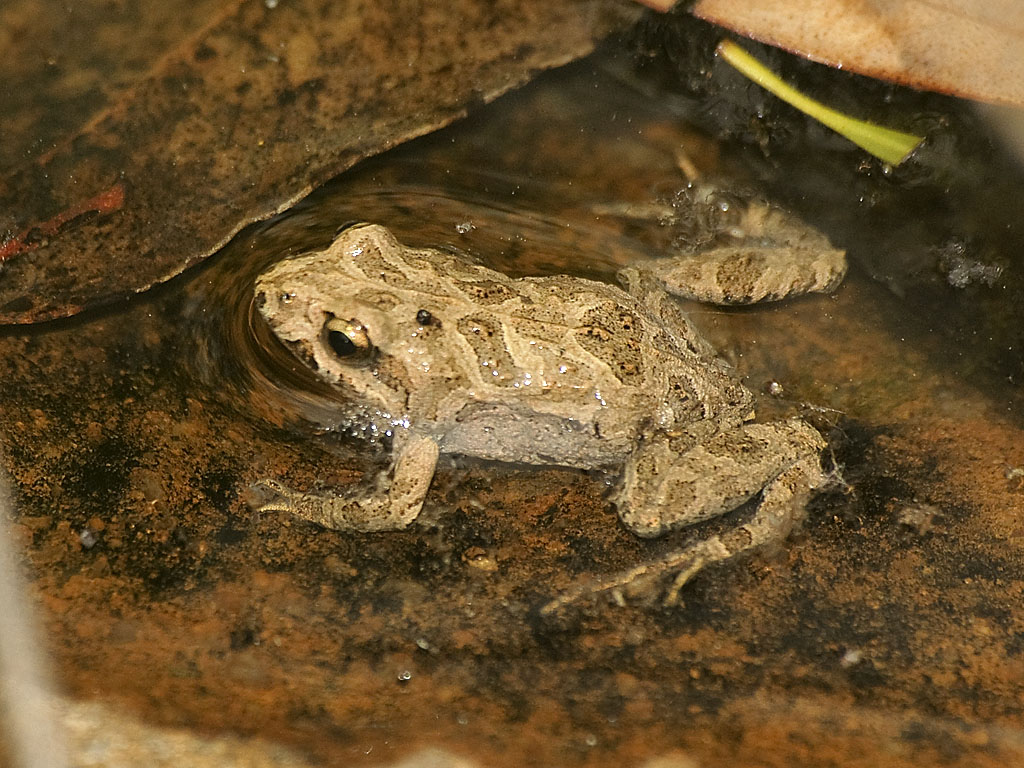
Echidna 'Love Train' Season Commences
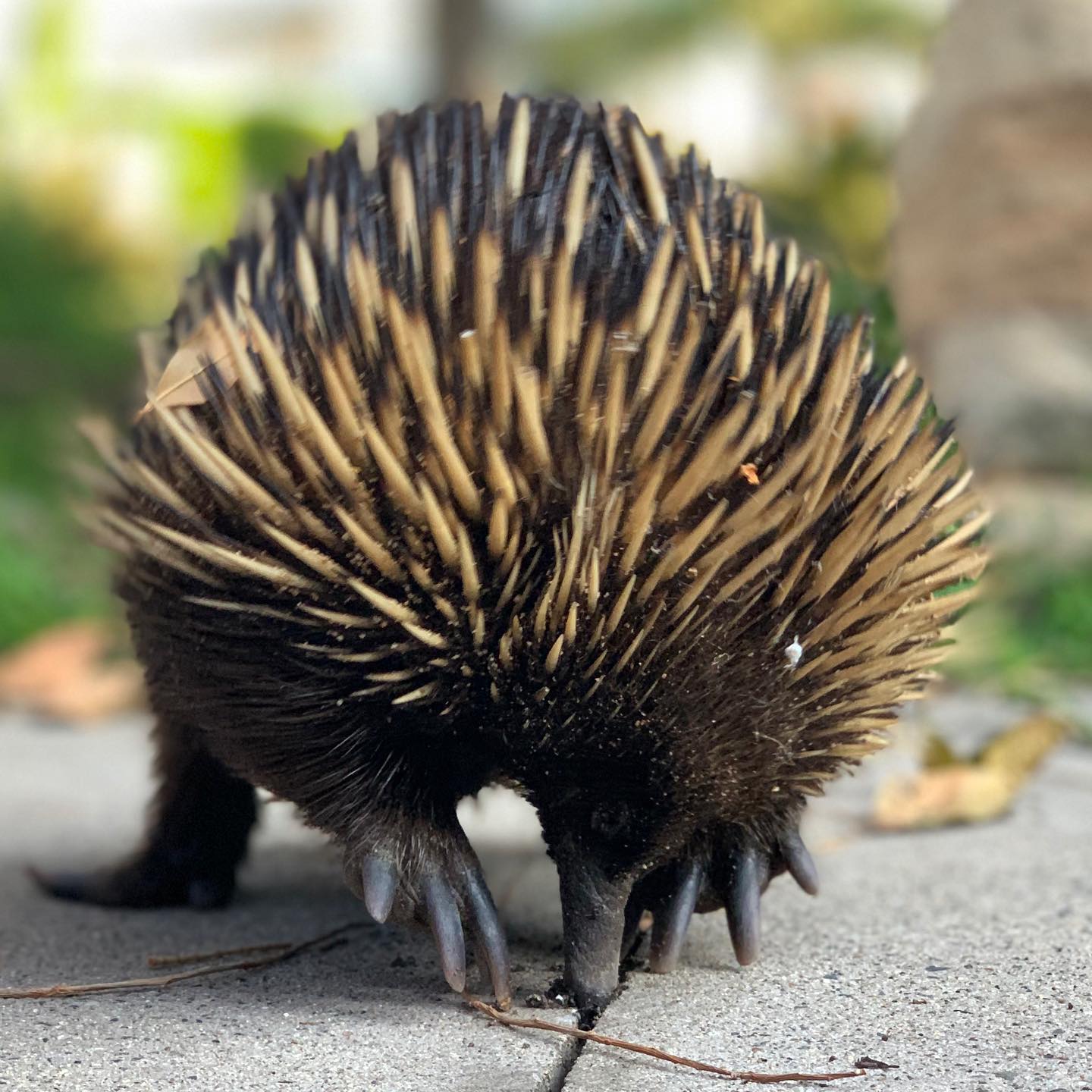
Magpie Breeding Season: Avoid The Swoop!
- Try to avoid the area. Do not go back after being swooped. Australian magpies are very intelligent and have a great memory. They will target the same people if you persist on entering their nesting area.
- Be aware of where the bird is. Most will usually swoop from behind. They are much less likely to target you if they think they are being watched. Try drawing eyes on the back of a helmet or hat. You can also hold a long stick in the air to deter swooping.
- Keep calm and do not panic. Walk away quickly but do not run. Running seems to make birds swoop more. Be careful to keep a look out for swooping birds and if you are really concerned, place your folded arms above your head to protect your head and eyes.
- If you are on your bicycle or horse, dismount. Bicycles can irritate the birds and the major cause of accidents following an encounter with a swooping bird, is falling from a bicycle. Calmly walk your bike/horse out of the nesting territory.
- Never harass or provoke nesting birds. A harassed bird will distrust you and as they have a great memory this will ultimately make you a bigger target in future. Do not throw anything at a bird or nest, and never climb a tree and try to remove eggs or chicks.
- Teach children what to do. It is important that children understand and respect native birds. Educating them about the birds and what they can do to avoid being swooped will help them keep calm if they are targeted. Its important children learn to protect their face.
Wanted: Photos Of Flies Feeding On Frogs (For Frog Conservation)
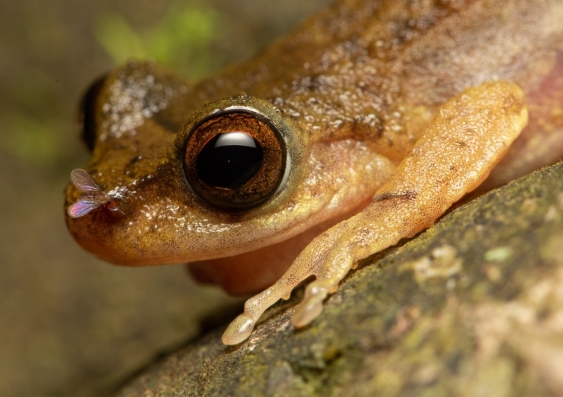
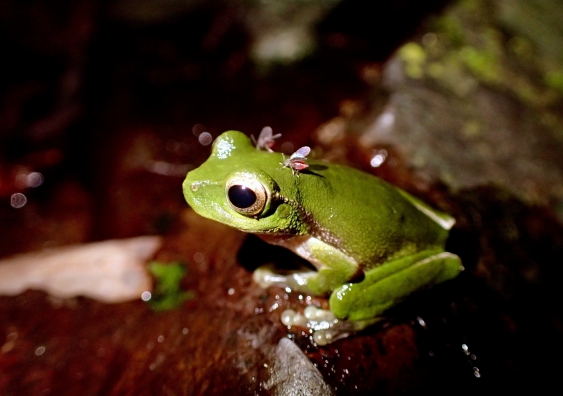
Possums In Your Roof?: Do The Right Thing
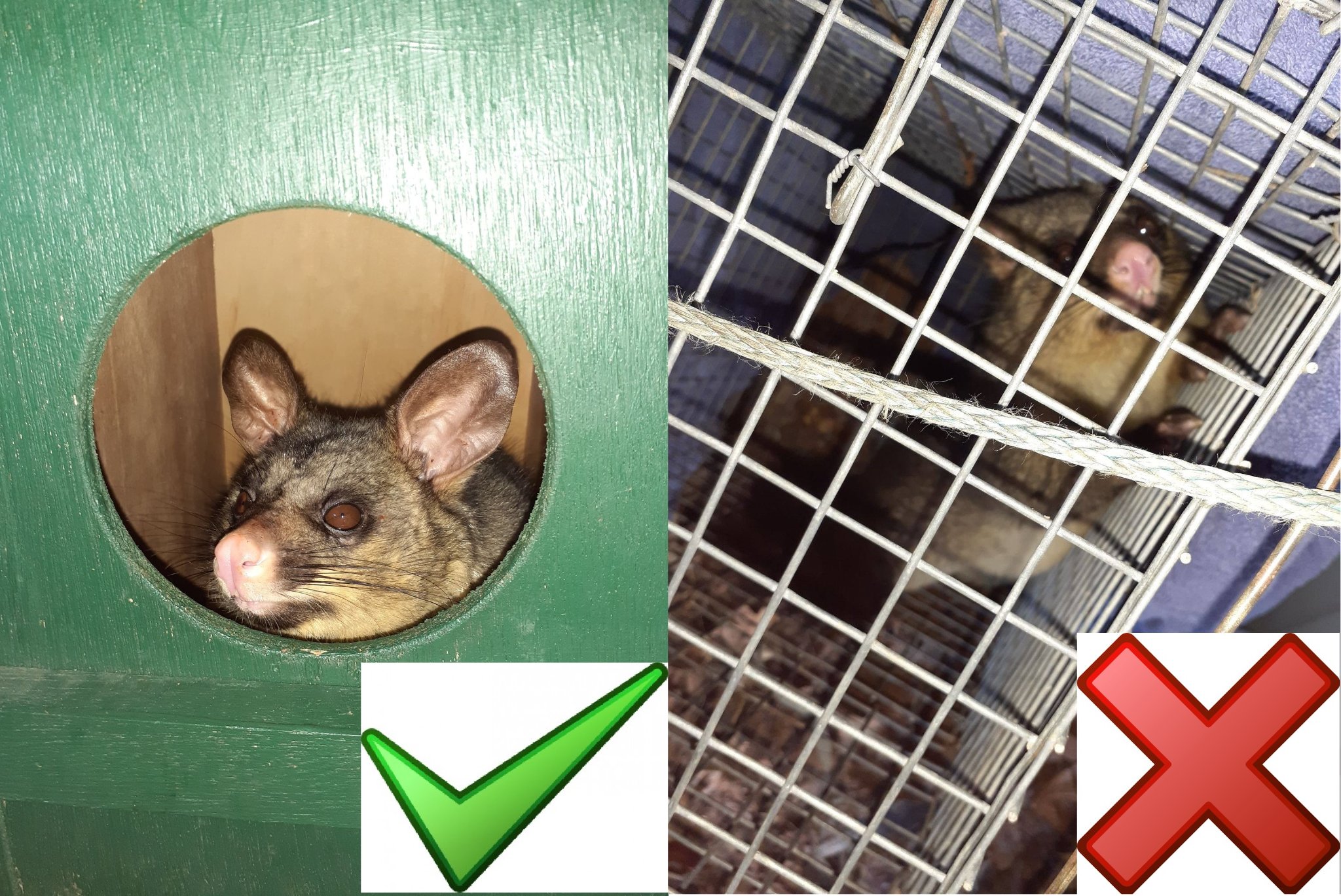
Local Wildlife Rescuers And Carers State That Ongoing Heavy Rains Are Tough For Us But Can Be Tougher For Our Wildlife:
- Birds and possums can be washed out of trees, or the tree comes down, nests can disintegrate or hollows fill with water
- Ground dwelling animals can be flooded out of their burrows or hiding places and they need to seek higher ground
- They are at risk crossing roads as people can't see them and sudden braking causes accidents
- The food may disappear - insects, seeds and pollens are washed away, nectar is diluted and animals can be starving
- They are vulnerable in open areas to predators, including our pets
- They can't dry out and may get hypothermia or pneumonia
- Animals may seek shelter in your home or garage.
You can help by:
- Keeping your pets indoors
- Assessing for wounds or parasites
- Putting out towels or shelters like boxes to provide a place to hide
- Drive to conditions and call a rescue group if you see an animal hit (or do a pouch check or get to a vet if you can stop)
- If you are concerned take a photo and talk to a rescue group or wildlife carer
There are 2 rescue groups in the Northern Beaches:
Sydney Wildlife: 9413 4300
WIRES: 1300 094 737
Please be patient as there could be a few enquiries regarding the wildlife.
Generally Sydney Wildlife do not recommend offering food but it may help in some cases. Please ensure you know what they generally eat and any offerings will not make them sick. You can read more on feeding wildlife here
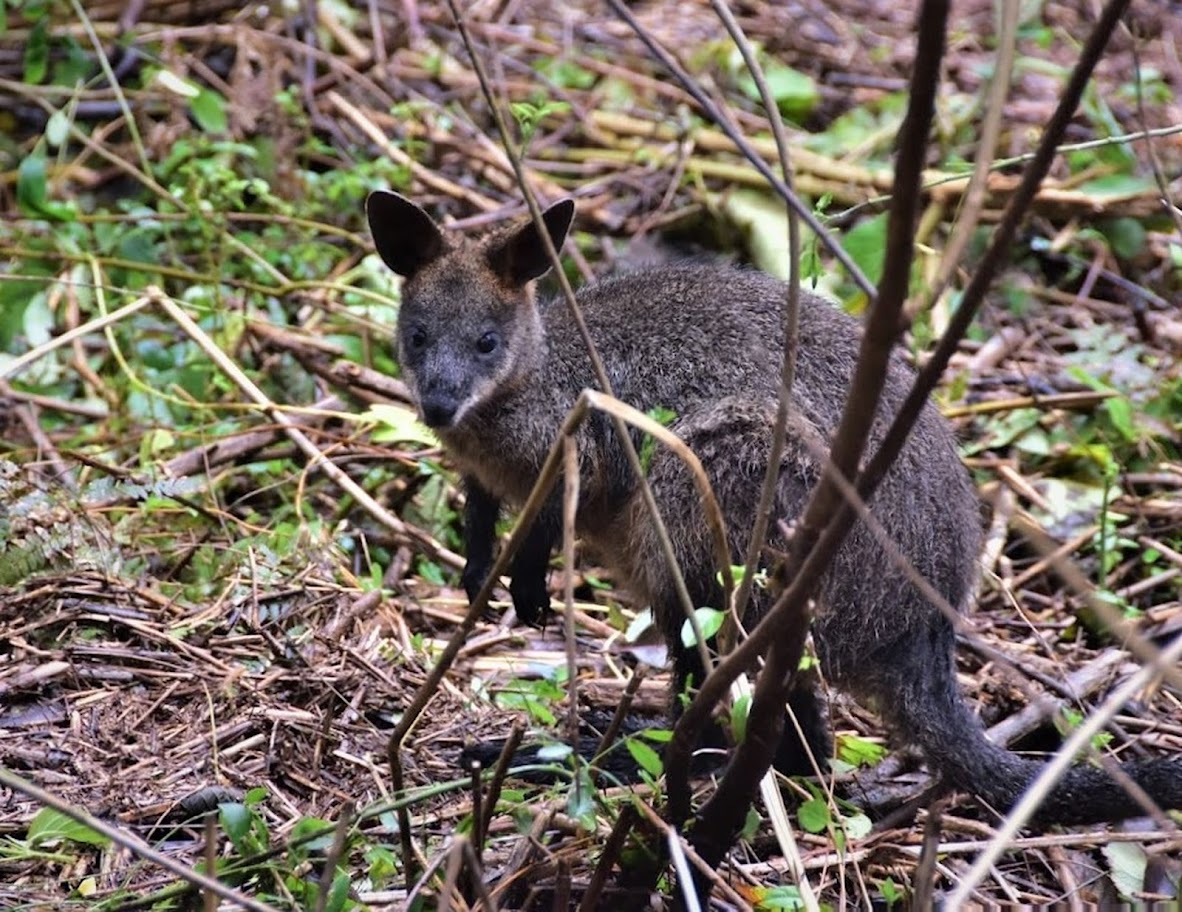
Information courtesy Ed Laginestra, Sydney Wildlife volunteer. Photo: Warriewood Wetlands Wallaby by Kevin Murray, March 2022.
Aviaries + Possum Release Sites Needed

Sydney Wildlife Rescue: Helpers Needed
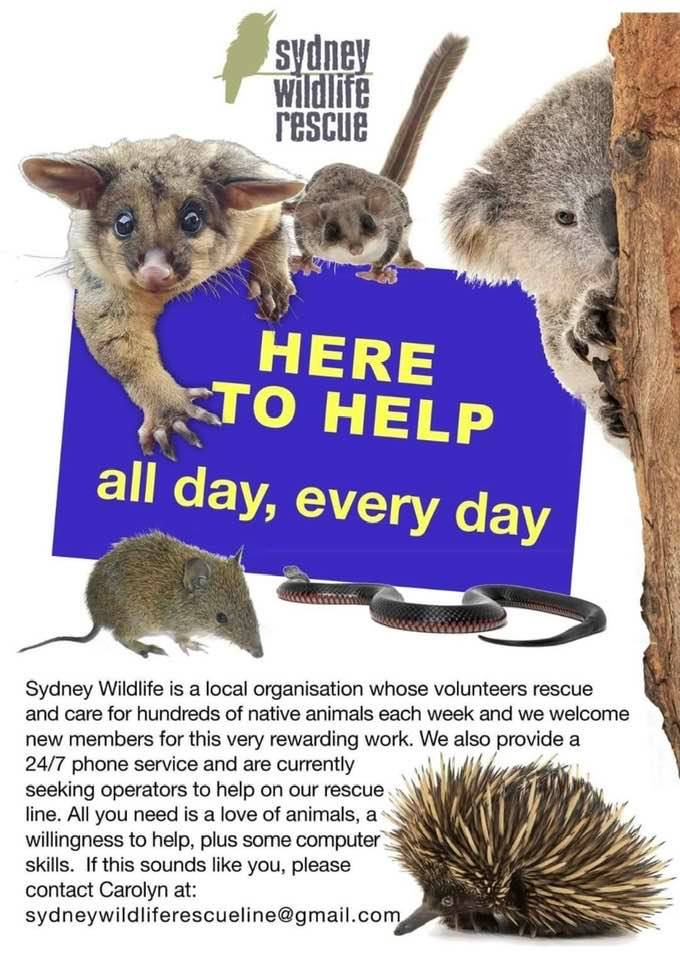
Bushcare In Pittwater
Where we work Which day What time
Avalon
Angophora Reserve 3rd Sunday 8:30 - 11:30am
Avalon Dunes 1st Sunday 8:30 - 11:30am
Avalon Golf Course 2nd Wednesday 3 - 5:30pm
Careel Creek 4th Saturday 8:30 - 11:30am
Toongari Reserve 3rd Saturday 9 - 12noon (8 - 11am in summer)
Bangalley Headland 2nd Sunday 9 to 12noon
Bayview
Winnererremy Bay 4th Sunday 9 to 12noon
Bilgola
North Bilgola Beach 3rd Monday 9 - 12noon
Algona Reserve 1st Saturday 9 - 12noon
Plateau Park 1st Friday 8:30 - 11:30am
Church Point
Browns Bay Reserve 1st Tuesday 9 - 12noon
McCarrs Creek Reserve Contact Bushcare Officer To be confirmed
Clareville
Old Wharf Reserve 3rd Saturday 8 - 11am
Elanora
Kundibah Reserve 4th Sunday 8:30 - 11:30am
 Mona Vale
Mona Vale Mona Vale Beach Basin 1st Saturday 8 - 11am
Mona Vale Dunes 2nd Saturday +3rd Thursday 8:30 - 11:30am
Newport
Bungan Beach 4th Sunday 9 - 12noon
Crescent Reserve 3rd Sunday 9 - 12noon
North Newport Beach 4th Saturday 8:30 - 11:30am
Porter Reserve 2nd Saturday 8 - 11am
North Narrabeen
Irrawong Reserve 2nd Saturday 2 - 5pm
Palm Beach
North Palm Beach Dunes 3rd Saturday 9 - 12noon
Scotland Island
Catherine Park 2nd Sunday 10 - 12:30pm
Elizabeth Park 1st Saturday 9 - 12noon
Pathilda Reserve 3rd Saturday 9 - 12noon
Warriewood
Warriewood Wetlands 1st Sunday 8:30 - 11:30am
Whale Beach
Norma Park 1st Friday 9 - 12noon
Western Foreshores
Coopers Point, Elvina Bay 2nd Sunday 10 - 1pm
Rocky Point, Elvina Bay 1st Monday 9 - 12noon
Gardens And Environment Groups And Organisations In Pittwater
‘Stealth privatisation’ in iconic national parks threatens public access to nature’s health boost

Australia’s national parks in several states are under siege from privatisation by stealth. Developers are using the lure of ecotourism to build posh private lodges with exclusive access deep inside many iconic parks.
The problem is, not everyone can afford private lodges. There’s a real danger in letting developers take over precious parts of nature. We know nature is good for our mental health – and the wilder the better. One in five Australians report at least one episode of mental illness in the previous year.
Our new research shows protected areas in Australia boost the mental health of visitors, seen in productivity gains of up to 11% for people who visit at least once a month. Nationwide, that means our national parks give us a productivity gain of 1.8% and cut healthcare costs by 0.6%. We found the therapeutic effects of nature for mentally unhealthy park visitors are 2.5 times greater than for mentally healthy visitors.
Access to nature in national parks is one of the few free mental health boosts available to the less well-off as well as the wealthy. If creeping privatisation takes root in our parks – replacing campsites with expensive accommodation – those who most need the boost from nature will find it harder to get.
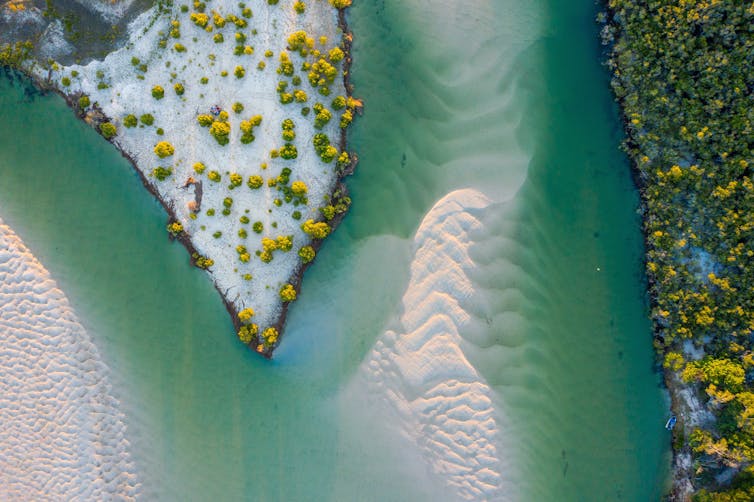
The Public Doesn’t Want Private Development In Parks
In national parks, the public wants signs, tracks, toilets, and tent sites, run by parks agencies and available to everyone. The public almost always opposes permanent accommodation in parks, whoever owns it, based on the belief private lodges and camps should be on private land.
But state governments in New South Wales, Queensland, Tasmania and South Australia have enabled this regardless. Think of the pristine Ben Boyd National Park near Eden in NSW, slated for eco-tourism cabins at the expense of campers. Or of the Cooloola Recreational Area in Queensland’s Great Sandy National Park near Noosa, where luxury cabins are planned.
The examples go on: ecotourism cabins in Main Range National Park in Queensland, Tasmania’s private Three Capes walk in Tasman national park and a resort in Freycinet National Park, as well as Kangaroo Island in South Australia.
While visitors to ecotourism developments report improved wellbeing and mental health, the issue is about who gets access. Private developments exclude the wider public, both physically and financially.
Some 70% of Australians visit a national park at least once a year. These visits reduces our healthcare costs by A$12.3 billion a year, and increases economic productivity by A$35 billion a year.
Worldwide, we have estimated the money saved through better mental health deriving from visits to protected areas to be around A$8.5 trillion per year.

Socialise The Costs?
Private lodges impose costs on cash-strapped parks agencies, due to their fixed footprints, permanent occupation and need for new access roads and paths. Lodges can also increase management costs for park staff through weed control, pathogens, feral animals, noise, bushfires and water pollution.
When some in-park enterprises collapse, they can leave large clean-up costs for the taxpayer, as we’ve seen at Queensland’s Hinchinbrook Island.
Parks agencies sometimes have to buy back rights given away free, such as after the collapse of the Seal Rocks centre on Victoria’s Phillip Island.
Private development also comes with increased legal and financial risks for the state, such as after the Thredbo landslide in 1997.
All these costs cut into funds allocated for conservation.
If we let the tourism industry take greater control over park access for private profit, we risk turning famous natural places into exclusive havens for people with money.
This is not to say tourist ventures have no place. Commercial nature tourism businesses can benefit, and contribute, by guiding inexperienced visitors to visit national parks. But the parks themselves, and all their facilities, should remain publicly owned and accessible to all.
National parks are a major tourism drawcard. Commercial enterprises benefit from visitor spending along access routes, in gateway settlements outside park boundaries, and by operating mobile guided tours inside parks under similar conditions to independent visitors. Private lodges inside parks compete with these existing businesses.
We Don’t Have To Give Private Interests Everything They Ask For
While some other countries do allow private lodges in national parks, the models are very different from those in Australia.
In Botswana, for example, private leases in protected areas are short, facilities are fully removable, and private tour operators pay 80% of the parks agency budget.
For comparison, proposals for a private island heli lodge in Tasmania’s Lake Malbena offered only A$4,000 a year.
In the US, the National Parks Service subcontracts visitor services to private concessionaires, but owns the facilities, requires bonds equal to 100% of capital value, and sets all conditions and prices.
In India, luxury lodges must generally be located outside park gates, while private hotels inside parks in China have been removed by the parks agency.
The quiet privatisation of access to national parks risks restricting nature’s mental and physical health benefits to the well-heeled. We need to protect public access to wild places meant for the public. ![]()
Ralf Buckley, International Chair in Ecotourism Research, Griffith University and Alienor Chauvenet, Senior Lecturer, Griffith University
This article is republished from The Conversation under a Creative Commons license. Read the original article.
Thousands of photos captured by everyday Australians reveal the secrets of our marine life as oceans warm
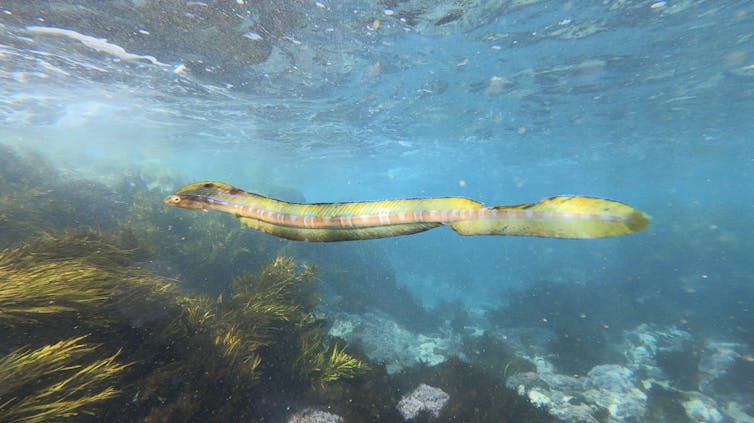
As the planet heats up, many marine plants and animals are moving locations to keep pace with their preferred temperatures. In the Southern Hemisphere, this means species are setting up home further south.
This shift alters what we see when we go snorkelling, and when and where we catch our seafood. Crucially, it also changes sensitive marine ecosystems.
But it’s not always easy for scientists to know exactly what’s happening below the ocean’s surface. To help tackle this, we examined tens of thousands of photographs taken by Australian fishers and divers submitted to citizen science programs over the last decade.
They revealed climate change is already disrupting the structure and function of our marine ecosystems – sometimes in ways previously unknown to marine scientists.
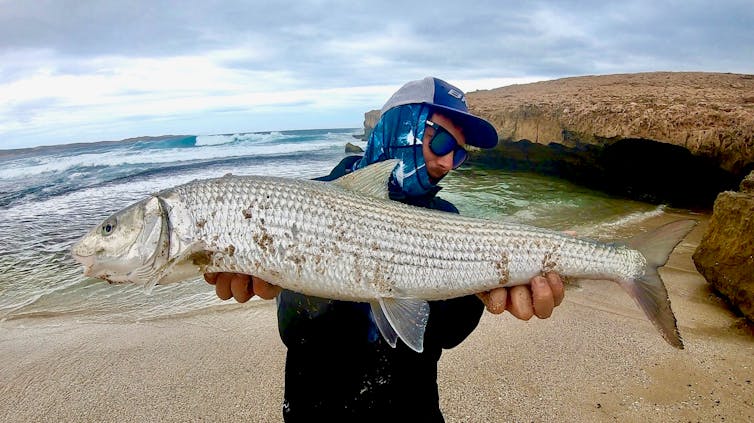
Species On The Move
Warming over the Pacific Ocean has strengthened the East Australian Current over the past several decades, as the below-right animation shows. This has caused waters off Southeast Australia to warm at almost four times the global average.
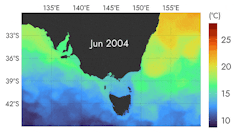
There is already irrefutable evidence climate change is causing marine species to move. Understanding this phenomenon is crucial for conservation, fisheries management and human health.
For example, if fish susceptible to carrying toxins start turning up where you go fishing, you’d want to know. And if an endangered species moves somewhere new, we need to know so we can protect it.
But the sheer scale of the Australian coastline means scientists can’t monitor changes in all areas. That’s where the public can help.
Fishers, snorkelers and divers often routinely visit the same place over time. Many develop strong knowledge of species found in a given area.
When a new or unusual species appears in their patch, these members of the public can excel at detecting it. So our project set out to tap into this invaluable community knowledge.
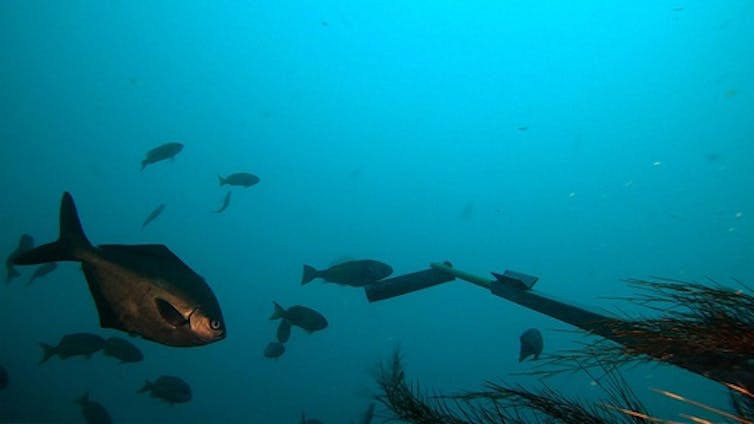
The Value Of Citizen Science
The Redmap citizen science project began in Tasmania in 2009 and went national in 2012. It invites the public to share sightings of marine species uncommon in their area.
Redmap stands for Range Extension Database and Mapping project. Redmap members use their local knowledge to help monitor Australia’s vast coastline. When something unusual for a given location is spotted, fishers and divers can upload a photo with location and size information.
The photos are then verified by a network of almost 100 marine scientists around Australia. Single observations cannot tell us much. But over time, the data can be used to map which species may be extending their range further south.
The project is supported by the University of Tasmania’s Institute for Marine and Antarctic Studies, together with other Australian universities and a range of Commonwealth and state-government bodies.
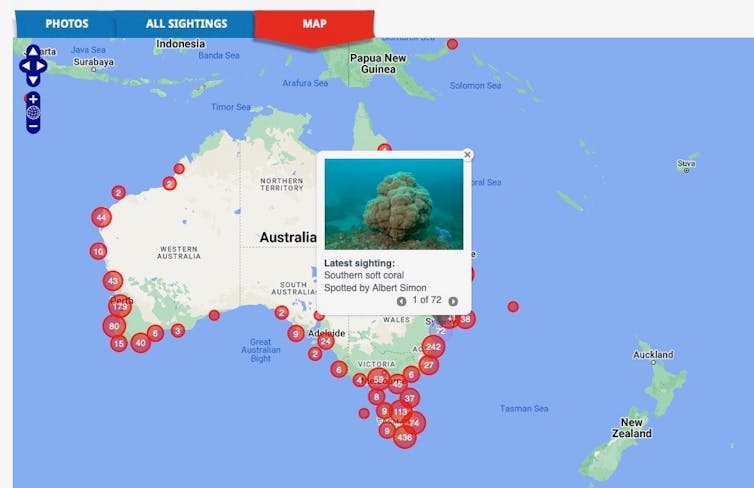
We also examined data from two other national marine citizen science programs: Reef Life Survey and iNaturalist Australasian Fishes Project. The resulting dataset encompassed ten years of photographed species observations made by almost 500 fishers, divers, snorkelers, spearfishers and beachcombers.
The citizen scientists recorded 77 species further south than where they lived a decade ago. Many were observed at their new location over multiple years and even in cooler months.
For example, spearfisher Derrick Cruz got a surprise in 2015 when he saw a coral trout swimming through a temperate kelp forest in his local waters off Sydney, much further south than he’d seen before. He submitted the below photo to Redmap, which was then verified by a scientist.
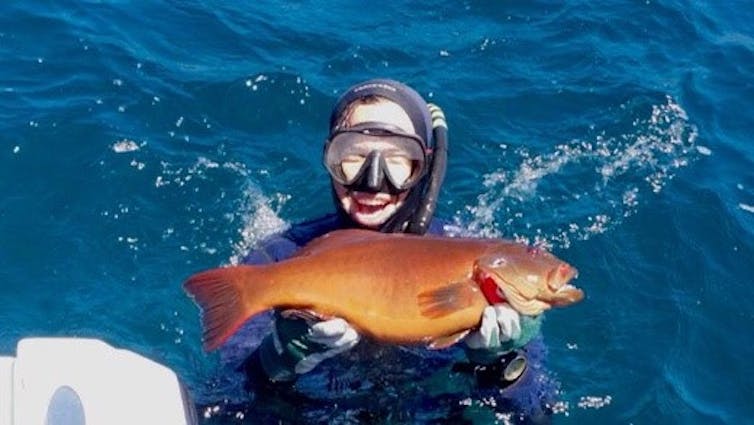
Citizen scientists using Redmap were also the first to spot the gloomy octopus off Tasmania in 2012. Subsequent genetic studies confirmed the species’ rapid extension into Tasmanian waters.
Similarly, solo eastern rock lobsters have been turning up in Tasmania for some time. But Redmap sightings recorded dozens of individuals living together in a “den”, which had not been observed previously.
Other species recorded by citizen scientists moving south include the spine-cheek clownfish, Moorish idol and tiger sharks.
Supporting Healthy Oceans
Using the citizen science data, we produced a report outlining the assessment methods underpinning our study. We’ve also produced detailed state-based report cards for Western Australia, Tasmania and New South Wales, where coastal waters are warming much faster than the global average.
We also generated a map of the species shifts this revealed, and a downloadable poster summarising the findings. This allows the public – including those who contributed data – to see at a glance how climate change is affecting our oceans.
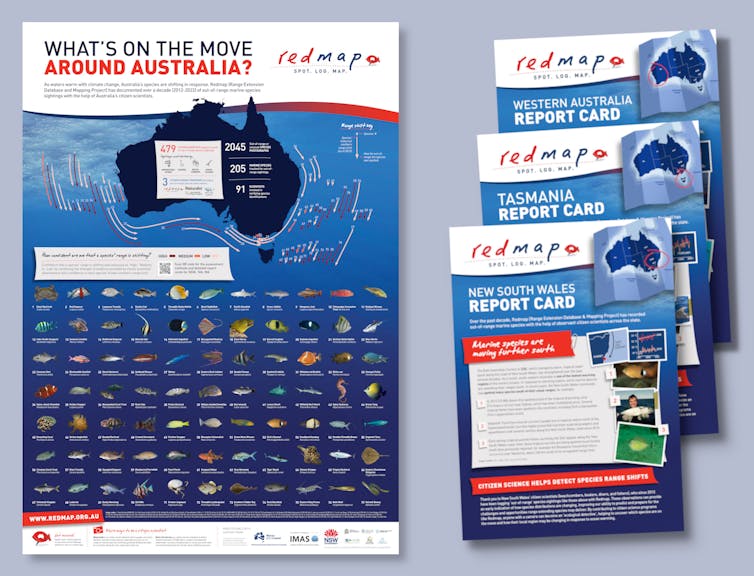
Citizen science has benefits beyond helping us understand changes in natural systems. Projects such as Redmap open up a community conversation about the impacts of climate change in Australia’s marine environment - using the public’s own knowledge and photos.
Our research suggests this method engages the community and helps get people involved in documenting and understanding the problems facing our oceans and coasts.
A better understanding – by both scientists and the public – will help ensure healthy ecosystems, strong conservation and thriving fisheries in future. ![]()
Gretta Pecl, Professor, ARC Future Fellow & Director of the Centre for Marine Socioecology, University of Tasmania; Barrett Wolfe, Postdoctoral Research Fellow, University of Tasmania; Curtis Champion, Research Scientist, Southern Cross University; Jan Strugnell, Professor Marine Biology and Aquaculture, James Cook University, and Sue-Ann Watson, Senior Research Fellow, James Cook University
This article is republished from The Conversation under a Creative Commons license. Read the original article.
Sacred Aboriginal sites are yet again at risk in the Pilbara. But tourism can help protect Australia’s rich cultural heritage
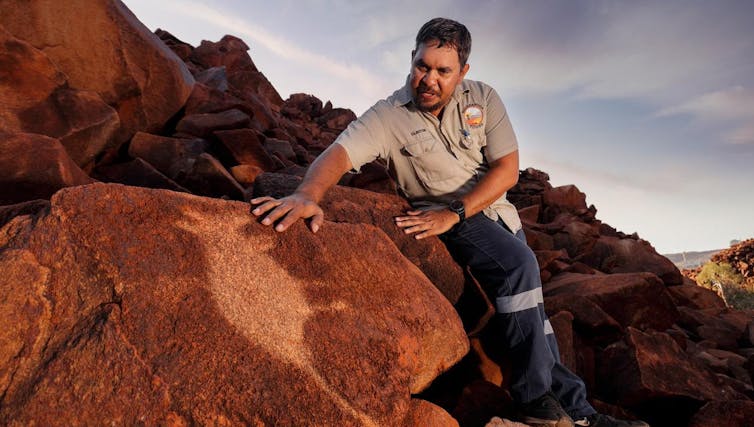
An application from Traditional Owners to block the construction of a fertiliser plant near ancient rock art in the Pilbara was denied by the federal Environment Minister Tanya Plibersek this week. This decision is deeply concerning, and points to a much larger problem with Indigenous heritage management.
Plibersek says she went with the views of the Murujuga Aboriginal Corporation in making her decision, calling it the “most representative organisation on cultural knowledge” in the region. Yet, she also acknowledged that these views don’t represent all Traditional Owner perspectives in the area.
Save Our Songlines, a separate organisation of Murujuga Traditional Owners, oppose the fertiliser plant, which they say poses a threat to sacred rock art sites. They say the minister’s decision is “based on faulty reasoning and false conclusions”.
In 2020, the world reacted in horror when Rio Tinto lawfully destroyed Juukan Gorge – sacred Aboriginal rock shelters in the Pilbara some 46,000 years old. Broader community understanding of the value of Aboriginal and Torres Strait Islander knowledges for looking after Country can help us avoid repeating this tragedy. Tourism and community education is an important way to do that.
‘Enough Is Enough’
The A$4.5 billion Perdaman fertiliser plant will be constructed in the World Heritage nominated Murujuga National Park in Western Australia. It is home to the world’s largest rock art gallery, with more than 1 million images scattered across the entire Burrup Peninsula and Dampier Archipelago.
As many as 20 sacred sites may be impacted by the plant, according to Save Our Songlines.
In an interview with ABC Radio National, Plibersek said the Murujuga Aboriginal Corporation have agreed that some of these rock carvings can be moved safely, and others can be protected on site even if the plant goes ahead.
However, the situation isn’t so clear cut. For example, the ABC revealed on Thursday that the Murujuga Aboriginal Corporation refused permission to move the rock art sites multiple times, preferring they remain undisturbed. Elders finally agreed after receiving advice that this wasn’t possible.
This isn’t the first time we’ve seen issues regarding consultation processes with Traditional Owners, such as during the notorious battle for the Kimberley against a major gas plant in 2012.
Traditional Owner and co-author Clinton Walker has been sharing his intimate knowledge of the Pilbara with visitors through his tourism venture Ngurrangga Tours for the past 11 years. He has the cultural authority and capacity to speak for his Country.
Clinton was a signatory on the open letter from Traditional Owners and Custodians of Murujuga concerning threats to cultural heritage in the area. He describes the potential impact of the fertiliser plant:
This hill is a very very sacred site to my people. If they build their plant here we’re not gonna have the same access we do now to go visit our rock art and teach our kids and family their culture.
This impact is going to damage our culture and it will damage us as the Traditional Owners because we’re connected to these sites in a spiritual way. I want people to know how important these sites are. We need to protect them. Enough is enough.
The Need For Consent
The federal inquiry into the Juukan Gorge disaster highlighted the need for free, prior and informed consent from any affected Aboriginal and Torres Strait Islander group.
The inquiry also called for the removal of so-called “gag clauses” from land-use agreements, which prevent Aboriginal people from speaking out against developers.
Save Our Songlines Traditional Owners say principles from the inquiry aren’t being upheld, and are concerned gag clauses are silencing members of the Murujuga Aboriginal Corporation.
We find it deeply problematic that Plibersek did not acknowledge these concerns around gag clauses in announcing her approval of the fertiliser plant. It is the role of the government to keep industry accountable for their obligations to abide by Indigenous heritage laws and to ensure proper consultation processes are undertaken.
This decision is also not in line with the federal government’s vocal commitment to the environment and to Aboriginal and Torres Strait Islander affairs prior to winning the election.
In a submission to the United Nations about how to “decolonise our legal system”, Nyikina Warrwa Indigenous leader and respected researcher Professor Anne Poelina said:
If the Lawful Laws which are awful, are enabled as lawful, what chance do Indigenous people and our lands, water, lifeways, and livelihoods stand against destruction?
Understanding Indigenous Connection To Country
Non-Indigenous people need to better understand the importance of Country for Aboriginal and Torres Strait Islander people. Classrooms are a good place to start.
Deficits in the Australian education system have led to poor knowledge and frequent and pervasive misunderstandings of Aboriginal people, places and cultures. A psychological hangover from White Australia’s assimilation policies persists.
When school education doesn’t provide accurate and truthful accounts of Australian histories, harmful stereotypes are left unchallenged.
Clinton Walker describes a common response from visitors on his tours showcasing the culture, Country and history of the Pilbara:
People say ‘how the hell don’t we know that? Why have we never learnt this stuff?’
Improvements in education have been slow. For example, the Australian Institute for Teacher and School Leadership only released their report “Building a culturally responsive Australian teaching workforce” in June this year.
Resources to support teachers are said to be scheduled for release in the coming months.
Learn About Country Through Tourism
Tourism is one context where the visibility and recognition of Indigenous people as knowledge-holders can be promoted and celebrated.
Aboriginal and Torres Strait Islander tourism operators are delivering truthful accounts of Australian history and telling their stories of their connection to Country and culture. This work is an emotional labour as they challenge entrenched colonial narratives.
Indigenous tourism operators are agents of reconciliation. Operators speak about wanting to educate visitors to build awareness of social and environmental issues facing their communities. The potential destruction of cultural sites at Murujuga is one such issue.
Ongoing research from lead-author Nicole Curtin involves conversations with Aboriginal tourism operators and their visitors. It finds that deep listening is required for visitors to interrogate their own biases and privileges during their tourism experience. Visitors must be willing to “go and sit and learn” about Indigenous sovereignty and knowledges in their own lives.
Indeed, an enhanced sense of connection to our local communities may help to drive people to speak out about the destruction of sites of environmental and cultural significance.
Raising community awareness to fuel social momentum is one way of exerting pressure on decision makers to protect Australia’s rich cultural heritage and environment.
We acknowledge the Bininj, Larrakia, Noongar, Ngarluma, Yindjibarndi and Yawuru peoples as the Traditional Owners of Country where this article, and our research, was conducted and written. We pay our respects to Elders past and present.![]()
Nicole Curtin, PhD Candidate, Charles Darwin University; Clinton Walker, Tourism operator, Indigenous Knowledge, and Tracy Woodroffe, Lecturer in Indigenous Knowledges, Charles Darwin University
This article is republished from The Conversation under a Creative Commons license. Read the original article.
Good news – there’s a clean energy gold rush under way. We’ll need it to tackle energy price turbulence and coal’s exodus

This week, the Australian Energy Market Operator warned gaps in electricity supply are likely within three years.
The reason? Coal plants are quitting the market earlier than expected, as well as becoming less reliable. Russia’s invasion of Ukraine drove coal, gas, petrol and diesel prices to painful highs. Domestic energy bills are soaring too, due in large part to ballooning gas prices. At one stage, outages and fuel shortages at coal and gas plants, coupled with low solar and wind output, very nearly cut power to a third of all east coast customers.
But the good news is there’s a clean energy gold rush under way, now we have a legislated emissions target and strong engagement between state and federal energy ministers. Investors are moving with increased confidence, accelerating their investments in clean energy generation and storage.
Even so, there’s a big task ahead to reach the goal of 82% renewables by 2030. We’ll need rapid deployment – not only to meet grid demand, but also new demand from the move to “electrify everything” in our homes and on our roads.
So what changes can you expect to see?
Solar Panels And Wind Farms Will Pop Up In Many More Places
The first thing you’re likely to notice is the rapid construction of new clean energy projects.
Over the past year, many of our coal power stations have become less reliable due to old age, heat stress and lack of fuel. There’s going to be a rush to the exit for coal. What’s the point of operators spending money propping up power stations at the end of their service life?
As a result, five coal plants are now expected to shut by the end of the decade – significantly more than anticipated.
What will replace them? Solar and wind farms, as these are the cheapest forms of new generation, supported by energy storage in batteries and pumped hydro.
The market operator conservatively expects 7.3 gigawatts of new generation to be built by the end of 2026-27, with half this again (3.4GW) “anticipated” to be built, meaning AEMO has a good degree of confidence these renewables will be built.
Even so, this is only a tiny fraction of the estimated 45GW of renewable opportunities in Australia readily available to investors and clean energy developers. We’ll need to build all 45GW – and then at least 5GW more – to hit our renewable target of 82%.
Unlike thermal power stations, solar and wind farms are made of simple building blocks that are quicker to scale in manufacturing and deployment.
In particular, you can expect to see solar and wind farms popping up in renewable energy zones like New England and the central west of New South Wales. These zones are designed to share the costs of new grid construction amongst a concentration of clean energy generation in areas with good sun and wind resources.
Batteries To Store And Transmission Lines To Move Electricity
Further major infrastructure investments will be made into energy storage and transmission lines.
The increasing value to the grid of storage is driving major investments like the plans for A$1 billion of new grid-scale batteries recently announced by US investment giant Blackrock, as well as AGL’s A$763 million plan to build batteries next to the decommissioned Liddell coal power plant.
Much of this investment is occurring in coal country, like Victoria’s Gippsland and the Hunter Valley in NSW. Here, companies are vying to place grid-scale batteries at old coal stations. Why? To take advantage of the existing strong connections to the grid.
While our existing transmission infrastructure will host many new renewable power stations and batteries, new transmission lines will need to be built. Especially between states, like EnergyConnect between NSW and South Australia, as well as new grid extensions to connect renewable energy zones to major cities.
A Focus On Flexible Use Of Power
In addition to the infrastructure placed in the grid, there will be a new focus on unlocking the value of flexibility in energy demand to better match the variability of when solar and wind plants generate electricity.
Storage is one source of flexibility. Timing our own electricity use is another.
Flexible energy use is far less resource intensive than new infrastructure and offers the greatest benefit to system reliability. But it relies on human behaviour and our willingness to change established habits.
Expect to see strong price incentives for you to use electricity when it’s abundant. The sunniest hours are already the cheapest time to use power in most of Australia - and this will only get cheaper.
Not only that, but you will likely see grid incentives at times of peak demand. Picture notifications offering you a financial incentive to turn off energy-hungry appliances such as electric vehicle chargers, home batteries and heaters use at particular times - and for these functions to be offered through automation.
This focus on the demand-side of electricity use is already well understood by energy-hungry industries. Last year, for the first time, this demand response was enabled for home users as well.
What Can You To Do Prepare?
The long-overdue energy transformation will affect everyone, in how we use energy at home as well as the infrastructure in our communities.
This transition depends on us all for support and direction. Projects will need social licence – support by local communities – political backing, and, in some cases, personal investment in technology and services.
Investments of time will be particularly important if we want to save billions of dollars and millions of tonnes of critical materials through making demand-side flexibility a reality.
So be ready to see change, and to take part in it. While change can be daunting, the energy transition is really about embracing flexible new paths to the same goal, as my children’s book on the energy transition shows. And the benefits are huge: abundant, cheap power, generated locally and in flourishing regions.![]()
Bjorn Sturmberg, Research Leader, Battery Storage & Grid Integration Program, Australian National University
This article is republished from The Conversation under a Creative Commons license. Read the original article.
Seahorse fathers give birth in a unique way, new research shows
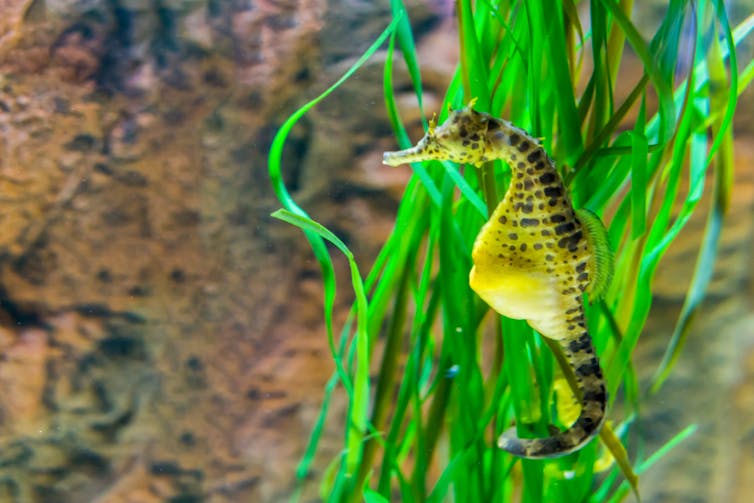
In seahorses and pipefish, it is the male that gets pregnant and gives birth. Seahorse fathers incubate their developing embryos in a pouch located on their tail.
The pouch is the equivalent of the uterus of female mammals. It contains a placenta, supporting the growth and development of baby seahorses.
Seahorse dads provide nutrients and oxygen to their babies during pregnancy, using some of the same genetic instructions as mammalian pregnancy.
However, when it comes to giving birth, our research shows male seahorses seem to rely on elaborate behaviours and their unique body structure to facilitate labour.
How Animals Give Birth
Labour is a complex biological process that in female pregnant animals is controlled by hormones including oxytocin. In mammals and reptiles, oxytocin induces contractions in the smooth muscles of the uterus.
There are three main types of muscle: smooth muscle, skeletal muscle and cardiac muscle.
Smooth muscle is found in the walls of most internal organs and blood vessels. This muscle type is not under conscious control. For example, your intestines are lined with smooth muscle, which rhythmically contracts to move food through your gut without you having to consciously control it.

Skeletal muscle is found throughout your body and attaches to bones via tendons, allowing body movement. This type of muscle is under conscious control. For example, your bicep muscles when contracted allow you to consciously bend your arm.
Cardiac muscle is specific to the heart and is also under involuntary control.
In female mammals the uterine wall contains abundant smooth muscle. Oxytocin stimulates this smooth muscle to contract, helping bring about labour.
These uterine contractions are spontaneous and involuntary. We can measure these uterine contractions in response to oxytocin, and the results are consistent in both mammals and reptiles.
How Do Male Seahorses Give Birth?
Our team of researchers from the University of Sydney and the University of Newcastle set out to determine how labour works in male seahorses.
Our genetic data suggested seahorse labour might involve a similar process to labour in female mammals. A study in 1970 also showed that when non-pregnant male seahorses were exposed to the fish version of oxytocin (called isotocin), they expressed labour-like behaviours.
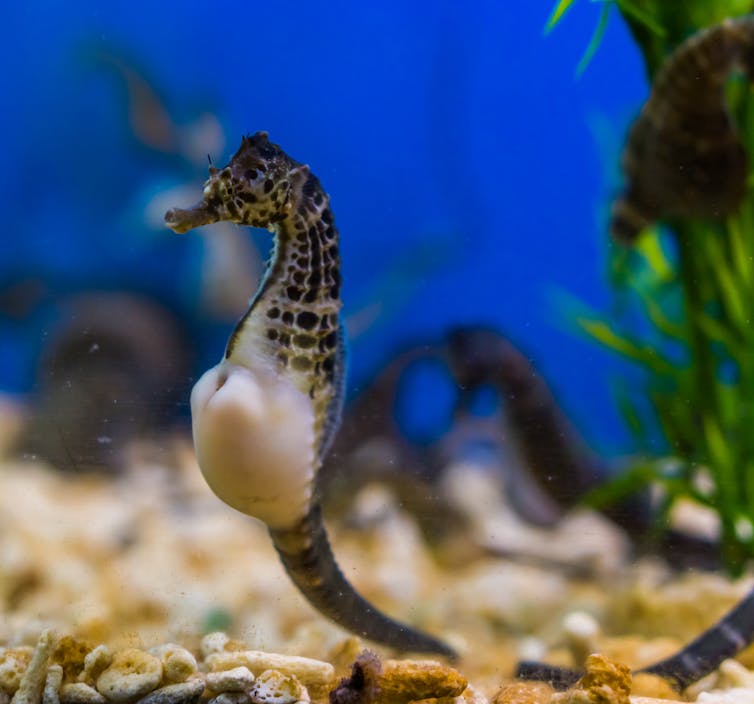
Therefore, we predicted seahorse males would use oxytocin-family hormones to control the process of giving birth via contracting smooth muscles inside the brood pouch.
What We Found
First, we exposed pieces of seahorse pouch to isotocin. While isotocin caused our control tissues (intestine) to contract, surprisingly this hormone produced no contractions in the brood pouch.
The result led us to wonder about the anatomy of the pouch. When we examined the pouch under a microscope, we found it contains only scattered small bundles of smooth muscle, far less than the uterus of female mammals. This explained why the pouch did not contract in our experiments.
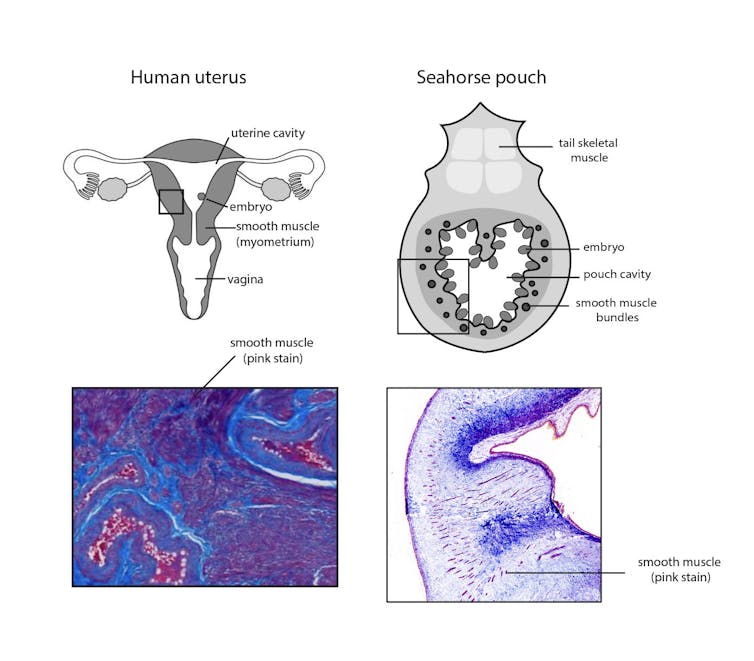
Using 3D imaging techniques combined with microscopy, we then compared the body structure of male and female pot-bellied seahorses.
In males, we found three bones positioned near the pouch opening, associated with large skeletal muscles. These types of bones and muscles control the anal fin in other fish species. In seahorses, the anal fin is miniscule and has little or no function in swimming.
So, the large muscles associated with the tiny seahorse fin are surprising. The anal fin muscles and bones are much larger in male seahorses than in female seahorses, and their orientation suggests they could control the opening of the pouch.
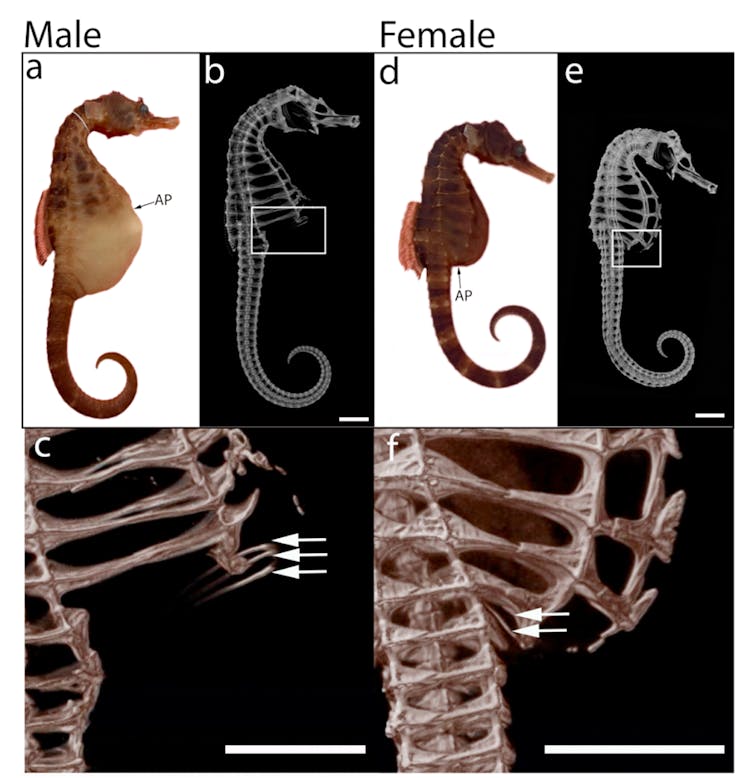
Seahorse Courtship Behaviour Provides A Clue
Seahorse courtship is an elaborate process. Males open and fill their pouch with water by bending forward and contracting their bodies to force water into the pouch, before “dancing” with the female.
Similarly, during labour, male seahorses bend their body towards the tail, pressing and then relaxing. This “pressing” behaviour is accompanied by brief gaping of the pouch opening, with a series of whole-body jerks. This movement combined with pouch opening allows seawater to flush through the pouch.
Jerking and pressing continues, the pouch opening gets gradually bigger, and groups of seahorse babies are ejected with each movement. Many hundreds of babies are ejected in a short time.
Our findings suggest the opening of the pouch for courtship and birth is facilitated by contractions of the large skeletal muscles located near the pouch opening. We propose that these muscles control the opening of the seahorse pouch, allowing seahorse fathers to consciously control the expulsion of their young at the end of pregnancy.
Future biomechanical and electrophysiological studies are needed to examine the force required to contract these muscles and test whether they do control the opening of the pouch.
Different Ways To Solve A Problem
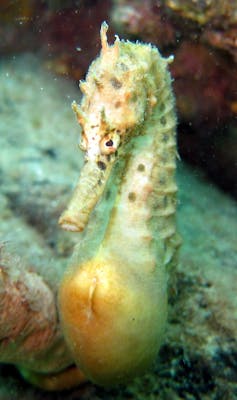
Our unexpected results suggest male seahorses use different mechanisms to give birth compared to female pregnant animals.
We speculate that oxytocin-family hormones, instead of primarily producing smooth muscle contractions, trigger the cascade of seahorse behaviours that lead to birth.
Despite the similarities that male seahorses share with female mammals and reptiles during pregnancy, it seems seahorse fathers have a unique way of giving birth to their young. ![]()
Jessica Suzanne Dudley, Postdoctoral Fellow in Evolutionary Biology, Macquarie University and Camilla Whittington, Senior Lecturer, Evolutionary Biology, University of Sydney
This article is republished from The Conversation under a Creative Commons license. Read the original article.
Marine Protected Areas In Antarctica Should Include Young Emperor Penguins
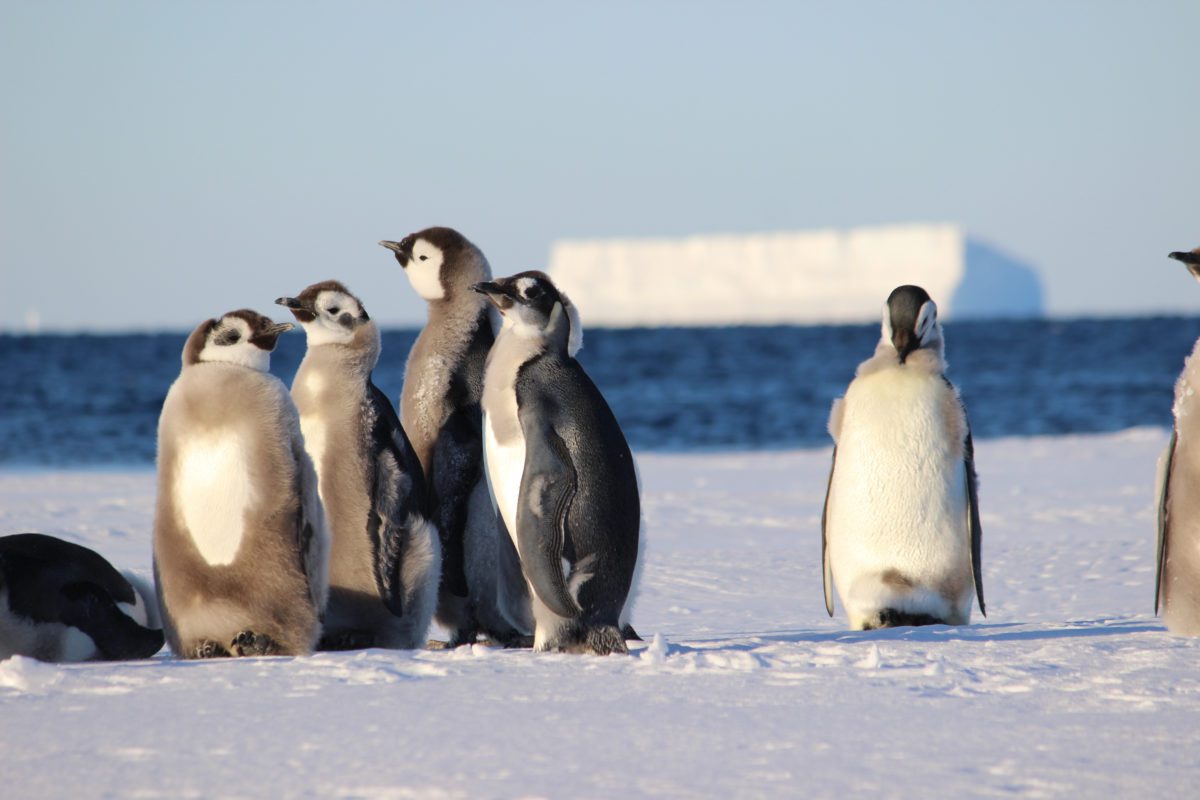
This spider-eating, nest-sharing bat was once safe from fire – until the Black Summer burnt its rainforests
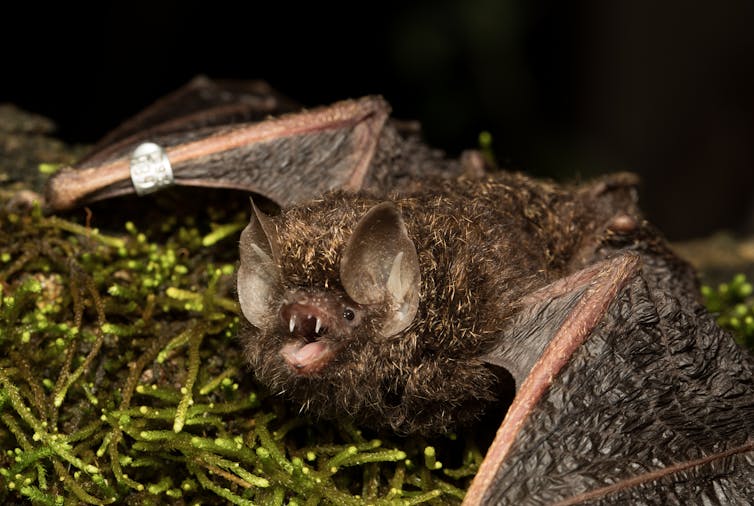
Am I not pretty enough? This article is part of The Conversation’s series introducing you to unloved Australian animals that need our help.
Golden-tipped bats are peculiar creatures. By night, they hunt the understorey for orb-weaving spiders, plucking them carefully from their sticky webs. By day, they roost in excavated basements at the bottom of nests made by two rainforest birds.
Unfortunately, while their rainforest nests usually keep them safe from fire, our new research found that’s no longer guaranteed. Rainforests grow in areas normally unburnt by fires. But ahead of the 2019/2020 Black Summer of fire, many of these areas had dried out, setting the stage for fires of unprecedented size and intensity. As a result, large areas of rainforest along the coasts of south-eastern Australia were badly burnt.
Our study confirms expert predictions that rainforest-dependent golden-tipped bats would be hard hit. We found the fires caused a large reduction in suitable habitat.
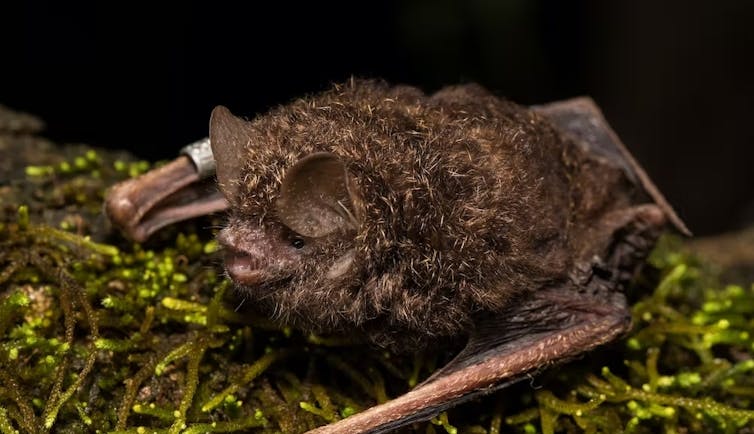
Why Is This Rainforest Bat So Special?
Like birds, Australia’s many bat species come in many different shapes and sizes. Some fly fast in open air while others fly slowly with great agility amongst cluttered vegetation. The delicate golden-tipped bat is a “clutter specialist”, hunting in the understorey and plucking its favourite orb-weaver spiders from their webs without getting caught. Its wings are optimised for slow, careful flight.
Amazingly, golden-tipped bats roost in chambers they dig out underneath the elaborate suspended nests of two birds, the yellow-throated scrubwren and brown gerygone. These birds make their nests in patches of moist vegetation, which infiltrates the dryer eucalypt forests along a network of gully lines, up and down Australia’s east coast.
The birds have the top bunk, and the tiny bats – all six grams of them – make room in the basement. The woolly, golden-coloured fur of the roosting bats matches their mossy bird-built homes.
These daytime rainforest refuges give these bats access to wet and dry forests, allowing them to forage more widely at night.
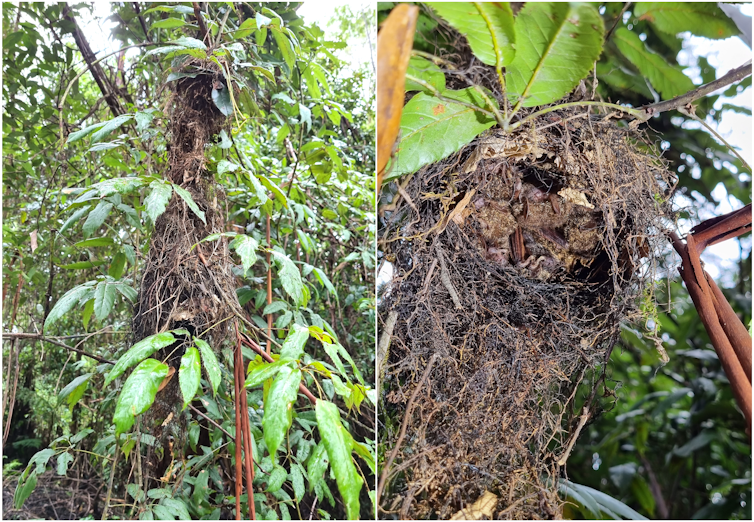
Why Are Fires Such Bad News In Rainforests?
Animals in fire-prone eucalypt forests have evolved mechanisms to cope with bushfires. But rainforest plants and animals have not had to learn these tricks. In rainforests, fire is a rare and destructive event.
Fire events classified as extreme occur infrequently (by definition) and we rarely have an opportunity to measure their impacts on forest wildlife. Climate change has been linked to increasingly dangerous fire weather conditions and more frequent extreme-level megafires in south-eastern Australia.
To find out what this means, our study measured the impact of the 2019/20 megafires on this bat.
What Did We Do?
A year after the fires, we set harp traps in rainforest sites ranging from badly burnt to entirely unburnt. Our goal was to understand if golden-tipped bats occurred at each site and to use these data to model the effects of the fire on habitat for this species.
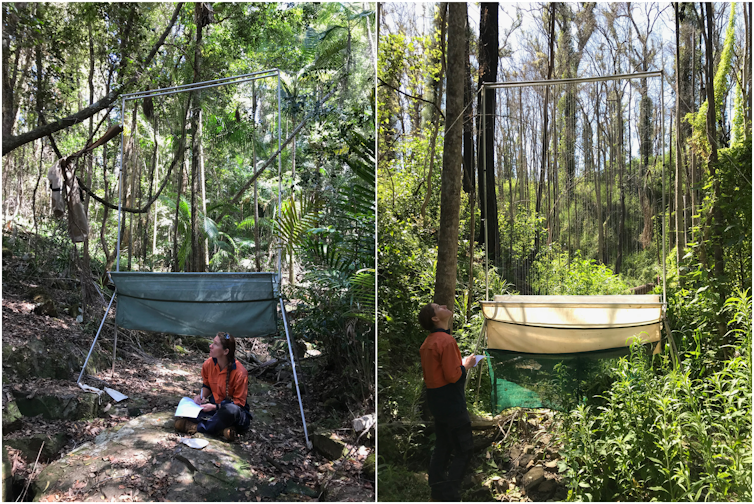
The result? At sites where high intensity fire had raged, we found modelled occupancy fell sharply from 90% to 20%. Even a year later, badly burnt rainforest was no longer used by this species.
At burnt sites there were also few scrubwrens and gerygones, and almost none of their nests. On the plus side, in unburnt rainforest, we captured 66 golden-tipped bats, showing this elusive and poorly studied species persists in reasonable numbers.
We attached tiny radio-transmitters to our captured bats to see how they moved and roosted in fire-affected habitat. Tracking bats across steep gullies of thick bush was hard work, as they moved almost daily to new roosts.
The bats chose their roosts in unburnt patches, which wasn’t surprising given that their preferred bird nests were readily consumed by fire. Their avoidance of burnt areas could suggest movements will be limited across fire-affected landscapes.
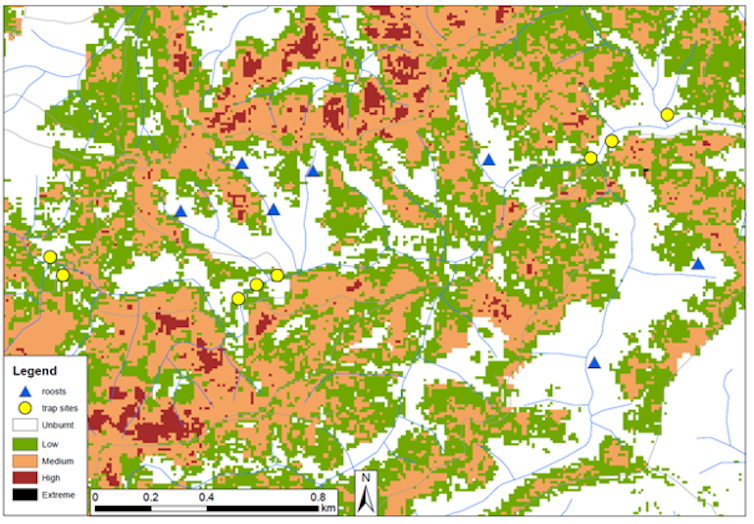
Our study also tested whether a humble mop head could act as a stop-gap roost for these bats until the scrubwrens and gerygones could return and build new nests.
Why mops? Because these bats have previously been found roosting in an old mop head.
So far, we haven’t recorded them making use of the mops but we will continue to monitor them over the coming breeding season.

What Happens If Extreme Fires Become Common?
In many dry eucalypt forests, corridors of rainforest following gullies and creeks offer vital food and shelter for wildlife like the golden-tipped bat, significantly increasing local biodiversity.
Climate change poses a threat to rainforest-dependent wildlife in south-eastern Australia, by drying out soils, intensifying drought and increasing severe fire weather. Combined, these make it possible for unburnt rainforest to go up in flames.
Animals that rely on rainforests are not adapted to cope with fire. Increases in frequency of extreme fire events as the world warms will cause major disruption to the forests of south-eastern Australia.
George Madani and Anna Lloyd contributed to this research.![]()
Christopher Turbill, Senior Lecturer in Animal Ecology, Western Sydney University and Brad Law, Principal Research Scientist at NSW Primary Industries and Adjunct Fellow, Queensland University of Technology
This article is republished from The Conversation under a Creative Commons license. Read the original article.
Labor’s biodiversity market scheme needs to be planned well – or it could lead to greenwashing
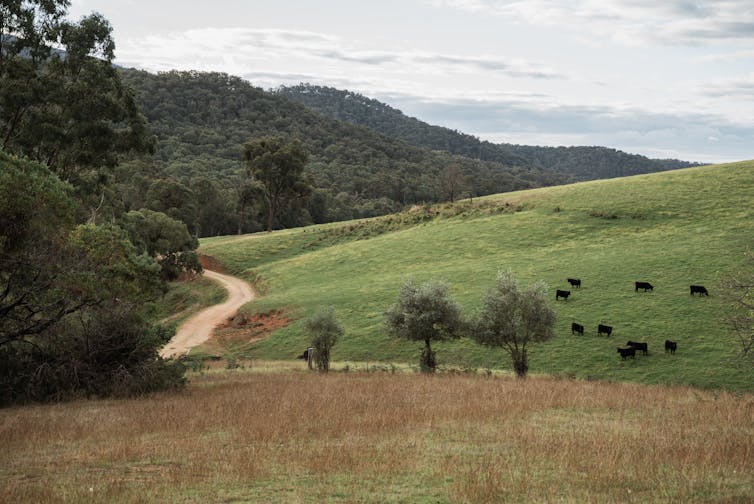
Businesses and philanthropic organisations are looking to invest in projects to protect and restore nature. We need to make this easier.
Which major political party’s minister said this? If you guessed Labor, correct – it was environment minister Tanya Plibersek last week. But the phrase is strikingly similar to one made by the Coalition’s David Littleproud.
In fact, Labor’s proposed biodiversity market borrows heavily from the previous government’s approach. In brief, landholders would be able to buy and sell biodiversity certificates. A farmer seeking to clear land could buy a certificate created by another farmer who has restored native vegetation elsewhere.
The federal government should tread very carefully here. New South Wales’ environmental offset scheme has been slammed for failing to do what it was meant to do, and with the major problems in Australia’s carbon offset program.
If not designed well, schemes like this can very easily be gamed and fail to actually achieve their goals.
Passing The Baton
In February this year, the Morrison government introduced a bill aimed at creating a market for farmers to boost biodiversity on their land. It was heralded as a world first – but that is not quite true.
While both the Coalition and Labor governments want to claim credit for the invention of the scheme, similar biodiversity schemes have been introduced in other countries. The United Kingdom and Canada have matched market-based approaches with policies aimed at ensuring a biodiversity net gain. That is, any biodiversity loss through development must be offset with certificates that represent an even greater biodiversity gain. That is the theory at least.
The Coalition’s proposed market was designed to reward landholders on farmland with a tradeable certificate when they agreed to undertake projects to protect and enhance native species. These certificates can be sold to a third party, who may use them to compensate for biodiversity loss through development or to support their sustainability goals.
Just six months later, Labor announced a seemingly very similar proposal, though details are currently sparse. We do know Labor’s version is intended to eventually be funded largely by the corporate sector.

This Approach Could Help – But Only If Planned Properly
One key difference is the scale. Prime Minister Anthony Albanese made it clear the market would be open to all land managers, whether farmers, conservationists looking to re-wild land, or Indigenous land managers.
Although the government suggests the scheme would operate in a similar way to existing carbon credit legislation, the rhetoric indicates certificates may not only compensate for projects which cause biodiversity loss, but allow corporations to meet their environmental, social and governance goals. This is potentially legitimate, but could also be used for greenwashing.
The problem is, offsets don’t always work. In the environment sector, offsets are seen as a measure of last resort, which can – depending on the specific transaction – actually lead to an overall loss of species or habitat.
The government must learn from the integrity questions around Australia’s carbon credit scheme.
For a biodiversity market to be effective, you need available land and willing participants, who expect a positive return on investment. That means the price for certificates has to be worth the cost of actually doing restoration work.
And the government must ensure the scheme is watertight, given the major integrity and transparency issues in the carbon credit scheme called out by whistleblowers and academics.
To avoid this, it is vital these biodiversity certificates represent provable biodiversity gains and that the details of these gains are known to any purchasers. Buyers will be a lot more confident if they know the certificates they are buying come from, say, a farmer restoring native vegetation along a previously cleared creek.
The government is aware of this. They are still deciding how best to measure and verify biodiversity benefits. This will be one of the greatest challenges of introducing this scheme.
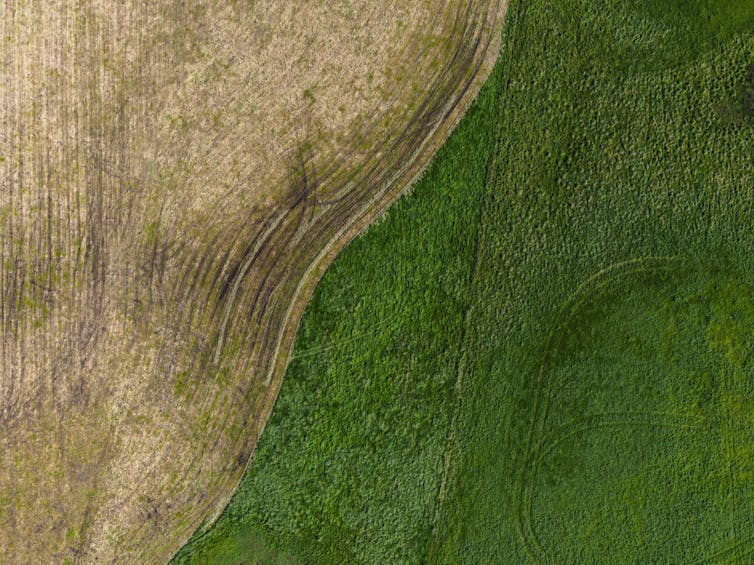
A Biodiversity Market Cannot Stop Degradation By Itself
Sceptical commentators claim environmental markets are a false solution to a serious ecological emergency. This is true, if we rely on the market approach in isolation.
A biodiversity market is not a silver bullet to our many serious and overlapping environmental problems. Improving the outlook for our many ailing species and ecosystems will require work on many fronts, such as funding protected areas, working to bring back threatened species, tackling land clearing, working on carbon banking and accelerating climate action.
To give the scheme teeth, Australia should look to the UK and Canadian approach of requiring a net environmental gain on a national level.
Many Australian states already require no net loss of biodiversity from developments and policies. Even so, these policies have not always stopped large scale land clearing due to exemptions. Similarly, the loss of one habitat is not always compensated by gain of another habitat. Labor must tighten up these loopholes.
We must see this biodiversity market scheme clearly. It is only one method of improving environmental outcomes in this country. We’ll need many more.
.![]()
Felicity Deane, Associate Professor, Queensland University of Technology
This article is republished from The Conversation under a Creative Commons license. Read the original article.
‘One of the most progressive and environmentally conscious legal texts on the planet’: Chile’s proposed constitution and its lessons for Australia
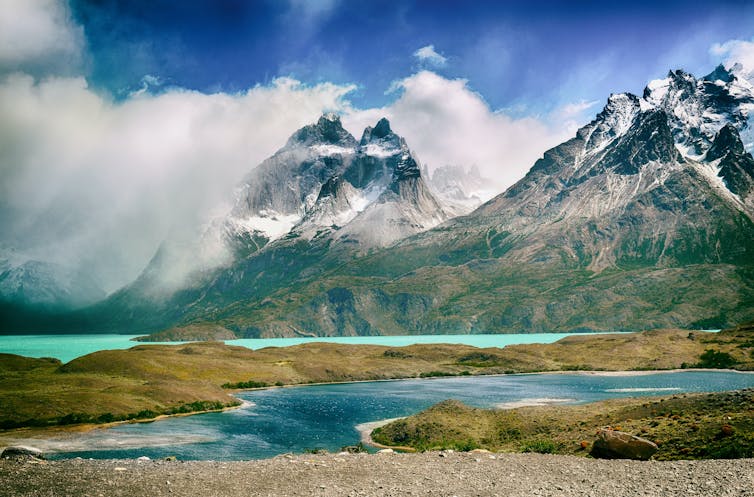
Chile may soon be the second country in the world to grant constitutional rights to nature, under astoundingly progressive reforms proposed by the government. If approved in the national referendum on 4 September, the new constitution would deliver profound changes to the country.
It’s no surprise that 50 of the 387 constitutional provisions concern the environment. Like Australia, Chile is facing mounting environmental pressures. This includes an escalating water crisis made significantly more challenging by the mining industry, long seen as a key pillar of the economy.
The proposed constitution seeks to rapidly pivot Chile toward ecological democracy, one that can transition an economy long dependent on mineral extraction toward cleaner, less resource-intensive, and more socially just forms of living – _buen vivir_.
While the votes aren’t yet in, there are valuable lessons in this process for Australia and other countries grappling with similar concerns.
An Era Of Change
This era of constitutional change began in 2019, when over one million Chileans took to the streets to voice their discontent over economic and social conditions in the country.
Initially unstructured and spontaneous, the protests were sparked by an increase in public transport costs, but quickly coalesced into a widespread constitutional crisis.
This crisis was an outcry against the deeply entrenched socio-economic inequalities seen as rooted in and perpetuated by the country’s legal framework. This is a legacy of the Pinochet dictatorship (1973-1990), which saw soaring wealth inequalities and power concentrated in the hands of business elites and private corporations.
In the face of both social and ecological breakdown, further intensified by the arrival of COVID-19, over 80% of Chileans voted in favour of re-writing the constitution in 2020.
In May 2021, a constitutional convention was elected, formed by 155 representatives from across the country. Notably, 50% of them were women, and it was led by Mapuche linguist and Indigenous rights activist Elisa Loncón.
In July 2022, the convention delivered the much-anticipated draft constitution, which was immediately heralded by supporters as an “ecological constitution”.
What Are The Reforms?
Over the last decade, both Ecuador and Bolivia have been at the global forefront of advocating for the “rights of nature” or “the rights of Mother Earth”. These rights have made it possible to bring cases on behalf of ecosystems into courts, and to challenge the extractive imperatives of state ministries.
The proposed changes to Chile’s constitution build on these experiments, but take them considerably further.
Not only would Chile become the second nation after Ecuador to grant nature constitutional rights, they would also create an “ombudsman for nature” tasked with monitoring and enforcing them. According to the draft text, it would be the duty of the “state and society to protect and respect these rights”.
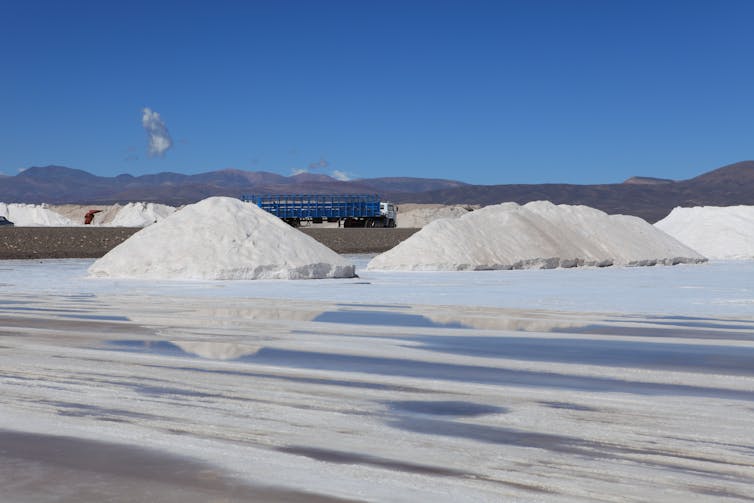
Citizens would also be empowered to bring environmental lawsuits, even before an environmental impact assessment has been approved. The monitoring of these rights would extend all the way down to the local level, decentralising environmental regulatory authority that has historically been concentrated in the capital of Santiago.
But perhaps even more significant are the proposals aiming to reverse another legacy of the Pinochet dictatorship: Chile’s decades-long privatisation of water.
Chile is in an unprecedented water crisis, with over half of its 19 million people living in areas of severe water scarcity. Communities have fought numerous legal battles against extractive companies over a water allocation system that’s strongly biased toward industry.
Articles in the proposed constitution concerning water rights, the human rights of water, and the protection of glaciers and wetlands significantly roll back these trends. They declare that water is not a commodity but, instead, incomerciable or “unsellable”.
Overturning this decades-long controversial market mechanism is the direct result of involving social and Indigenous movements in the constitutional process. It reflects and affirms their often-repeated recognition that Agua es vida, or “water is life”.
Beyond enshrining water protection measures, the draft constitution represents a renewed effort to bolster Chile’s natural resources governance, a move with significant impacts on the mining industry. It specifies that exploration and exploitation of mineral resources should ensure environmental protection and the interest of future generations.
There are also requirements to ensure sustainable management of land sites after a mine has closed, and for the promotion of value chain linkages (where mineral processing occurs in the country and benefits its people).
Such considerations are particularly crucial for the global transition towards renewable energy, which poses high demands on Chile’s copper and lithium industry, minerals used for energy storage.
The global rush for these minerals is increasing governance challenges and putting pressure on communities already under environmental and water stress. Strong legal support for a more equitable, fair and sustainable governance framework is imperative.
Lessons For The World
Many questions remain about how these reforms would be put into practice. Nevertheless, they represent the culmination of dialogue between sectors that have historically been excluded from political power.
Australia has much to learn from this process. Most important, perhaps, is that despite the resistance of pro-market sectors, including the mining industry, sweeping and rapid transformations are indeed imaginable in the climate crisis. Other worlds are possible. Other forms of democratic practices are possible.
Addressing climate change while ensuring a sustainable energy transition with inter-generational and inter-cultural equity means prioritising the voices of those who have been systematically excluded – particularly Indigenous communities. Australia would do well to heed this lesson.
And the lessons aren’t just for Australia. While many countries have reluctantly acknowledged the climate emergency that continues to engulf us, Chile is nearly alone globally in acting with the sense of urgency required. What it has already achieved is historic.
From an outcry in the streets to the election of an outstandingly diverse constitutional convention, Chile has crafted one of the most progressive and environmentally conscious legal texts on the planet. Chile’s experience demonstrates that bold, just, and democratic action is not only possible, but necessary.![]()
Ana Estefanía Carballo, Honorary Research Fellow in Mining and Society, School of Geography, Earth and Atmospheric Sciences, The University of Melbourne and Erin Fitz-Henry, Deputy Coordinator - Anthropology, Development Studies & Social Theory, The University of Melbourne
This article is republished from The Conversation under a Creative Commons license. Read the original article.
What’s going on with the Greenland ice sheet? It’s losing ice faster than forecast and now irreversibly committed to at least 10 inches of sea level rise
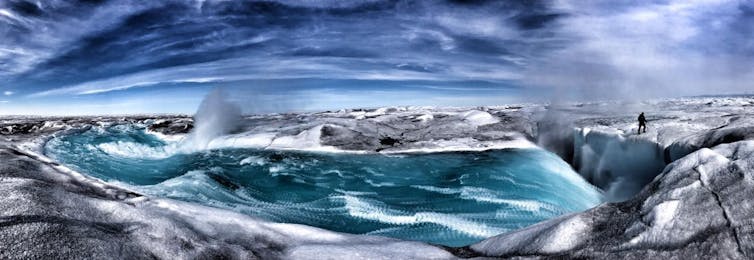
I’m standing at the edge of the Greenland ice sheet, mesmerized by a mind-blowing scene of natural destruction. A milewide section of glacier front has fractured and is collapsing into the ocean, calving an immense iceberg.
Seracs, giant columns of ice the height of three-story houses, are being tossed around like dice. And the previously submerged portion of this immense block of glacier ice just breached the ocean – a frothing maelstrom flinging ice cubes of several tons high into the air. The resulting tsunami inundates all in its path as it radiates from the glacier’s calving front.
Fortunately, I’m watching from a clifftop a couple of miles away. But even here, I can feel the seismic shocks through the ground.
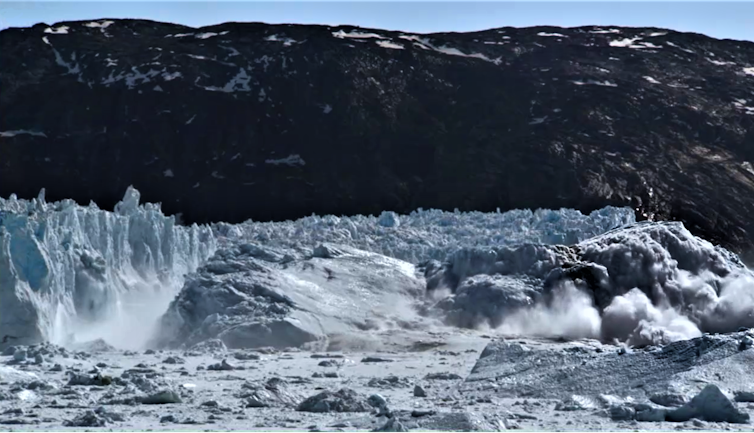
Despite the spectacle, I’m keenly aware that this spells yet more unwelcome news for the world’s low-lying coastlines.
As a field glaciologist, I’ve worked on ice sheets for more than 30 years. In that time, I have witnessed some gobsmacking changes. The past few years in particular have been unnerving for the sheer rate and magnitude of change underway. My revered textbooks taught me that ice sheets respond over millennial time scales, but that’s not what we’re seeing today.
A study published Aug. 29, 2022, demonstrates – for the first time – that Greenland’s ice sheet is now so out of balance with prevailing Arctic climate that it no longer can sustain its current size. It is irreversibly committed to retreat by at least 59,000 square kilometers (22,780 square miles), an area considerably larger than Denmark, Greenland’s protectorate state.
Even if all the greenhouse gas emissions driving global warming ceased today, we find that Greenland’s ice loss under current temperatures will raise global sea level by at least 10.8 inches (27.4 centimeters). That’s more than current models forecast, and it’s a highly conservative estimate. If every year were like 2012, when Greenland experienced a heat wave, that irreversible commitment to sea level rise would triple. That’s an ominous portent given that these are climate conditions we have already seen, not a hypothetical future scenario.
Our study takes a completely new approach – it is based on observations and glaciological theory rather than sophisticated numerical models. The current generation of coupled climate and ice sheet models used to forecast future sea level rise fail to capture the emerging processes that we see amplifying Greenland’s ice loss.
How Greenland Got To This Point
The Greenland ice sheet is a massive, frozen reservoir that resembles an inverted pudding bowl. The ice is in constant flux, flowing from the interior – where it is over 1.9 miles (3 kilometers) thick, cold and snowy – to its edges, where the ice melts or calves bergs.
In all, the ice sheet locks up enough fresh water to raise global sea level by 24 feet (7.4 meters).
Greenland’s terrestrial ice has existed for about 2.6 million years and has expanded and contracted with two dozen or so “ice age” cycles lasting 70,000 or 100,000 years, punctuated by around 10,000-year warm interglacials. Each glacial is driven by shifts in Earth’s orbit that modulate how much solar radiation reaches the Earth’s surface. These variations are then reinforced by snow reflectivity, or albedo; atmospheric greenhouse gases; and ocean circulation that redistributes that heat around the planet.
We are currently enjoying an interglacial period – the Holocene. For the past 6,000 years Greenland, like the rest of the planet, has benefited from a mild and stable climate with an ice sheet in equilibrium – until recently. Since 1990, as the atmosphere and ocean have warmed under rapidly increasing greenhouse gas emissions, Greenland’s mass balance has gone into the red. Ice losses due to enhanced melt, rain, ice flow and calving now far exceed the net gain from snow accumulation.
What Does The Future Hold?
The critical questions are, how fast is Greenland losing its ice, and what does it mean for future sea level rise?
Greenland’s ice loss has been contributing about 0.04 inches (1 millimeter) per year to global sea level rise over the past decade.
This net loss is split between surface melt and dynamic processes that accelerate outlet glacier flow and are greatly exacerbated by atmospheric and oceanic warming, respectively. Though complex in its manifestation, the concept is simple: Ice sheets don’t like warm weather or baths, and the heat is on.
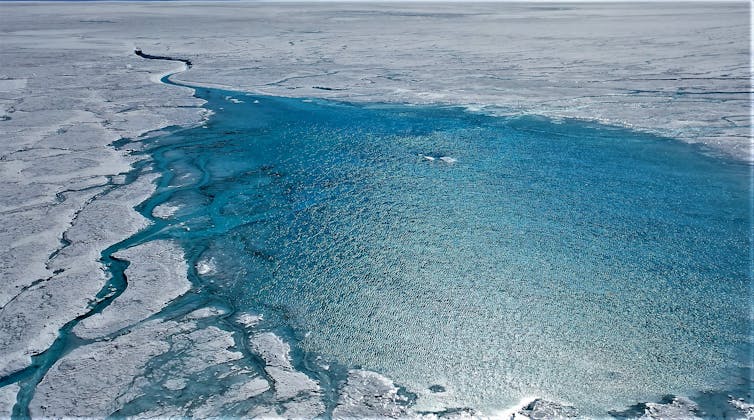
What the future will bring is trickier to answer.
The models used by the Intergovernmental Panel on Climate Change predict a sea level rise contribution from Greenland of around 4 inches (10 centimeters) by 2100, with a worst-case scenario of 6 inches (15 centimeters).
But that prediction is at odds with what field scientists are witnessing from the ice sheet itself.
According to our findings, Greenland will lose at least 3.3% of its ice, over 100 trillion metric tons. This loss is already committed – ice that must melt and calve icebergs to reestablish Greenland’s balance with prevailing climate.
We’re observing many emerging processes that the models don’t account for that increase the ice sheet’s vulnerability. For example:
Increased rain is accelerating surface melt and ice flow.
Large tracts of the ice surface are undergoing bio-albedo darkening, which accelerates surface melt, as well as the impact of snow melting and refreezing at the surface. These darker surfaces absorb more solar radiation, driving yet more melt.

Warm, subtropical-originating ocean currents are intruding into Greenland’s fjords and rapidly eroding outlet glaciers, undercutting and destabilizing their calving fronts.
Supraglacial lakes and river networks are draining into fractures and moulins, bringing with them vast quantities of latent heat. This “cryo-hydraulic warming” within and at the base of the ice sheet softens and thaws the bed, thereby accelerating interior ice flow down to the margins.
The Issue With Models
Part of the problem is that the models used for forecasting are mathematical abstractions that include only processes that are fully understood, quantifiable and deemed important.
Models reduce reality to a set of equations that are solved repeatedly on banks of very fast computers. Anyone into cutting-edge engineering – including me – knows the intrinsic value of models for experimentation and testing of ideas. But they are no substitute for reality and observation. It is apparent that current model forecasts of global sea level rise underestimate its actual threat over the 21st century. Developers are making constant improvements, but it’s tricky, and there’s a dawning realization that the complex models used for long-term sea level forecasting are not fit for purpose.
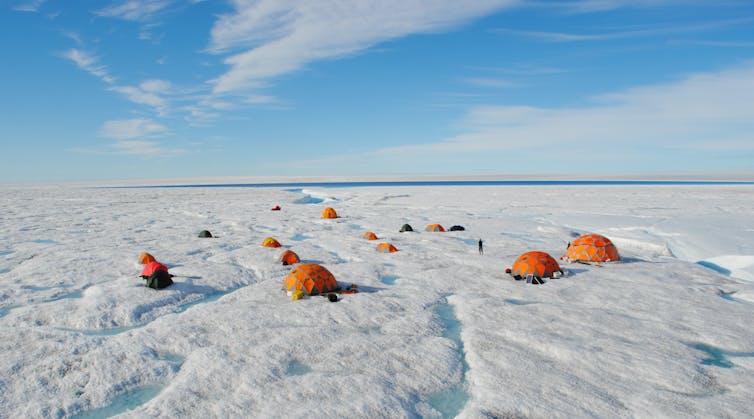
There are also “unknown unknowns” – those processes and feedbacks that we don’t yet realize and that models can never anticipate. They can be understood only by direct observations and literally drilling into the ice.
That’s why, rather than using models, we base our study on proven glaciological theory constrained by two decades of actual measurements from weather stations, satellites and ice geophysics.
It’s Not Too Late
It’s an understatement that the societal stakes are high, and the risk is tragically real going forward. The consequences of catastrophic coastal flooding as sea level rises are still unimaginable to the majority of the billion or so people who live in low-lying coastal zones of the planet.
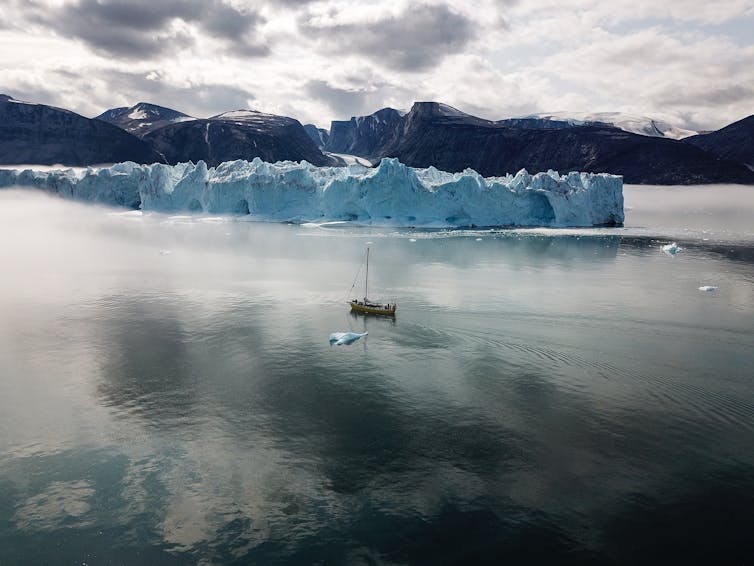
Personally, I remain hopeful that we can get on track. I don’t believe we’ve passed any doom-laden tipping point that irreversibly floods the planet’s coastlines. Of what I understand of the ice sheet and the insight our new study brings, it’s not too late to act.
But fossil fuels and emissions must be curtailed now, because time is short and the water rises – faster than forecast.![]()
Alun Hubbard, Professor of Glaciology, Arctic Five Chair, University of Tromsø
This article is republished from The Conversation under a Creative Commons license. Read the original article.
7-star housing is a step towards zero carbon – but there’s much more to do, starting with existing homes

Energy-efficiency standards for new homes in Australia are being upgraded for the first time in a decade. New homes will be required to improve minimum performance from 6 stars to 7 stars under the Nationwide House Energy Rating Scheme (NatHERS). Federal, state and territory building ministers agreed on the change last Friday.
The rating will also use a whole-of-home energy “budget”. This will allow homes to meet the new standard in different ways. The standard will come into force in May 2023, and all new homes will have to comply by October 2023.
On Monday, the NSW government also announced large commercial developments, as well as big state projects, will have to submit a “net-zero statement” to gain planning approval. The statement must show their buildings are either all-electric or can fully convert to renewable energy by 2035. In addition, new homes and renovations will have to reach a 7-star rating under the state’s Building Sustainability Index (BASIX). The current minimum is 5.5 stars.
These upgrades represent a step in the right direction, but much more remains to be done to future-proof Australian homes. Buildings account for about 20% of the nation’s emissions. Further upgrades to the National Construction Code (NCC) are needed before 2030 to achieve Australia’s climate targets.
We’re Still Short Of Zero-Carbon Buildings
Across Australia, more than 5.5 million houses are predicted to be built between 2023 and 2050. The upgraded construction code means they will perform better in climate extremes and emit less carbon.
So this long-overdue change is good news for households and the planet. It means new houses will use an average of 24.5% less energy to keep warm and cool. And new condensation provisions will help to control mould growth, a health problem for tightly sealed homes with poor ventilation.
The International Energy Agency recommends advanced economies such as Australia have a “zero-carbon-ready building code” in place by the end of the 2020s. This would ensure all new buildings in the 2030s will be zero or near-zero carbon.
Governments around the world have already moved in this direction, including the European Union and California. Australia is still well behind international best practice in design and construction.
Best-in-class energy efficiency, full electrification and renewable energy supply will be crucial to fully decarbonise the building sector. Further updates to the National Construction Code in 2025 and 2028 will need to ensure Australia implements a “zero-carbon-ready” building code by 2030. Only then can Australia deliver on its legislated climate targets and protect Australians from a warming climate and higher energy prices.
Cost Arguments Against Further Upgrades Don’t Stack Up
Australia can’t wait another decade to upgrade building standards again. Arguments against higher standards tend to focus on the ticket price of new houses, but most homes are bought with mortgage loans and monthly repayments.
Higher standards would reduce energy consumption to near zero, providing a buffer against energy price spikes and increases. Low or negative energy bills (as a result of payments for exporting electricity) will largely offset the initial cost of building better-performing homes. Households will also be less vulnerable to wider climatic events such as heatwaves.
A cornerstone of the policy-making process is cost-benefit analysis undertaken by government. The analysis behind the NCC update failed to fully grasp the economic, social and environmental benefits of higher standards.
Cost-benefit guidelines, which are set by the Office of Best Practice Regulation, should be reviewed. Any analysis must properly reflect costs and benefits over the lifetime of a home, including the impacts of reduced energy and health bills on mortgage repayments. Ensuring further changes to the NCC accurately represent the full benefits will be critical to avoid another decade of stalled action.
Banks have already started to recognise the value of sustainable housing. Their lowest mortgage rates are for new green homes.
What About All The Existing Homes?
While ensuring all new buildings are built to zero-carbon standards after 2030 will be important, improving the quality and performance of the majority of Australia’s 10.9 million homes is equally if not more important. Existing building stocks are inadequate – most housing was built before energy performance standards existed.
A major wave of retrofitting is needed to upgrade these homes. Deeper upgrades can be done during renovations to deliver improved performance, safe indoor temperatures and lower energy use and bills.
Existing Australian homes for the most part rate below 2 stars in energy performance. Their occupants experience extremes of temperature during summer and in winter in areas such as Melbourne, Canberra, Adelaide and Tasmania.
Extreme hot and cold are harmful to human health. The impacts are greatest for people on low incomes and/or who rent.
We have many examples of how to cost-effectively retrofit housing. These changes can have significant impacts on household bills and health.
Retrofitting will be more resource-efficient than demolishing and rebuilding. It will also retain the architectural and heritage value of our cities and suburbs.
However, a number of measures will be required to retrofit housing on the scale needed. These include financial incentives from banks, government subsidies, minimum requirements at point of sale, minimum rental standards, education of landlords, etc.
Net-Zero Code And Retrofitting Should Be Top Of The Agenda
Australian building ministers are due to meet again early next year. They must quickly turn their attention to ensuring the 2025 and 2028 upgrades pave the way to a zero-carbon-ready building code by 2030.
Governments should also work towards a national retrofit wave strategy that aims for a step change in the energy performance of existing homes. Essential elements of the strategy include the introduction of mandatory disclosure of home energy performance and the full electrification of Australian homes.
Without such changes, Australian housing and households risk being locked into poor-quality, under-performing and costly housing for decades.![]()
Gill Armstrong, Senior Project Manager – Buildings, Climateworks Centre; Alan Pears, Senior Industry Fellow, RMIT University; Margot Delafoulhouze, Cities System Lead, Climateworks Centre, and Trivess Moore, Senior Lecturer, School of Property, Construction and Project Management, RMIT University
This article is republished from The Conversation under a Creative Commons license. Read the original article.
The ‘yuck factor’ pushes a premier towards desalination yet again, but history suggests recycled water’s time has come
Margaret Cook, University of the Sunshine Coast; Andrea Gaynor, The University of Western Australia; Lionel Frost, Monash University; Peter Spearritt, The University of Queensland, and Ruth Morgan, Australian National UniversityA battle is brewing in South-East Queensland over water. Despite heavy rains and flooding, the water supply authority, Seqwater, has flagged the need to find more water sources to keep up with urban growth.
Premier Annastacia Palaszczuk has already expressed a preference for building a desalination plant on the Sunshine Coast instead of using recycled water. Perhaps her government wants to avoid a repeat of the divisive 2006 debate over water recycling in Toowoomba – dubbed “Poowoomba” at the time.
Our new book, Cities in a Sunburnt Country, traces the fraught history with recycled water in Australia’s biggest cities. A focus on expanding capacity to extract or produce more potable water has dominated urban water policy in Australia. City residents have come to expect abundant water from sources they perceive as “pure”: dams, aquifers and desalination.
Continuing down this path is not sustainable. Yet once again a state government looks set to pursue the costly, energy-intensive desalination option.
A History Of Being Diverted By Desalination
Desalination has been a reassuring project in times of crisis, but has not always proven its value. In response to the impacts on city water supplies of the Millennium Drought (2001–09), desalination plants were built to supply most of the capital cities.
In 2006, Perth residents became the first in Australia to drink desalinated seawater. By 2012, desalination plants had been built to supply Sydney, Melbourne, Adelaide and Brisbane.
A 2005 poll commissioned by “SCUD” (Sydney Community United against Desalination) found 60% of Sydney residents opposed a desalination plant. The following year a parliamentary inquiry concluded such a plant would not be needed if the government pursued water recycling and reuse strategies. The plant was still built.
The Victorian government also faced a backlash when it announced in 2007 a privately financed plant near Wonthaggi on the Bass Coast. Completed in 2012, the plant was mothballed until 2017.
There Are Better Alternatives
In 2011 the Productivity Commission found only some desalination infrastructure was justified. Other projects could have been deferred, made smaller, or replaced by lower-cost sources, including recycled water.
During the Millennium Drought, the Beattie government built the Brisbane Water Grid connecting all major dams in South East Queensland. By 2008, the 600km network of pipelines was connected to the A$2.9 billion Western Corridor Recycled Water Scheme. The state-owned desalination plant at Tugun on the Gold Coast was completed a year later.
Queensland had opted for a desal quick fix. The government went for the high-cost, high-energy and high-emissions road, instead of more sustainable approaches to potable water supplies and climate change. Today, while South-East Queensland’s population and water use continue to grow, the recycled water scheme only provides water for industry.
Recycled Water Is A Well-Proven Approach
Cities worldwide commonly use recycled wastewater to add to drinking water supplies, including Los Angeles, Singapore and London. Most residents of Australian cities are also drinking some treated wastewater. Hinterland towns discharge treated wastewater into rivers that eventually flow into dams such as Warragamba and Wivenhoe (which supply Sydney and Brisbane respectively).
In 2018, the Productivity Commission’s National Water Reform Report recommended an integrated approach that included reusing urban wastewater and/or stormwater. Implementation has been slow, however. Only one Australian capital has officially overcome the “yuck factor”.
Perth stores treated wastewater in aquifers beneath the suburbs before returning it to the city’s taps. The state-owned Water Corporation’s 50-year plan, Water Forever, includes a 60% increase in wastewater recycling. Even then the state’s main strategy for eliminating the gap between future water demand and supply is desalination, despite strong community support for large-scale recycling.
In Adelaide and Brisbane, wastewater and stormwater are treated and reused only for industry, irrigation and energy production. As the Millennium Drought fades from public memory, state governments have also retreated from attempts to encourage household water tanks.
By 2050 as many as 10 million extra people may live in Australia’s capital cities. All of them will expect a reliable supply of clean water inside and outside their homes.
Our book shows how governments have historically favoured development of new water sources or desalination over recycling or demand management. These approaches do little to help us learn to use water more wisely in our cities and suburbs. Recycled water, education campaigns and demand management must play a greater role in securing future water supplies.![]()
Margaret Cook, Lecturer in History, University of the Sunshine Coast; Andrea Gaynor, Professor of History, The University of Western Australia; Lionel Frost, Associate Professor of Economics, Monash University; Peter Spearritt, Emeritus Professor, School of Historical and Philosophical Inquiry, The University of Queensland, and Ruth Morgan, Associate Professor of History, Australian National University
This article is republished from The Conversation under a Creative Commons license. Read the original article.
A new discovery shows major flowering plants are 150 million years older than previously thought
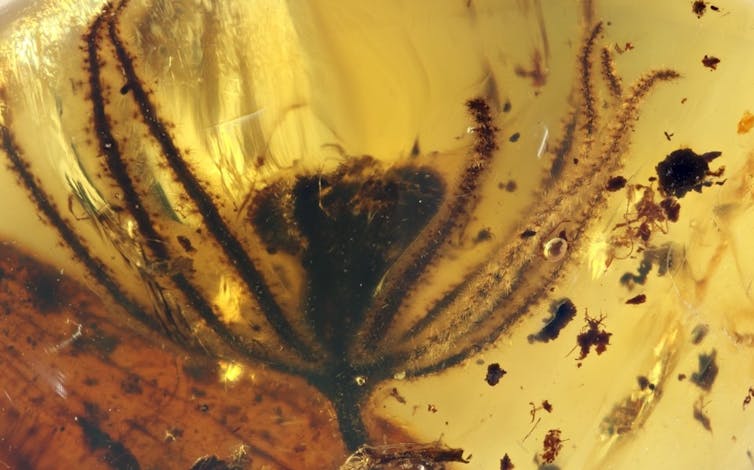
A major group of flowering plants that are still around today, emerged 150 million years earlier than previously thought, according to a new study published today in Trends in Plant Science. This means flowering plants were around some 50 million years before the dinosaurs.
The plants in question are known as the buckthorn family or Rhamnaceae, a group of trees, shrubs and vines found worldwide. The finding comes from subjecting data on 100-million-year old flowers to powerful molecular clock techniques – as a result, we now know Rhamnaceae arose more than 250 million years ago.
A Widespread Family
Today, the buckthorn family of shrubs is widespread throughout Africa, Australia, North and South America, Asia and Europe. The important fruit jujube or Chinese date belongs to the Rhamnaceae; other species are used in ornamental horticulture, as sources of medicine, timber and dyes, and to add nitrogen to the soil.
Flowering shoots of the shrub Phylica, now confined to South Africa, have recently been found in amber from Myanmar that is more than 100 million years old.
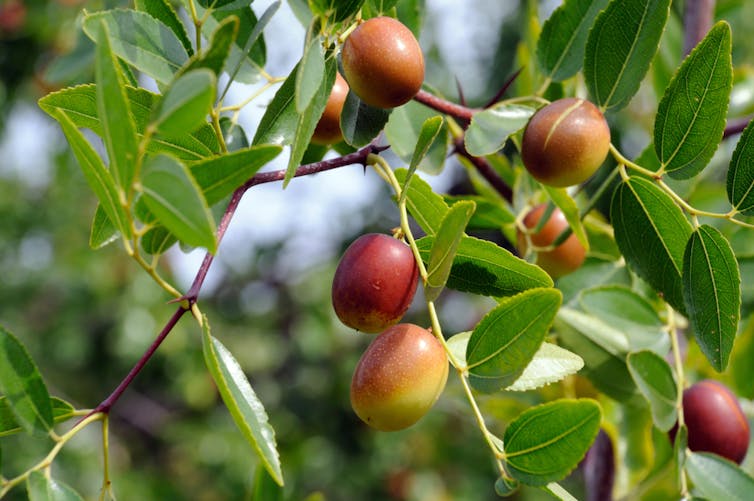
Together with Tianhua He, a molecular geneticist at Murdoch University, we combined skills to show these new fossils of Phylica could be used to trace the Rhamnaceae family (to which Phylica belongs) back to its origin almost 260 million years ago.
We did this by comparing the DNA of living plants of Phylica against the rate of DNA change over the past 120 million years, to set the molecular clock for the rest of the family.
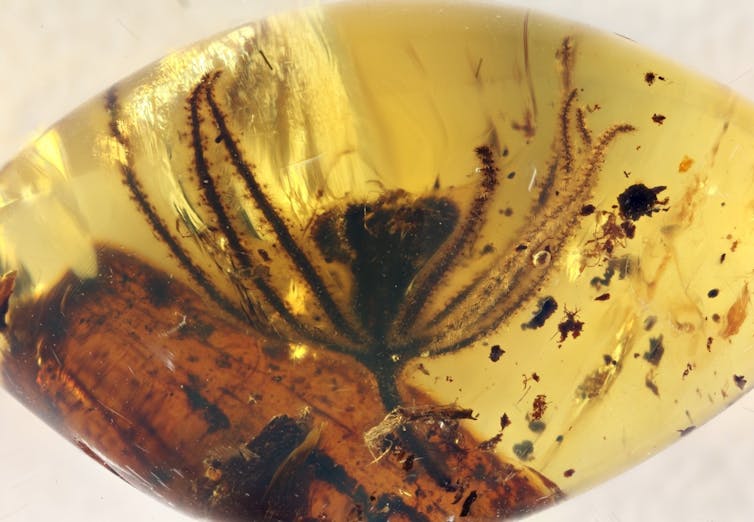
Older Than We Could Have Imagined
It was previously believed that Phylica evolved about 20 million years ago and Rhamnaceae about 100 million years ago, so these new dates are much older than botanists could possibly have imagined. Since Rhamnaceae is not even considered an old member of the flowering plants, this means flowering plants arose more than 300 million years ago – some 50 million years before the rise of the dinosaurs.
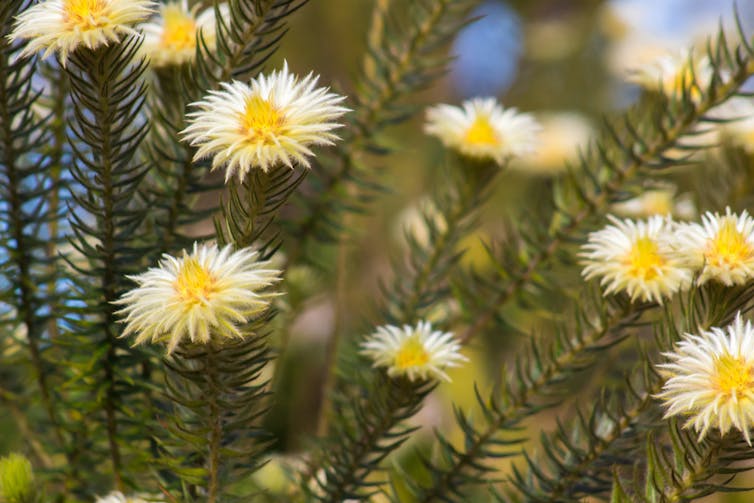
But how did Phylica get from the Cape of South Africa to Myanmar? Our data on the history of the plant’s evolution show the most likely path is that Phylica migrated to Madagascar, then to the far north of India (most of which is under the Himalayas now), all of which were joined 120 million years ago.
India then separated and drifted north until it collided with Asia. The far northeast section, known as the Burma tectonic plate, became Myanmar about 60 million years ago. Sap, possibly released by fire-injured conifers, flowed over the Phylica flowers and preserved them intact as amber while India was still attached to Madagascar.
Forged In Fires
In fact, the vegetation in which Rhamnaceae evolved was probably subjected to regular fires. The first clue was the charcoal researchers have found together with the Phylica fossils in the amber.
The second is that today, almost all living species in the Phylica subfamily have hard seeds that require fire to stimulate them to germinate.
I assessed the fire-related traits of as many living species as possible, then He traced them onto the evolutionary tree he had created, using a technique called ancestral trait assignment. This showed there was a strong possibility the earliest Rhamnaceae ancestor was fire-prone and produced hard seeds.
We have extensively studied the evolutionary fire history of banksias, which go back 65 million years, along with proteas, pines, wire rushes and the kangaroo paw family.
Our new results make the buckthorn family of plants by far the oldest to show fire-related traits of all the plants we have studied over the past 12 years.![]()
Byron Lamont, Distinguished Professor Emeritus in Plant Ecology, Curtin University
This article is republished from The Conversation under a Creative Commons license. Read the original article.
Scientists release world-first DNA map of an endangered Australian mouse, and it will help to save it
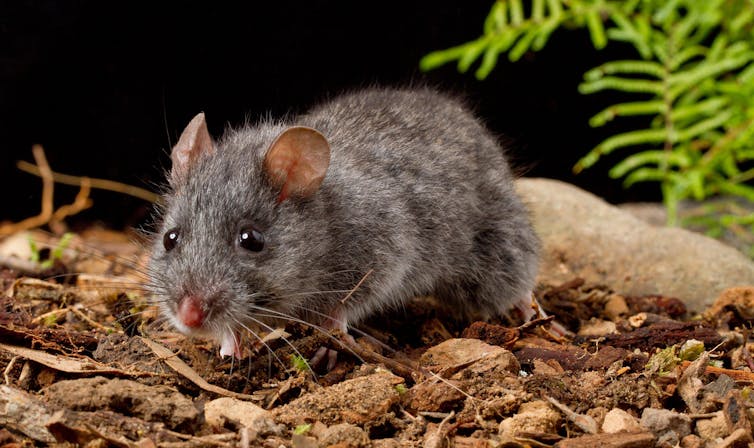
The native Australian rodent Pseudomys fumeus, named smoky mouse for its colour, was already fighting off extinction when the 2019–20 bushfire season hit.
The Black Summer bushfires, which torched more than 24 million hectares, may have killed an estimated 1 billion animals and put more than 100 threatened species at risk. The fires also destroyed more than 90% of the smoky mouse’s habitat, with nine mice even dying at a captive breeding facility near Canberra from bushfire smoke inhalation.
But all is not lost – a newly sequenced reference genome will now help the ongoing conservation efforts of this native Australian species.
Precious Pockets Of Mice
We haven’t seen wild smoky mice in the Australian Capital Territory since 1987. In Victoria, the species is only around in the Grampians, Central Highlands and alpine regions, and in New South Wales in the alpine regions of Kosciuszko National Park and southeastern forests near Nullica.
An active recovery plan was established for the mouse in 2006. As part of this, conservationists started two captive populations, with releases taking place into southeastern forests near Nullica, and a predator-proof reserve in the ACT.
These little native mice are beyond cute, roughly double the size of the introduced house mouse (Mus musculus). Their charcoal fur is soft and silky, and they smell really nice, too. Males especially smell kind of like smoky burnt vanilla; these animals have lovely, calm temperaments.
In the past 12 months, a Museums Victoria Research Institute team has been undertaking surveys to search for surviving pockets of the endangered mouse’s population with an eye towards future reintroduction efforts of captive bred mice.
To support these ongoing conservation efforts, DNA Zoo at The University of Western Australia teamed up with Museums Victoria Senior Curator of Mammals Kevin Rowe to sequence a world-first full chromosome-length reference genome for the animal.

Protecting What We Have
We can now use this reference genome to inform conservation strategy. Researchers will map 70 individual smoky mouse DNA sequences from across the animal’s habitat range – in the Grampians in western Victoria to southeastern New South Whales.
Increasing our understanding of living wildlife and responsibly stewarding available resources are among the most crucial scientific and social challenges we face today.
Despite great technological advances, there’s much we don’t know about Australia’s native biodiversity. At the same time, it’s increasingly threatened by wildfires, climate change, habitat destruction, species exploitation and other human-related activities.
Thankfully, we can use genomics to help formulate an informed conservation strategy. That’s because sampling genomic diversity can give us a baseline understanding of how well the species is faring (what biologists call “population fitness”). With that knowledge in hand, we can better design conservation programs.
For example, in endangered species with severely reduced populations, we can avoid inbreeding if we use genomic data to help design breeding programs. That way, the animals will have fewer genes that lead to premature death, and have increased disease resistance.
Consulting The Genetic Blueprints
Obtaining the genetic blueprints for Australian wildlife will create a powerful source of discovery for improving and increasing ecosystem services. A well-designed monitoring framework is crucial to the on-ground success of conservation programs.
As part of the recovery plan for the smoky mouse, we have DNA sequences from individuals in the Grampians, as well as historical samples dating back to 1934 from extinct populations in the Otways and Far East Gippsland.
The Grampians samples are of particular interest. That’s because this population is the most isolated, removed by about 350 kilometres from the nearest known population in the Yarra Ranges of the Central Highlands.
Since 2012, Museums Victoria and partners have trapped, marked and collected samples – ear biopsies and poo pellets, neither of which are harmful to the animals – from more than 200 smoky mice in the Grampians. Thanks to this work, we now have the most numerous and continuous record of the species in Victoria.
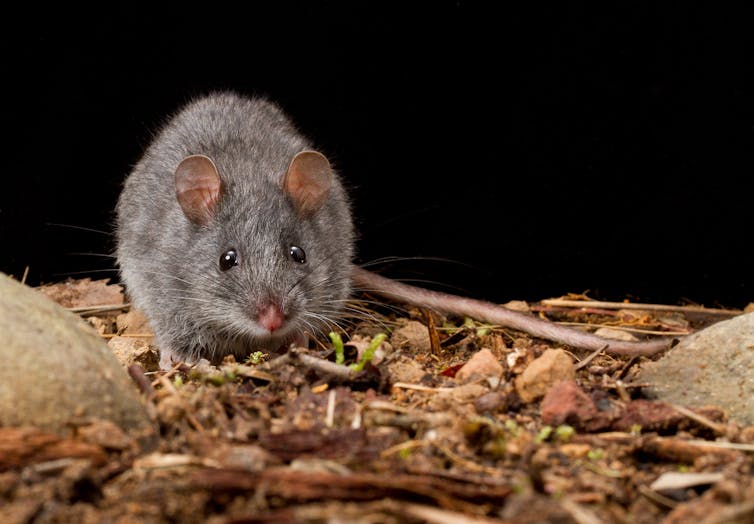
In addition, trapping and wildlife camera surveys at more than 100 sites have revealed smoky mouse populations localised to two areas less than 10km from the Victoria Range and Mt William Range, respectively.
Researchers will now be looking for genetic clues on how these animals persisted despite drought, invasive predators and significant fire.
What’s encouraging is how powerful technology – such as genome sequencing, bioinformatics, and more combined together – is now helping us to understand and preserve biodiversity. For the first time in history, we can fast-track and efficiently sequence the genomes of our unique native Australian species.![]()
Parwinder Kaur, Associate Professor | Director, DNA Zoo Australia, The University of Western Australia
This article is republished from The Conversation under a Creative Commons license. Read the original article.
The surprising history of how electric vehicles have played the long game and won

Electric vehicles, we are often told, are the future. A whole range of carmakers and nations have plans to go electric.
The largest US manufacturer, General Motors, says it will phase out fossil-fuel vehicles by 2035. Norway has set a goal to end sales of new petrol and diesel cars by 2025, the UK by 2030, and France by 2040.
In Australia, only about 2% of new cars sold today are electric. Federal government modelling in 2021 predicted a jump to 90% of the vehicle fleet by 2050.
The new federal government has put electric vehicles firmly on the agenda. Industry Minister Chris Bowen did so in a speech at the EV Summit on August 19. As global consultancy McKinsey and Co has declared, “the automotive future is electric”.
A Very Long And Troubled History
What is often overlooked is that electric vehicles have a history as well as a future. If we look back we can see they are not a futuristic dream but a longstanding transport option.
This history also illuminates the barriers that electric vehicles face – and are steadily overcoming. It is a troubled history with particular relevance to Australians, so long attached to internal combustion.
Electric vehicles have been around since car manufacturing began. Robert Davidson built the first practical electric vehicle – a 16-foot (4.9 metre) truck driven by electro-magnetic motors – in Scotland in 1837. This was decades before the internal combustion engine was invented.
As early as 1881, battery-operated buses operated in Paris. They were soon adopted in other cities, including Berlin, London and New York.
In the late 19th and early 20th centuries, electric car makers competed toe-to-toe with their emerging fossil-fuel rivals. Beginning in 1914, for example, the Detroit Taxicab and Transfer Company built and ran a fleet of nearly 100 electric taxis. This was not unusual. A New York Times article observed:
“At the turn of the 20th century, quiet, smooth, pollution-free electric cars were a common sight on the streets of major American cities.”
Made by the Anderson Carriage Company, the Detroit Electric was a mainstream model in the late 1910 and early 1920s. In an era when petrol-powered cars were smelly and greasy, electric cars were popular with women. Even Henry Ford’s wife, Clara, drove a Detroit Electric car until 1930 because she did not like the noise and fumes of the Ford Model T.
Although the internal combustion engine gradually gained the upper hand – partly because of the limited range of electric vehicles – little-known ventures into electric car-making continued. As author Tom Standage has written in his book, A Brief History of Motion, these vehicles have a “lost history” that is important to explore.
A New Post-War Breed
After the second world war, a new breed of electric vehicles emerged. Most were modified versions of fossil-fuelled cars. They included the 1959 Henney Kilowatt, which used a Renault Dauphine chassis and body, and the 1979-80 Lectric Leopard, made by the US Electricar Corporation, based on a Renault 5.
One of the most popular was the Citicar, built between 1974 and 1976 by the Sebring-Vanguard Company in Florida. Based in Massachusetts, Solectria later made the Solectria Force, derived from a GM Geo.
Although petrol-powered cars remained dominant, the electric car’s rise was predicted for decades. In the US, automotive writer David Ash saw electric cars as the future as early as 1967. “On a clear day, you will see the electric car,” he wrote, noting that it offered a solution to America’s rising air pollution and dependence on foreign oil. “Produce Electric Cars”, energy expert Edwin F. Shelley advocated in 1980, following the second oil crisis of the 1970s.
At the time, the US Congress agreed. It passed the 1976 Electric and Hybrid Vehicle Act with the aim of developing vehicles that did not depend on foreign oil.
In the late 1980s, GM developed the pioneering Impact (or EV1). The EV1 was ultimately killed when California – following sustained industry lobbying – reversed a strict emission mandate. In 2021, however, Automotive News declared the EV1 had “planted the seed for the industry embrace of EVs now”.
Breakthrough Depended On Better Batteries
Early electric vehicles suffered from limited battery range, a big drawback in large countries such as Australia and the US. The breakthrough came as early as the 1990s, when rechargeable lithium ion batteries emerged. Almost 20 years ago, Tesla was founded to take advantage of this technology.
Between 2008 and 2020, the price of battery packs dropped 80%, to around US$20,000. This made electric vehicles a viable alternative to fossil-fuel-powered cars, especially if government policies encouraged consumers to make the switch. In markets where such policies apply, they are making rapid strides.
History also informs us about the barriers to mass adoption of electric vehicles. The same concerns – range, lack of sound and smell, brand recognition – have been raised for decades. As David Ash wrote in 1967:
“The modern auto is only part transportation. It is also power symbol, magic carpet, toy and companion. Will we buy cars that cannot be made to roar?”

A Vehicle Whose Time Has Come
Today, the electric car’s hour seems to have finally come. In an era of climate change, tightening regulations aimed at the internal combustion engine are producing real change. In 2021, road vehicles produced 17% of global carbon dioxide emissions. As a 2017 New York Times editorial declared:
“There is simply no credible way to address climate change without changing the way we get from here to there […].”
The electric vehicle’s environmental credentials – noted by consumers in the early 20th as well as early 21st century – are overcoming the century-long dominance of the fossil-fuel-powered car. Rather than being new, electric cars have played – and are now winning - the long game.![]()
Timothy Minchin, Professor of History, La Trobe University
This article is republished from The Conversation under a Creative Commons license. Read the original article.
Pittwater Reserves: Histories + Notes + Pictorial Walks
A History Of The Campaign For Preservation Of The Warriewood Escarpment by David Palmer OAM and Angus Gordon OAM
America Bay Track Walk - photos by Joe Mills
An Aquatic June: North Narrabeen - Turimetta - Collaroy photos by Joe Mills
Angophora Reserve Angophora Reserve Flowers Grand Old Tree Of Angophora Reserve Falls Back To The Earth - History page
Annie Wyatt Reserve - A Pictorial
Avalon's Village Green: Avalon Park Becomes Dunbar Park - Some History + Toongari Reserve and Catalpa Reserve
Bairne Walking Track Ku-Ring-Gai Chase NP by Kevin Murray
Bangalley Headland Bangalley Mid Winter
Banksias of Pittwater
Barrenjoey Boathouse In Governor Phillip Park Part Of Our Community For 75 Years: Photos From The Collection Of Russell Walton, Son Of Victor Walton
Barrenjoey Headland: Spring flowers
Barrenjoey Headland after fire
Bayview Baths
Bayview Wetlands
Beeby Park
Bilgola Beach
Botham Beach by Barbara Davies
Bungan Beach Bush Care
Careel Bay Saltmarsh plants
Careel Bay Birds
Careel Bay Clean Up day
Careel Bay Playing Fields History and Current
Careel Creek
Careel Creek - If you rebuild it they will come
Centre trail in Ku-ring-gai Chase National Park
Chiltern Track- Ingleside by Marita Macrae
Clareville Beach
Clareville/Long Beach Reserve + some History
Coastal Stability Series: Cabbage Tree Bay To Barrenjoey To Observation Point by John Illingsworth, Pittwater Pathways, and Dr. Peter Mitchell OAM
Cowan Track by Kevin Murray
Curl Curl To Freshwater Walk: October 2021 by Kevin Murray and Joe Mills
Currawong and Palm Beach Views - Winter 2018
Currawong-Mackerel-The Basin A Stroll In Early November 2021 - photos by Selena Griffith
Currawong State Park Currawong Beach + Currawong Creek
Deep Creek To Warriewood Walk photos by Joe Mills
Drone Gives A New View On Coastal Stability; Bungan: Bungan Headland To Newport Beach + Bilgola: North Newport Beach To Avalon + Bangalley: Avalon Headland To Palm Beach
Duck Holes: McCarrs Creek by Joe Mills
Dunbar Park - Some History + Toongari Reserve and Catalpa Reserve
Dundundra Falls Reserve: August 2020 photos by Selena Griffith - Listed in 1935
Elsie Track, Scotland Island
Elvina Track in Late Winter 2019 by Penny Gleen
Elvina Bay Walking Track: Spring 2020 photos by Joe Mills
Elvina Bay-Lovett Bay Loop Spring 2020 by Kevin Murray and Joe Mills
Fern Creek - Ingleside Escarpment To Warriewood Walk + Some History photos by Joe Mills
Iluka Park, Woorak Park, Pittwater Park, Sand Point Reserve, Snapperman Beach Reserve - Palm Beach: Some History
Ingleside
Ingleside Wildflowers August 2013
Irrawong - Ingleside Escarpment Trail Walk Spring 2020 photos by Joe Mills
Irrawong - Mullet Creek Restoration
Katandra Bushland Sanctuary - Ingleside
Lucinda Park, Palm Beach: Some History + 2022 Pictures
McCarrs Creek
McCarr's Creek to Church Point to Bayview Waterfront Path
McKay Reserve
Mona Vale Beach - A Stroll Along, Spring 2021 by Kevin Murray
Mona Vale Headland, Basin and Beach Restoration
Mount Murray Anderson Walking Track by Kevin Murray and Joe Mills
Mullet Creek
Narrabeen Creek
Narrabeen Lagoon Catchment: Past Notes Present Photos by Margaret Woods
Narrabeen Lagoon State Park
Narrabeen Lagoon State Park Expansion
Narrabeen Rockshelf Aquatic Reserve
Nerang Track, Terrey Hills by Bea Pierce
Newport Bushlink - the Crown of the Hill Linked Reserves
Newport Community Garden - Woolcott Reserve
Newport to Bilgola Bushlink 'From The Crown To The Sea' Paths: Founded In 1956 - A Tip and Quarry Becomes Green Space For People and Wildlife
Pittwater spring: waterbirds return to Wetlands
Pittwater's Lone Rangers - 120 Years of Ku-Ring-Gai Chase and the Men of Flowers Inspired by Eccleston Du Faur
Pittwater's Parallel Estuary - The Cowan 'Creek
Resolute Track at West Head by Kevin Murray
Resolute Track Stroll by Joe Mills
Riddle Reserve, Bayview
Salvation Loop Trail, Ku-Ring-Gai Chase National Park- Spring 2020 - by Selena Griffith
Seagull Pair At Turimetta Beach: Spring Is In The Air!
Stapleton Reserve
Stapleton Park Reserve In Spring 2020: An Urban Ark Of Plants Found Nowhere Else
Stony Range Regional Botanical Garden: Some History On How A Reserve Became An Australian Plant Park
The Chiltern Track
The Resolute Beach Loop Track At West Head In Ku-Ring-Gai Chase National Park by Kevin Murray
Topham Track Ku-Ring-Gai Chase NP, August 2022 by Joe Mills and Kevin Murray
Towlers Bay Walking Track by Joe Mills
Trafalgar Square, Newport: A 'Commons' Park Dedicated By Private Landholders - The Green Heart Of This Community
Tranquil Turimetta Beach, April 2022 by Joe Mills
Turimetta Beach Reserve by Joe Mills, Bea Pierce and Lesley
Turimetta Beach Reserve: Old & New Images (by Kevin Murray) + Some History
Turimetta Headland
Warriewood Wetlands and Irrawong Reserve
Whale Beach Ocean Reserve: 'The Strand' - Some History On Another Great Protected Pittwater Reserve
Wilshire Park Palm Beach: Some History + Photos From May 2022
Winji Jimmi - Water Maze

New Shorebirds WingThing For Youngsters Available To Download
A Shorebirds WingThing educational brochure for kids (A5) helps children learn about shorebirds, their life and journey. The 2021 revised brochure version was published in February 2021 and is available now. You can download a file copy here.
If you would like a free print copy of this brochure, please send a self-addressed envelope with A$1.10 postage (or larger if you would like it unfolded) affixed to: BirdLife Australia, Shorebird WingThing Request, 2-05Shorebird WingThing/60 Leicester St, Carlton VIC 3053.

 Shorebird Identification Booklet
Shorebird Identification Booklet
The Migratory Shorebird Program has just released the third edition of its hugely popular Shorebird Identification Booklet. The team has thoroughly revised and updated this pocket-sized companion for all shorebird counters and interested birders, with lots of useful information on our most common shorebirds, key identification features, sighting distribution maps and short articles on some of BirdLife’s shorebird activities.
The booklet can be downloaded here in PDF file format: http://www.birdlife.org.au/documents/Shorebird_ID_Booklet_V3.pdf
Paper copies can be ordered as well, see http://www.birdlife.org.au/projects/shorebirds-2020/counter-resources for details.
Download BirdLife Australia's children’s education kit to help them learn more about our wading birdlife
Shorebirds are a group of wading birds that can be found feeding on swamps, tidal mudflats, estuaries, beaches and open country. For many people, shorebirds are just those brown birds feeding a long way out on the mud but they are actually a remarkably diverse collection of birds including stilts, sandpipers, snipe, curlews, godwits, plovers and oystercatchers. Each species is superbly adapted to suit its preferred habitat. The Red-necked Stint is as small as a sparrow, with relatively short legs and bill that it pecks food from the surface of the mud with, whereas the Eastern Curlew is over two feet long with a exceptionally long legs and a massively curved beak that it thrusts deep down into the mud to pull out crabs, worms and other creatures hidden below the surface.
Some shorebirds are fairly drab in plumage, especially when they are visiting Australia in their non-breeding season, but when they migrate to their Arctic nesting grounds, they develop a vibrant flush of bright colours to attract a mate. We have 37 types of shorebirds that annually migrate to Australia on some of the most lengthy and arduous journeys in the animal kingdom, but there are also 18 shorebirds that call Australia home all year round.
What all our shorebirds have in common—be they large or small, seasoned traveller or homebody, brightly coloured or in muted tones—is that each species needs adequate safe areas where they can successfully feed and breed.
The National Shorebird Monitoring Program is managed and supported by BirdLife Australia.
This project is supported by Glenelg Hopkins Catchment Management Authority and Hunter Local Land Services through funding from the Australian Government’s National Landcare Program. Funding from Helen Macpherson Smith Trust and Port Phillip Bay Fund is acknowledged.
The National Shorebird Monitoring Program is made possible with the help of over 1,600 volunteers working in coastal and inland habitats all over Australia.
The National Shorebird Monitoring program (started as the Shorebirds 2020 project initiated to re-invigorate monitoring around Australia) is raising awareness of how incredible shorebirds are, and actively engaging the community to participate in gathering information needed to conserve shorebirds.
In the short term, the destruction of tidal ecosystems will need to be stopped, and our program is designed to strengthen the case for protecting these important habitats.
In the long term, there will be a need to mitigate against the likely effects of climate change on a species that travels across the entire range of latitudes where impacts are likely.
The identification and protection of critical areas for shorebirds will need to continue in order to guard against the potential threats associated with habitats in close proximity to nearly half the human population.
Here in Australia, the place where these birds grow up and spend most of their lives, continued monitoring is necessary to inform the best management practice to maintain shorebird populations.
BirdLife Australia believe that we can help secure a brighter future for these remarkable birds by educating stakeholders, gathering information on how and why shorebird populations are changing, and working to grow the community of people who care about shorebirds.
To find out more visit: http://www.birdlife.org.au/projects/shorebirds-2020/shorebirds-2020-program
Aussie Bread Tags Collection Points

2022 NSW Volunteer Of The Year Awards
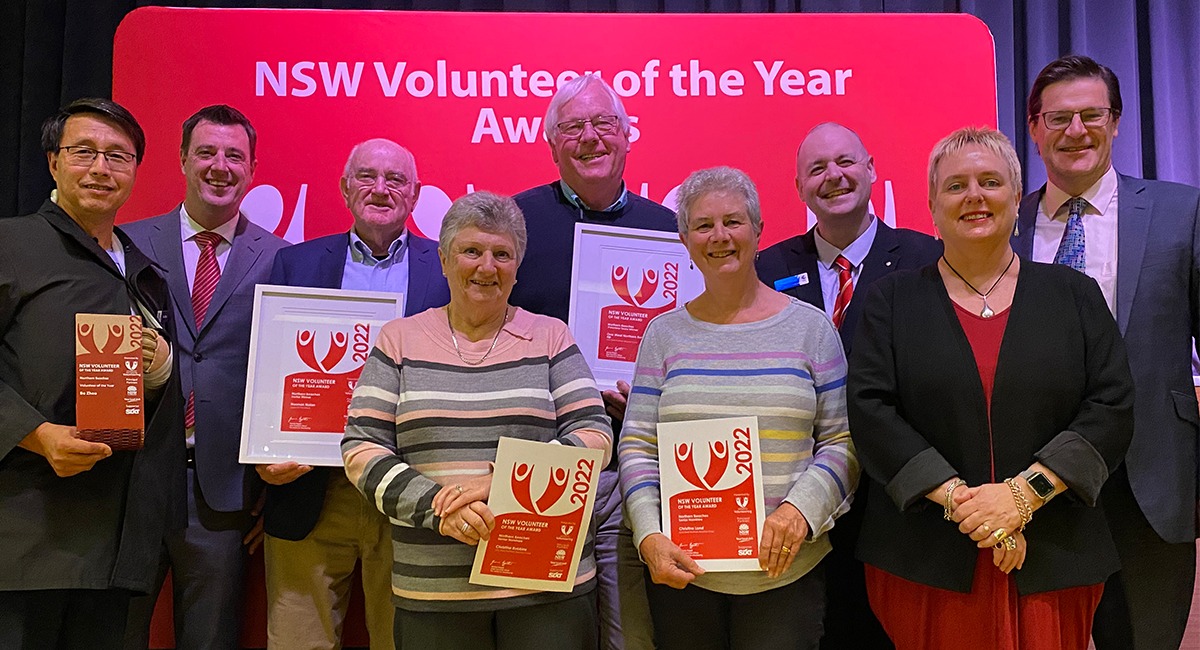
Giving Older Australians The Option To Work And Earn More
Long COVID: How researchers are zeroing in on the self-targeted immune attacks that may lurk behind it

For almost three years, scientists have raced to understand the immune responses in patients who develop severe COVID-19, with an enormous effort aimed at defining where healthy immunity ends and destructive immunity begins.
In the early days of the COVID-19 pandemic, much attention focused on reports of harmful inflammation and so-called cytokine storms – dangerous immune overreactions that can lead to tissue damage and death – in patients with severe COVID-19. It wasn’t long before researchers began to identify antibodies that target the patient’s own body rather than attacking SARS-CoV-2, the virus the causes COVID-19.
Those studies revealed that patients with severe COVID-19 share some of the key traits of chronic autoimmune diseases – diseases in which the patient’s immune systems chronically attack their own tissues. Scientists have long suspected and sometimes even documented links between viral infection and chronic autoimmune diseases, but the research remains murky. However, the COVID-19 pandemic has offered an opportunity to better understand potential connections between these conditions.
As an immunologist and member of an interdisciplinary team of physicians and scientists investigating the intersection between COVID-19 and autoimmunity, I have been working to understand the origins of these untamed antibody responses and their long-term effects. Led by Ignacio Sanz, a specialist in investigating the immune dysfunctions that underlie autoimmune diseases like lupus, our group has long suspected that these misdirected immune responses may follow patients well after recovery and could even contribute to the debilitating set of symptoms commonly referred to as “long COVID-19.”
Our new study, published in the journal Nature, helps shed light on these questions. We now know that in patients with severe COVID-19, many of the developing antibodies responsible for neutralizing the viral threat are simultaneously targeting their own organs and tissues. We also show that self-directed antibodies can persist for months or even years in those suffering from long COVID-19.
As researchers like us continue to study COVID-19, our understanding of the link between antiviral immunity and chronic autoimmune disease is rapidly evolving.
The Immune System Makes Mistakes When Under Duress
It’s easy to assume that your immune system is laser-focused on identifying and destroying foreign invaders, but that isn’t the case – at least under some circumstances. Your immune system, even in its healthy state, contains a contingent of cells that are fully capable of targeting and destroying your own cells and tissues.
To prevent self-destruction, the immune system relies on an intricate series of fail-safes that are collectively termed self-tolerance to identify and eliminate potentially traitorous immune cells. One of the most important steps in this process occurs as the immune system builds up its arsenal against a potential threat.
When your immune system first encounters a pathogen or even a perceived threat – such as a vaccine that resembles a virus – it rapidly recruits “B” cells that have the potential to become antibody-producers. Then, any of these “naive” B cell recruits – naive being a technical term used in immunology – that demonstrate an ability to competently attack the invader are put into a boot camp of sorts.
Here, the cells are trained to better recognize and combat the threat. The training period is intense and mistakes are not tolerated; B cells with any discernible potential for misdirected attacks against their host are killed. However, like any training process, this buildup and mobilization takes time – typically a week or two.
So, what happens when the threat is more immediate – when someone is quite literally fighting for their life in an intensive care unit?
Researchers now know that under the stress of severe viral infection with SARS-CoV-2, that training process collapses. Instead, it is replaced by an emergency response in which new recruits with little training are rushed into battle.
Friendly fire is the unfortunate result.
High-Risk Immune Responses Are Mostly Transient
Our team’s new work reveals that in the heat of battle with severe COVID-19, the same antibodies responsible for fighting the virus are uncomfortably prone to targeting a patient’s own tissue. Importantly, this effect seems mostly restricted to severe disease. We identified the cells that produce these rogue antibodies much less frequently in patients with mild forms of the illness whose immune responses were more measured.
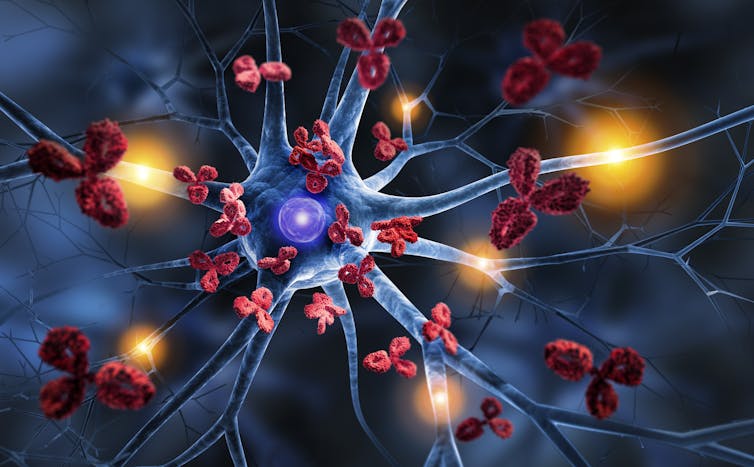
So, does that mean that everyone who gets severe COVID-19 develops an autoimmune disorder?
Fortunately, no. By following patients after their infection has resolved, we have found that months later, most of the concerning indications of autoimmunity have subsided. And this makes sense. Though we are identifying this phenomenon in human COVID-19, researchers studying these emergency immune responses for more than a decade in mice have determined that they are mostly short-lived.
“Mostly” being the operative word.
Implications For Recovery From Long COVID-19
Although most people fully recover from their run-in with the virus, up to 30% have not returned to normal even three months after recovery. This has created a group of patients who are experiencing what is known as post-acute sequelae of COVID-19, or PASC – the technical terminology for long COVID-19.
With debilitating symptoms that can include the long-term loss of taste, smell or both, general fatigue, brain fog and a variety of other conditions, these patients have continued to suffer and are rightfully looking for answers.
An obvious question for researchers who are studying these patients is whether the same self-targeted antibodies that are emerging in severe COVID-19 are lingering in those who suffer from long COVID-19. They are. Our new study makes clear that newly developed self-antibodies can persist for months. What’s more, in work currently under development and not yet peer-reviewed, we find that these responses are not restricted to those recovering from severe illness, and are readily identifiable in a large subset of long COVID-19 patients who had recovered from more mild illness as well.
Just as it was in the race to better understand the causes of acute disease earlier in the pandemic, we researchers are now working to get a more complete understanding of the cells and antibodies directing this self-attack for months and years following the resolution of infection.
Are they directly contributing to the symptoms long COVID-19 sufferers are experiencing? If so, are there therapeutic interventions that could blunt or eliminate the threats they pose? Are long COVID-19 patients at increased risk for the development of true, chronic autoimmune diseases in the future? Or, is all of this just a red herring – a temporary quirk of the immune system that will resolve on its own?
Only time and continued work in this critical area will tell.![]()
Matthew Woodruff, Instructor of Human Immunology, Emory University
This article is republished from The Conversation under a Creative Commons license. Read the original article.
A fast fix for the jobs summit: let retirees work without docking their pension
Darryl Gobbett, University of Adelaide and Michael O'Neil, University of AdelaideThis article is part of The Conversation’s series looking at Labor’s jobs summit. Read the other articles in the series here.
With historically low unemployment and “we’re hiring” signs all over the place, there’s an understandable push for more skilled migrants. There’s a session on it at the jobs summit on Friday morning.
But there’s a quicker fix: an untapped source of hundreds of thousands of skilled workers, who are already in the country, many of whom would like to work but would be penalised for it.
Age pensioners who earn more than a minimal amount from paid work (A$490 a fortnight for singles) lose 50 cents out of every extra dollar they earn in reduced pension payments.
It’s a powerful disincentive. $490 a fortnight is $245 per week: that’s about nine hours’ income for a worker on the minimum wage with a casual loading.
Relaxing the income test – or at least the test on income from work – would have benefits beyond helping to meet our immediate need for skills and experience.
Longer term, it would reduce the need for bureaucrats to compile lists of skill shortages and attempt to pick migrants with the right skills to fill those gaps.
It would also ease the pressure that higher migration puts on the housing market, putting upward pressure on prices.
Given the jobs summit is looking for solutions with widespread support, unlocking retirees’ skills would be a good place to start.
Few Pensioners Work
The idea is backed by small and big business lobby groups, as well as National Seniors Australia and key federal independent MPs.
As of March 2021, about 2.5 million people were receiving the age pension. Only 92,000 – just 3.6% of them – declared earnings from employment.
There are three main ways we could make it easier for pensioners to work:
lift the income test threshold for how much can be earned from working
cut the income test when the threshold is reached
remove the income test entirely
The third option isn’t as radical as it seems. Several countries, including Britain and New Zealand, don’t apply an income test.
The simplest would be option 1, allowing age pensioners to earn (say) an additional $500 per fortnight, which would amount to $990 per fortnight, or $25,700 per annum.
Getting More Into Work Needn’t Cost Much
Our calculations suggest giving age pensioners who are currently working these hours the full pension would cost less than $442 million per year.
This cost would amount to 0.8% of the $54,153 million budgeted to be paid as support to seniors in 2022/23.
If more pensioners worked more hours, the cost would climb to $1,664 million, which is 3.1% of this year’s budgeted support for seniors.
The benefits would be substantial.
Each one percentage point increase in workforce participation of those 65 years and older would boost the Australian labour force by around 43,000.
Hundreds Of Thousands More Workers
As importantly, Australians aged 65 years and over are expected to be the fastest growing population group by 2030.
On current population projections, by then each one percentage point increase in labour force participation by this age group would amount to 54,000 people.
If the change boosted participation by several percentage points, it would produce hundreds of thousands more workers, all of them already locals and most already trained.
It looks to us to be an idea too good for the summit to pass up.![]()
Darryl Gobbett, Visiting Fellow, South Australian Centre for Economic Studies, University of Adelaide and Michael O'Neil, Executive Director, SA Centre for Economic Studies, University of Adelaide
This article is republished from The Conversation under a Creative Commons license. Read the original article.
Celebrities Combine Forces And Voices To Support People Impacted By Dementia + National Dementia Helpline Now 24/7
Summit Pensioner Income Credit A Good Start
Men's Sheds Grants And Movember Improving Men's Health
Can supplements or diet reduce symptoms of arthritis? Here’s what the evidence says

Arthritis is a disease that affects body joints. There are more than 100 types of arthritis, with more than 350 million people affected around the globe, including about four million Australians.
Arthritis causes pain and disability and commonly reduces quality of life. In Australia in 2015, about 54,000 people aged 45–64 couldn’t work due to severe arthritis. Their median income was only a quarter of the income of full-time workers who did not have arthritis.
So it is not surprising some people want to try different diets, supplements or therapies to see if they alleviate symptoms or help them gain a sense of control over their condition.
However, a major review found specific supplements or food components were unlikely to lead to significant improvements in arthritis outcomes such as stiffness, pain and function.
The main nutrition recommendation was to adopt healthy eating patterns.
Remind Me, What Causes Arthritis? And What Are The Symptoms?
Risk factors for developing arthritis include ones you can’t control – such as genetics, sex, and age – and some you may be able to, such as smoking, repetitive injuries, body weight, occupation and some infections.
Types of arthritis include osteoarthritis, rheumatoid arthritis, ankylosing spondylitis, juvenile arthritis, gout, systemic lupus erythematosus (lupus) and scleroderma.
Common symptoms include:
- pain
- stiffness or reduced joint movement
- swelling, redness and warmth in the joints.
Less specific symptoms include tiredness, weight loss or feeling unwell.
So What Does The Evidence Say About Supplements?
The European Alliance of Associations for Rheumatology, the expert European group on arthritis, recently published a detailed critique on diet and supplement use in arthritis. It synthesised findings from 24 systematic reviews of existing research as well as an additional 150 extra studies, covering more than 80 different dietary components and supplements.
The alliance identified there were limited studies on each individual product with the majority of studies being of low quality. This means that for most supplements they couldn’t make recommendations about whether or not to use them.

However, for osteoarthritis and rheumatoid arthritis, although most studies were of low or moderate quality, a few supplements had positive effects.
Vitamin D, chondroitin and glucosamine
For osteoarthritis, there was moderate-quality evidence supporting a small positive effect on pain and function for taking vitamin D, chondroitin and glucosamine (both compounds found in cartilage) supplements.
Here, moderate quality means although the studies had some limitations and their results should be interpreted with caution, they can be used to guide recommendations.
This suggests people could choose to try these common supplements for a few months and see whether they get any benefit, but stop taking them if there is no improvement in their symptoms.
Fish oil
For rheumatoid arthritis, there was moderate quality evidence for a small positive effect on pain for omega-3 (fish) oils.
Again, people could try these supplements for a few months and see whether they get any benefit, but stop taking them if there is no improvement.
Other supplements
For all other arthritis categories, and other specific dietary components or supplements, the evidence was rated as low to very low (see tables 1–5 in this link).
This means any improvements in arthritis outcomes could be due to chance or bias, with positive results more likely to be published, or potential bias occurring when a trial was sponsored by a supplement manufacturer.
What Does It All Mean?
Current research indicates it’s unlikely specific foods, supplements or dietary components affect arthritis outcomes to a large degree.
However, given the higher risk for heart disease associated with arthritis, the recommendation is to have a healthy diet and lifestyle in order to improve your overall health and wellbeing.
So how do you improve your health and wellbeing? Here are five key things to consider:
1. Eat A Healthy, Varied Diet

Eating food – rather than taking supplements – means you get the other nutrients that foods contain, including healthy sources of fat, protein, dietary fibre and a range of vitamin and minerals essential to maintain a healthy body.
This is why the recommendation for people with arthritis is to eat a healthy diet, because vegetables, fruit, legumes and wholegrains contain a range of phytonutrients needed to help dampen down oxidative stress triggered by inflammatory processes associated with arthritis.
A healthy diet includes foods rich in omega-3 fats such as fatty fish (salmon, tuna, sardines), chia seeds, flaxseed oil, walnuts, canola oil, and vitamin D (eggs, fish, and milk or margarine fortified with vitamin D). And don’t forget sun exposure, which allows the body to produce vitamin D.
2. Avoid Alcohol
Alcohol intake should be discussed with your doctor as it can interact with other treatments.
Small amounts of alcohol are unlikely to have negative impacts on arthritis, unless you have other health issues like liver disease or you take certain medications such as methotrexate or leflunomide.
For rheumatoid arthritis, moderate alcohol consumption could increase the risk of arthritis flare ups.
Alcohol can also increase the risk of gout flare ups.
3. Aim For A Healthy Weight
Aiming for a healthy weight can help arthritis by reducing the load on affected joints such as hips and knees, and by boosting your intake of healthy foods rich in phytonutrients.
Ask your doctor for support to achieve well managed, intentional weight loss if you’re carrying excess weight. You may need referral to an accredited practising dietitian for personalised medical nutrition therapy or to a physiotherapist or exercise physiologist for specific help to improve mobility and physical activity.
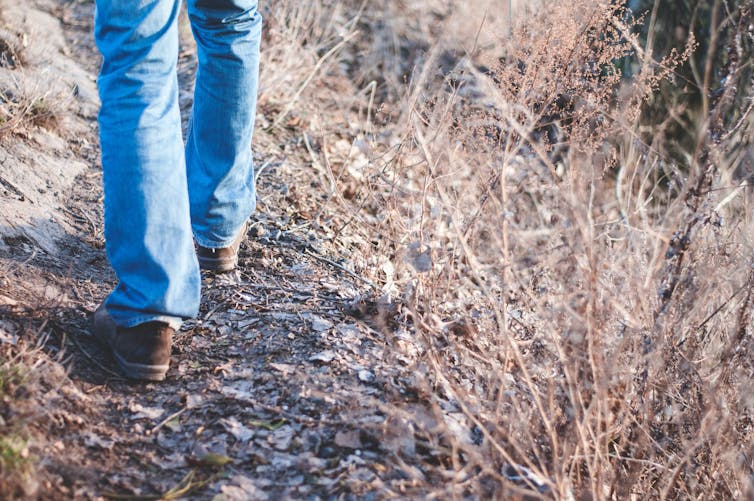
4. Be Cautious With Supplements
If you decide to try specific complimentary therapies or dietary supplements, discuss potential side-effects or interactions with your regular medicines with your doctor and pharmacist.
Try the products for a few months (or as long as one container lasts) so you can monitor any side-effects versus your sense of wellbeing, reduction in use of pain medications and the cost. If you’re not getting any benefit then spend that money on more healthy foods instead.
Find out how healthy your diet is by taking our free Healthy Eating Quiz.![]()
Clare Collins, Laureate Professor in Nutrition and Dietetics, University of Newcastle
This article is republished from The Conversation under a Creative Commons license. Read the original article.
Dementia Action Week
19 – 25 September 2022
- Give a little support to a person living with dementia.
- Give a little support to a carer, friend or family member of a person living with dementia.
- Help healthcare professionals make their practice more dementia-friendly.
2022 Australian Museum Eureka Entry On Crayweed For Sleek Geeks Highly Commended
HSC Online Help Guides
Stay Healthy - Stay Active: HSC 2022

Radio Northern Beaches Offers Free Broadcast Training: 14 Spots
- • Introduction to radio
- • Interviewing techniques
- • Preparing a program
- • Microphone technique
- • Media Law
- • Technical operation (introduction to studio operation, recording, mixing, editing)
- • The day culminates in a live to air broadcast

75th Anniversary Coin


Be The Boss: I Want To Be An Automotive Mechanic

- Automotive electrician
- Automotive mechanic
- Automotive salesperson
- Car mechanic
- Heavy vehicle mechanic
- Light vehicle mechanic
- Marine trimming technician
- Mobile plant mechanic
- Motorcycle mechanic
- Vehicle refinishing technician
- Vehicle spray painter
- Automotive Body Repair Technology
- Automotive Servicing Technology
- Light Vehicle Mechanical Technology
- Automotive Electrical Technology, Engineering (Mechanical)
- Mobile Plant Technology
- Heavy Commercial Vehicle Mechanical Technology
Also Available:
More Opportunities To Get Skilled For Free
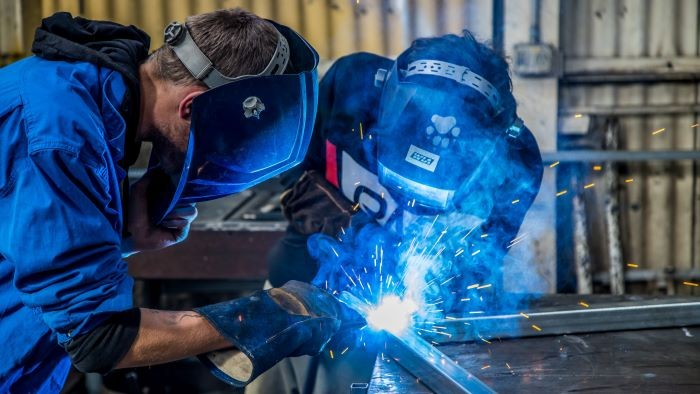 NSW residents who want to get skilled for a first job, a new job or a better job will have more opportunities to access fee-free training, with the NSW Government extending funding through to the end of the 2022-23 financial year.
NSW residents who want to get skilled for a first job, a new job or a better job will have more opportunities to access fee-free training, with the NSW Government extending funding through to the end of the 2022-23 financial year.Girls In Engineering Club
- Exclusive invitations to Girls in Engineering Club events.
- Monthly inspo delivered to your email, featuring profiles of female engineers, study tips and more!
- Opportunities to be mentored by female engineering students.
- Access to a closed Facebook community to connect with likeminded girls.
- Regular workshops and challenges.
Power-Sharing For Nature-Based Solutions To Climate Change : Fiona Nunan At TEDxWarwick
Alternative Math: Short Film
Word Of The Week: Catapult
Noun
1 : an ancient military device for hurling missiles. 2 : a device for launching an airplane at flying speed (as from an aircraft carrier).
Verb
1. to throw someone or something with great force. 2. to suddenly experience a particular state, such as being famous or infamous.
The word 'catapult' comes from the Latin 'catapulta', which in turn comes from the Greek Ancient Greek: (katapeltēs), itself from κατά (kata), "downwards" and (pallō), "to toss, to hurl". Catapults were invented by the ancient Greeks and in ancient India where they were used by the Magadhan Emperor Ajatashatru around the early to mid 5th century BC.
A catapult is a device used to launch a projectile a great distance without the aid of gunpowder or other propellants – particularly various types of ancient and medieval siege engines. A catapult uses the sudden release of stored potential energy to propel its payload. Most convert tension or torsion energy that was more slowly and manually built up within the device before release, via springs, bows, twisted rope, elastic, or any of numerous other materials and mechanisms.
The earliest catapults date to at least the 7th century BC, with King Uzziah, of Judah, recorded as equipping the walls of Jerusalem with machines that shot great stones. In the 5th century BC the mangonel appeared in ancient China, a type of traction trebuchet and catapult. Early uses were also attributed to Ajatashatru of Magadha in his, 5th century BC, war against the Licchavis. Greek catapults were invented in the early 4th century BC, being attested by Diodorus Siculus as part of the equipment of a Greek army in 399 BC, and subsequently used at the siege of Motya in 397 BC.

Mongol warriors using trebuchet to besiege a city - 13th century.
Some Father's Day Music
"When I was a boy of fourteen, my father was so ignorant I could hardly stand to have the old man around. But when I got to be twenty-one, I was astonished at how much he had learned in seven years."--Mark Twain.
Mapping food supply chains, nanotech cancer diagnosis, and tracking bushfire recovery winners at 2022 Eureka Prizes

A microscope slide that can diagnose cancer, mapping how what we eat affects the environment, and a volunteer effort tracking bushfire damage. These were just a few of the scientific projects recognised at the 2022 Australian Museum Eureka Prizes, announced in Sydney.
The prizes have been awarded each year since 1990 to recognise contributions to science and the public understanding of science.
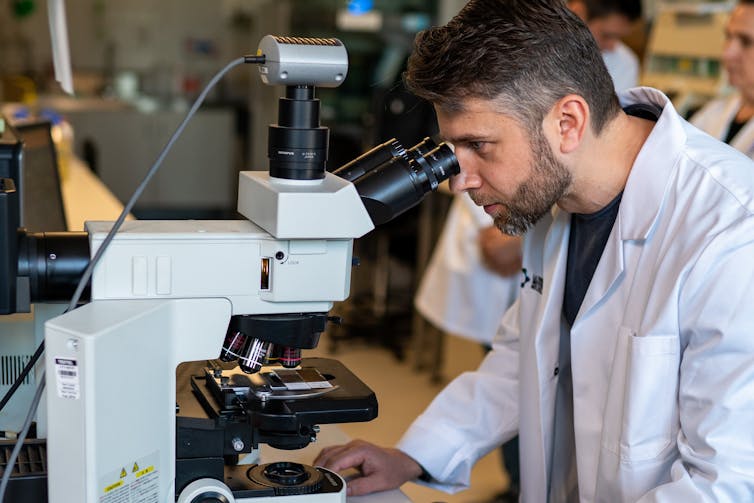
The ANSTO Eureka Prize for Innovative Use of Technology went to the NanoMslide team, comprising researchers from La Trobe University, the University of Melbourne, the Garvan Institute of Medical Research, and the Peter MacCallum Cancer Centre. Their invention uses a special nanotechnology coating for microscope slides for quicker, cheaper cancer diagnosis.
Eric Chow, Christopher Fairley, Catriona Bradshaw, Jane Hocking, Deborah Williamson and Marcus Chen, from Monash University and the University of Melbourne, won the Australian Infectious Diseases Research Centre Eureka Prize for Infectious Diseases Research. Their work on sexually transmitted infections (STIs) uncovered the role of saliva in transmitting STIs and pioneered tailored antibiotic treatments.
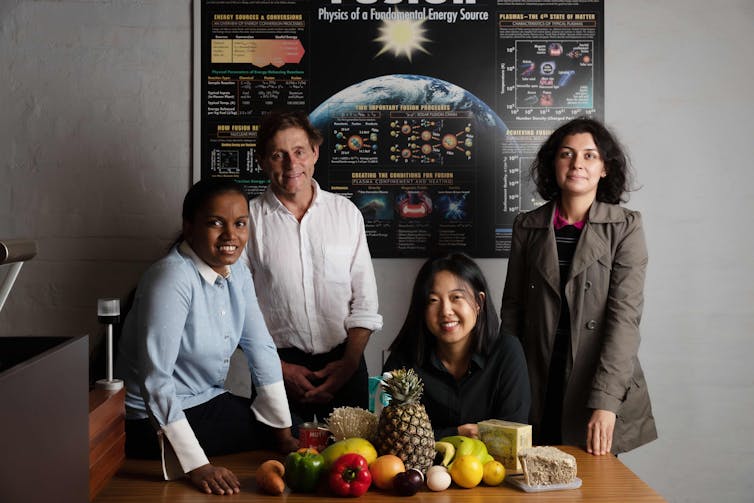
The Eureka Prize for Excellence in Interdisciplinary Scientific Research was awarded to Manfred Lenzen, David Raubenheimer, Arunima Malik, Mengyu Li and Navoda Liyana Pathirana from the University of Sydney, for their work on how what we eat affects the environment. They traced billions of supply chains that deliver food to consumers.
The Environment Recovery Project, run by UNSW and the German Centre for Integrative Biodiversity Research, won the Department of Industry, Science and Resources Eureka Prize for Innovation in Citizen Science. The project gathered 1,600 volunteers to survey the damage caused by the devastating bushfires of 2019–20 and gather data on how the environment is recovering.

UNSW Professor Raina MacIntyre was awarded the Department of Defence Eureka Prize for Leadership in Science and Innovation for her “significant leadership role in the international response to the COVID-19 pandemic”. She has written a range of articles for The Conversation, including an early explainer on the novel coronavirus.
The UNSW Eureka Prize for Scientific Research went to Justin Yerbury of the University of Wollongong. Since his diagnosis with motor neuron disease in 2016, he has made key discoveries about the molecular causes of the disease.
The Australian Museum Research Institute also awarded two medals. One went to Stephen Keable, a former manager of the Marine Invertebrates Collections at the Australian Museum, for his work on marine invertebrates. The second was awarded to Graham Durant, the recently retired director of Questacon, for his service to Australian science and science education.
Other winners included:
NSW Environment and Heritage Eureka Prize for Applied Environmental Research – Sustainable Farms, Australian National University
Macquarie University Eureka Prize for Outstanding Early Career Researcher – Tess Reynolds, University of Sydney
Celestino Eureka Prize for Promoting Understanding of Science – Veena Sahajwalla, UNSW
Australian Museum Eureka Prize for Science Journalism – Jackson Ryan, CNET
Department of Industry, Science and Resources Eureka Prize for STEM Inclusion – Kirsten Ellis, Monash University
University of Sydney Sleek Geeks Science Eureka Prize — Primary – Genevieve S., Bucasia State School, Qld
University of Sydney Sleek Geeks Science Eureka Prize — Secondary – Iestyn R., St John’s Anglican College, Forest Lake, Qld
Eureka Prize for Emerging Leader in Science – Sumeet Walia, RMIT University
University of Technology Sydney Eureka Prize for Outstanding Mentor of Young Researchers – Paul Wood, Monash University![]()
Michael Lucy, Deputy Science + Technology Editor, The Conversation
This article is republished from The Conversation under a Creative Commons license. Read the original article.
Creative skills will be crucial to the future of work. They should take centre stage at the jobs summit

This article is part of The Conversation’s series looking at Labor’s jobs summit. Read the other articles in the series here.
You’ve heard of the gig economy and the portfolio career. Now quite popular terms, they come from the ways artists work. Think musicians gigging across small bars and large arenas, visual artists with portfolios of work in print, in galleries and online, or actors engaged on a range of short-term projects across a given year.
Once celebrated for flexibility and personal choice, these terms are now synonymous with exploitative, casual and precarious employment, or working conditions lacking entitlements, such as superannuation and sick leave.
But there is much to be learnt from the creative industries when it comes to understanding the future of work.
“Creativity” has been identified by the World Economic Forum, the International Monetary Fund and global business analysts as the key to our future economies.
It was the number-one skillset demanded two years in a row by the 20 million job ads on LinkedIn, which labelled it “the most important skill in the world”.
Creativity is complex. It’s not straightforward to teach and it’s not straightforward to understand. That’s what’s so exciting about it.
Learning Creativity
“Innovation”, “disruption” and “agile thinking” are frequently touted as necessary for productivity and economic growth.
Often overlooked by political and business leaders, however, is none of these innovations can be generated without a creative approach.
Developing creative skills requires a sophisticated approach to education and training. You don’t learn critical thinking, ideas generation and problem-solving by rote.
That kind of learning comes from art schools, design studios and humanities degrees. This is education that asks questions, delves deeply and takes time.

Policy priorities across the previous government’s nine-year term, such as excluding universities from pandemic supports and dramatic fee increases, resulted in the diminution or closure of art, design and humanities schools all over Australia.
For artists and arts educators, the outcomes have been devastating.
But it’s not just artists who are impacted by a collapse in creative education. In 2020, leading epidemiologist Michael Osterholm told 7:30 that “the capacity to envision” the pandemic’s consequences would be crucial to saving lives.
When asked why the world was so woefully unprepared for COVID-19, Osterholm declared decision-makers “lack creative imagination”.
The ways our imaginations are trained and supported are vital to the skills and jobs of the future – and indeed, to securing that very future itself.
Working Creatively
While more creative jobs and workplaces might be difficult to envision, the pandemic has already normalised the kinds of flexible working arrangements employers would previously have considered damaging to productivity or impossible to implement. Retaining that flexibility is now seen as crucial to retaining staff.
Care must be taken, however, to avoid the exploitative consequences of the gig economy and portfolio career. While it might once have been a bastion of freedom for an artist to have a wide-reaching and variable working life, we are now more aware than ever of how the gig economy can be synonymous with falling wages.
Questions of where and what hours we work are just the basics of workplace flexibility – and this flexibility shouldn’t be offered at the expense of other entitlements. Workers with multiple jobs generally aren’t entitled to the sick pay and leave provisions as someone working the same hours at just the one job. We need to move beyond those basics.

We need to start taking more adventurous approaches to understanding what work is, what skills are prized and how those skills are developed.
If we don’t, innovation and productivity will continue to suffer, and the most creative employees will continue to frustrate employers by engaging in classic workplace activism such as the work-to-rule or go-slow protests glamorised today as “quiet quitting”.
Worse, we won’t have any means for unlocking unexpected solutions to the unexpected problems we continue to face.
Ours is an era of compound crises – climate change, fires and floods, housing affordability, cost of living, the rapid spread of disease – and we’re not going to get through these by doing what we’ve always done before.
The best way to secure the jobs and skills of the future is to understand how artists train, and invest in the most creative approaches to education and professional development across our working lifetimes.
This means an approach to education that exercises the hands and the body as well as the mind: making, testing, crafting, performing and experimenting.
Arts education balances theory and practice, invites students to be inventive and rewards risk-taking. It trains an artist’s entire body to think differently and prepare for any scenario. And in doing so, it promotes wellbeing, self-esteem and resilience.
A Creative Future
Arts Minister Tony Burke – also Minister for Employment and Workplace Relations – held two industry roundtables on Monday to hear from arts leaders who could not attend the jobs summit.
Now, the summit must consider how creative skills can be taught extensively and affordably in Australia – well beyond art, design and humanities programs.
Employers must be trained to recognise and value creative skills, and understand how best to deploy them.
And we need to ensure the working conditions of the future are fair and supportive for everyone.
Only the most creative approaches will secure that future.![]()
Esther Anatolitis, Honorary Associate Professor, School of Art, RMIT University
This article is republished from The Conversation under a Creative Commons license. Read the original article.
Five myths about Shakespeare’s contribution to the English language

Shakespeare’s language is widely considered to represent the pinnacle of English. But that status is underpinned by multiple myths – ideas about language that have departed from reality (or what is even plausible). Those myths send us down rabbit holes and make us lose sight of what is truly impressive about Shakespeare – what he did with his words.
The Encyclopedia of Shakespeare’s Language project at Lancaster University, deploying large-scale computer analyses, has been transforming what we know about Shakespeare’s language. Here, incorporating some of its findings, we revisit five things that you probably thought you knew about Shakespeare but are actually untrue.
1. Shakespeare Coined A Vast Number Of Words
Well, he did, but not as many as people think – even reputable sources assume more than 1,000. The Shakespeare Birthplace Trust puts it at 1,700, but carefully add that this number concerns words whose earliest appearance is in Shakespeare’s works.
The word “hobnail” first appears in a text attributed to Shakespeare, but it’s difficult to imagine it arose from a creative poetic act. More likely, it was around in the spoken language of the time and Shakespeare’s use is the earliest recording of it. Estimates of just how many words Shakespeare supposedly coined do not usually distinguish between what was creatively coined by him and what was first recorded in a written document attributed to him.
Even if you don’t make that distinction and include all words that appear first in a work attributed to Shakespeare, whether coined or recorded, numbers are grossly inflated. Working with the literature and linguistics academics Jonathan Hope and Sam Hollands, we’ve been using computers to search millions of words in texts pre-dating Shakespeare. With this method, we have found that only around 500 words do seem to first appear in Shakespeare.
Of course, 500 is still huge and most writers neither coin a new word nor produce a first recording.
2. Shakespeare IS The English Language
The myth that Shakespeare coined loads of words has partly fuelled the myth that Shakespeare’s language constitutes one-quarter, a half or even all of the words of today’s English language.

The number of different words in Shakespeare’s texts is around 21,000 words. Some of those words are repeated, which is how we get to the total number of around one million words in works attributed to Shakespeare. (To illustrate, the previous sentence contains 26 words in total, but “of”, “words” and “to” are repeated, so the number of different words is 22). The Oxford English Dictionary has around 600,000 different words in it, but many are obscure technical terms. So, let’s round down to 500,000.
Even if every word within Shakespeare had been coined by him (which is of course not the case, as noted above), that would still only be 4.2% of today’s English language. So, Shakespeare could only ever have contributed a very small fraction, though quite possibly more than most writers.
3. Shakespeare Had A Huge Vocabulary
Ludicrously, popular claims about Shakespeare’s huge vocabulary seem to be driven by the fact that his writings as a whole contain a large number of different words (as noted above, around 21,0000). But the more you write, the more opportunities you have to use more words that are different. This means Shakespeare is likely to come out on top of any speculations about vocabulary size simply because he has an exceptionally large surviving body of work.
A few researchers have used other methods to make better guesses (they are always guesses, as you can’t count the words in somebody’s mind). For example, Hugh Craig, a Shakespearean scholar who pioneered the use of computers, looked at the average number of different words used across samples of writings of the same length. He found that, relative to his contemporaries, the average frequency with which different words appear in Shakespeare’s work is distinctly … average.
4. Shakespeare Has Universal Meaning
Sure, some themes or aspects of the human condition are universal, but let’s not get carried away and say that his language is universal. The mantra of the historical linguist is that all language changes – and Shakespeare isn’t exempt.
Changes can be subtle and easily missed. Take the word “time” – surely a universal word denoting a universal concept? Well, no.
For each word in Shakespeare, we used computers to identify the other words they associate with, and those associations reveal the meanings of words.
“Time”, for instance, often occurs with “day” or “night” (for example, from Hamlet: “What art thou that usurp'st this time of night”). This reflects the understanding of time in the early modern world (roughly, 1450-1750), which was more closely linked to the cycles of the moon and sun, and thus the broader forces of the cosmos.
In contrast, today, associated words like “waste”, “consume” and “spend” suggest that time is more frequently thought of as a precious resource under human control.
5. Shakespeare Didn’t Know Much Latin
The myths above are popular myths, spread by academics and non-academics alike (which is why they are easy to find on the internet). Myths can be more restricted.
Within some theatrical circles, the idea that Shakespeare didn’t know much Latin emerged. Indeed, the contemporary playwright Ben Jonson famously wrote that Shakespeare had “small Latin, and less Greek”. Shakespeare lacked a university education. University-educated, jealous, snooty playwrights might have been keen to take him down a peg.
Working with the Latin scholar Caterina Guardamagna, we found that Shakespeare used 245 different Latin words, whereas in a matching set of plays by other playwrights there were just 28 – the opposite of what the myth dictates.
That Shakespeare used so much Latin without a university education makes his achievement in using it all the greater.![]()
Jonathan Culpeper, Chair professor in English Language and Linguistics, Lancaster University and Mathew Gillings, Assistant Professor, Vienna University of Economics and Business
This article is republished from The Conversation under a Creative Commons license. Read the original article.
A new discovery shows major flowering plants are 150 million years older than previously thought

A major group of flowering plants that are still around today, emerged 150 million years earlier than previously thought, according to a new study published today in Trends in Plant Science. This means flowering plants were around some 50 million years before the dinosaurs.
The plants in question are known as the buckthorn family or Rhamnaceae, a group of trees, shrubs and vines found worldwide. The finding comes from subjecting data on 100-million-year old flowers to powerful molecular clock techniques – as a result, we now know Rhamnaceae arose more than 250 million years ago.
A Widespread Family
Today, the buckthorn family of shrubs is widespread throughout Africa, Australia, North and South America, Asia and Europe. The important fruit jujube or Chinese date belongs to the Rhamnaceae; other species are used in ornamental horticulture, as sources of medicine, timber and dyes, and to add nitrogen to the soil.
Flowering shoots of the shrub Phylica, now confined to South Africa, have recently been found in amber from Myanmar that is more than 100 million years old.

Together with Tianhua He, a molecular geneticist at Murdoch University, we combined skills to show these new fossils of Phylica could be used to trace the Rhamnaceae family (to which Phylica belongs) back to its origin almost 260 million years ago.
We did this by comparing the DNA of living plants of Phylica against the rate of DNA change over the past 120 million years, to set the molecular clock for the rest of the family.

Older Than We Could Have Imagined
It was previously believed that Phylica evolved about 20 million years ago and Rhamnaceae about 100 million years ago, so these new dates are much older than botanists could possibly have imagined. Since Rhamnaceae is not even considered an old member of the flowering plants, this means flowering plants arose more than 300 million years ago – some 50 million years before the rise of the dinosaurs.

But how did Phylica get from the Cape of South Africa to Myanmar? Our data on the history of the plant’s evolution show the most likely path is that Phylica migrated to Madagascar, then to the far north of India (most of which is under the Himalayas now), all of which were joined 120 million years ago.
India then separated and drifted north until it collided with Asia. The far northeast section, known as the Burma tectonic plate, became Myanmar about 60 million years ago. Sap, possibly released by fire-injured conifers, flowed over the Phylica flowers and preserved them intact as amber while India was still attached to Madagascar.
Forged In Fires
In fact, the vegetation in which Rhamnaceae evolved was probably subjected to regular fires. The first clue was the charcoal researchers have found together with the Phylica fossils in the amber.
The second is that today, almost all living species in the Phylica subfamily have hard seeds that require fire to stimulate them to germinate.
I assessed the fire-related traits of as many living species as possible, then He traced them onto the evolutionary tree he had created, using a technique called ancestral trait assignment. This showed there was a strong possibility the earliest Rhamnaceae ancestor was fire-prone and produced hard seeds.
We have extensively studied the evolutionary fire history of banksias, which go back 65 million years, along with proteas, pines, wire rushes and the kangaroo paw family.
Our new results make the buckthorn family of plants by far the oldest to show fire-related traits of all the plants we have studied over the past 12 years.![]()
Byron Lamont, Distinguished Professor Emeritus in Plant Ecology, Curtin University
This article is republished from The Conversation under a Creative Commons license. Read the original article.
What is brown noise? Can this latest TikTok trend really help you sleep?

The latest TikTok trend has us listening to brown noise. According to TikTok, this has multiple benefits including helping you relax and quickly fall into a deep asleep.
Getting insufficient sleep, and insomnia are common. So it’s no wonder many people are looking for ways to improve their sleep.
But can brown noise help? If so, how? And what is brown noise anyway?
What Is Brown Noise? Is It Like White Noise?
Brown noise, the better-known white noise, and even pink noise are examples of sonic hues. These are “constant” noises with minimal sound variation – highs, lows and changing speeds – compared with sounds such as music or someone reading aloud.
What distinguishes brown noise from white or pink is the pitch (or frequency).
White noise describes sound spread evenly across frequencies. It includes low, mid-range and high frequencies, and sounds like radio static.
Pink noise has more low- and less high-frequency sound. It is lower and deeper than white noise, similar to steady rainfall.
Brown noise contains lower frequencies than both white and pink noise. It sounds deeper, similar to a rushing river or rough surf.
Why Does Noise Help Some People Sleep?
Some people are more sensitive to external stimuli than others. That includes human touch (such as hugs), strong smells, caffeine, bright lights, or noise.
So one person can find a sound soothing or relaxing while another finds it distracting and annoying.
Several theories may explain why some people perceive benefits from sonic hues.
1. Distraction and relaxation
Noise can redirect and distract you from excessive overthinking or worrying. Some research shows listening to music helps people to mentally relax, which may help sleep. However, if your thoughts are worrisome or strong, noise alone may not be enough to distract your busy mind.
2. Sound masking
Our brain continues to process external sounds when we sleep and loud noise can wake us. But masking, through constant background noise, “drowns out” isolated loud noise. In a quiet country town, the same car alarm or dog barking will sound much louder and may be more likely to wake us, than in a busy city centre.
3. Classical conditioning
Classical conditioning is a way of learning and can explain how we respond to noise during sleep. If noise is relaxing, then pairing noise with sleep may improve the person’s ability to fall and remain asleep. In this way, noise is a reinforced stimulus for good sleep. If noise is annoying then it will hinder sleep and be a reinforcing stimulus for interrupted sleep.
4. Auditory stimulation
Auditory stimulation is not specific to pink, white or brown noise. This involves low-frequency tones being played in an attempt to “boost” certain sleep stages (for instance, “deep” sleep), perhaps improving sleep quality.
So, Is TikTok Right? Does Brown Noise Work?
Researchers have not specifically examined the impact of brown noise on sleep. However, there is some limited science about the impact of white or pink noise.
Some studies suggest white and pink noise helps us fall asleep quicker and improves sleep quality, but the quality of science is low.
Auditory stimulation may improve memory in young healthy people. Auditory stimulation using pink noise may increase slow-wave sleep (deep sleep) in older people.
Few studies have directly examined how improved sleep using noise benefits daytime mood and functioning. Ultimately, these are the benefits most of us seek from a good night’s sleep.
When To Get Your Sleep Problems Checked Out
If you have persistent difficulty falling or remaining asleep, are waking too early, and are feeling unrefreshed during the day, your problems should be checked by a medical professional. Your GP can diagnose, provide treatment options and refer you for treatment if needed.
Relaxation and noise may improve your sleep. However, evidence-based techniques, such as cognitive behavioural therapy for insomnia, delivered by a trained health expert, is generally required to address the cause of your sleep issues.
This therapy usually takes place with a psychologist, over four to five sessions. It involves addressing thoughts and behaviours around sleep, looks at why sleep problems may have developed, and how to improve them.
Treating sleep problems appropriately with evidence-based treatments and before they develop into a chronic issue – not relying on recommendations on TikTok – will ultimately lead to better sleep in the long term.
If you’re worried about your sleep, here are some great online resources and fact sheets from the Sleep Health Foundation.![]()
Gemma Paech, Conjoint Senior Lecturer, School of Medicine and Public Health, University of Newcastle and Gorica Micic, Postdoctoral research fellow, Flinders University
This article is republished from The Conversation under a Creative Commons license. Read the original article.
Summit cheat sheet: what is productivity, and how well does it measure what we do?

This article is part of The Conversation’s series looking at Labor’s jobs summit. Read the other articles in the series here.
One word gets mentioned more than “jobs” and more than “skills” in the briefing paper for Thursday’s jobs and skills summit. It’s “productivity”.
Which is odd, because although many of us think we know what productivity is, and although many more assume productivity can be easily measured, it’s a surprisingly slippery concept.
In a report released earlier this month, the Productivity Commission (yes, we have an entire commission devoted to productivity) makes the idea sound simple.
It presents an equation:
productivity = output divided by input
The commission makes the reasonable point that producing more output (of anything – flowers, healthcare, food) per unit of input, so long as the quality is maintained, ought to be the goal of life.
Who wouldn’t want to clean a house in five hours instead of ten? Who wouldn’t want to manufacture a car in five hours instead of ten?
Who Wouldn’t Want More For Less?
You could use the freed-up time to kick back or make more of what you really want. And because you were producing more per hour worked, you would be in a good position to get a pay rise.
The commission is careful not to say you would get a pay rise. Instead it says that where there have been sustained pay rises above inflation, they have almost always been underpinned by increased productivity.
How much of the pay-off from an increase in output per hour worked goes to wages depends, among other things, on bargaining power.
Since 1990, the share of the spoils (technically, the share of total factor income) going to profits has climbed from 24% to 31%, while the share going to wages has fallen from 55% to 50%.
But it ought to be beyond doubt that the only guaranteed way to be able to lift living standards is to lift productivity. Beyond a certain point, working more hours won’t help, because, in the words of the commission, “there are only so many hours in the day to work”.
Nor will using more resources. They are finite. The only certain way to continue to get more of what we want is to get more from what we’ve got – which is the definition of productivity.
And just lately, productivity growth has slowed to a crawl, to what the briefing paper for the summit describes as the lowest rate in half a century.
Lifting Productivity Has Become Harder
It’s probably not because we’ve run out of ideas, although it might be because we used up a lot of good ones. Back when enterprise bargaining was introduced in the early 1990s, when we were asked to find improved ways of doing things at work in return for pay rises, we did it. But it became harder to keep finding gains as big.
More broadly, the extraordinary success of the productivity gains we made in manufacturing and agriculture have made them less important as employers. Now most of us (almost 90%) work in services. And services are hard to automate.
Worse still, it’s hard to tell what the output of many services is. There’s a reason the debate about the government’s commitment to defence is couched in terms of spending. It’s hard to tell what we get.
Productivity Has Become Harder To Measure
What about hairdressing? A hairdresser who trims twice as many heads per day isn’t necessarily twice as good, even if the quality of each trim remains the same. Part of a good hairdresser’s service is the quality of attention they offer each customer.
It’s the same for health care and education. That’s one of the reasons the Australian Bureau of Statistics doesn’t produce estimates of the productivity of the “health care and social assistance” or “education and training” industries, two of Australia’s biggest industries.
And many education and health services are provided free or subsidised, making the price charged an unhelpful measure of output.
(The bureau is planning to introduce “experimental” estimates of the productivity of the education industry next year, but it is finding it hard. It wants to define the output as the “organised communication of knowledge from teacher to student”, which gives an idea of how murky the whole idea is.)
Putting Quality Of Work And Life On The Summit’s Agenda
Economy-wide, the Productivity Commission relies on the bureau’s rough and ready measure: gross domestic product per hour worked, but it’s misleading for the same reason.
Labor came to office promising every Australian living in aged care would receive an average of 215 minutes of care per day.
When that happens, it will be a drag on measured productivity – on GDP per hour worked. Yet it will hugely improve the lives of Australians.
It makes sense for the summit to focus on productivity, given that measured productivity growth has slowed, but it should only be part of the conversation.
Other more personal things matter as well, among them the quality of our lives, the quality of our care, and the quality of our jobs – something those attending would be wise not to forget.![]()
Peter Martin, Visiting Fellow, Crawford School of Public Policy, Australian National University
This article is republished from The Conversation under a Creative Commons license. Read the original article.
NASA is launching the 1st stage of the Artemis mission – here’s why humans are going back to the Moon

With weather conditions currently at 80% favourable, NASA is launching the Artemis 1 mission today from Kennedy Space Center in Florida. The launch window opens at 8.33am EDT (10.33pm AEST).
This milestone mission will usher in a new era of human space exploration beyond low Earth orbit, and the first step in getting humans back to the Moon.
The 42-day uncrewed mission will test the capabilities of the new heavy lift Space Launch System (SLS) rocket, as well as the space readiness and safety of the Orion spacecraft. Orion is designed to send humans further into space than ever before.
In addition, Orion will launch ten small satellites called CubeSats for both scientific and commercial purposes.
These will be used to investigate different areas of the Moon, look at sustainability in the use of spacecraft, and even send one spacecraft to a near-Earth asteroid. All these CubeSats have been built by industry (small and large) and/or scientific groups in the effort to expand space exploration.
A Fitting Name For A Long-Awaited Step
A lunar deity, Artemis is the Greek goddess of the hunt, and Apollo’s twin sister. It’s a fitting name for the program that will send the first woman and first person of colour to the Moon by 2030.
The Artemis program will build capacity in steps, similar to how the Apollo program worked in the 1960s. Each mission will build on the knowledge gained from the previous one to test equipment and instruments under controlled conditions, until finally, all is ready for a crewed landing on the Moon.
With the Artemis program, Earth as a global community has the opportunity to participate and push back the frontiers of human knowledge and innovation.
Humans were last on the Moon nearly 50 years ago, when the Apollo 17 astronauts spent 12 days roving and exploring an area known as the Taurus-Littrow Valley.
Since that time, most human exploration of space has been from the International Space Station, which orbits about 400km above the surface of Earth. For comparison, the Moon is around 950 times further (around 385,000km) away, representing a much more significant challenge.
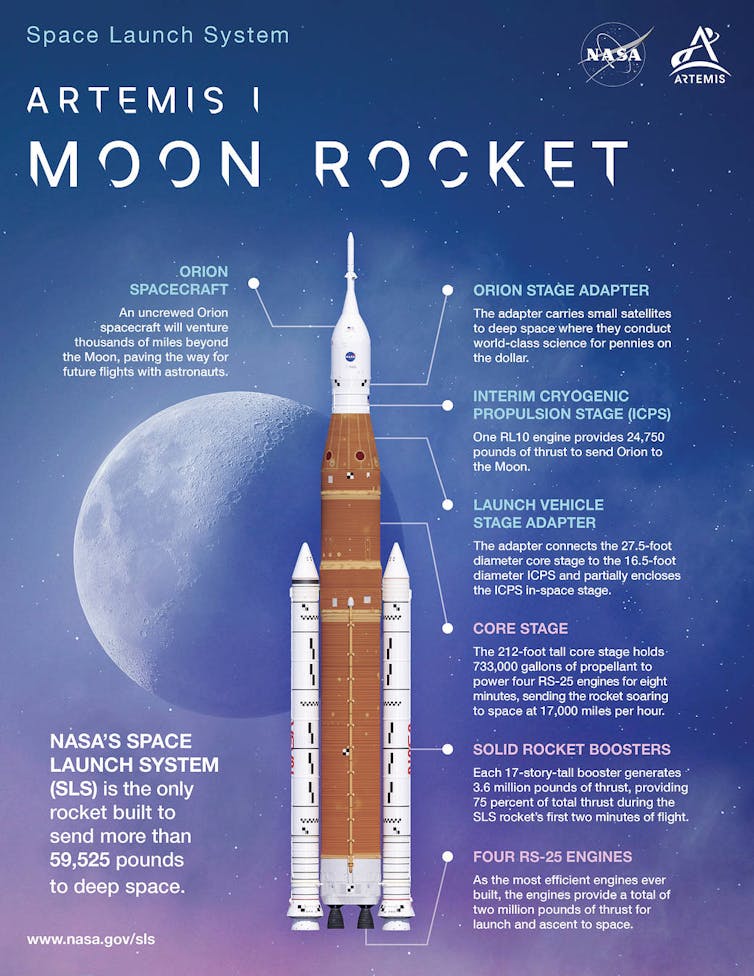
As a global community, we have already learned much from using robotic missions to the Moon and other planets in our Solar System. The Moon has been imaged at a resolution of roughly 5 metres per pixel, therefore we can see and pick safer landing areas in heavily cratered areas like the south polar regions.
The Indian Chandrayaan-1 mission discovered water ice, and China’s Chang'e 5 mission recently brought samples back to Earth that come from the youngest known area of the Moon. We will apply this information to our next steps.
This Time, The ‘Space Race’ Is Different
The 20th century “space race” that drove humans to the Moon in the 1960s and ‘70s was fuelled by competition between the two global superpowers, the United States and the Soviet Union, with the rest of the planet experiencing the excitement of visiting a world other than Earth.
Chinese officials recently announced an International Lunar Research Station jointly planned with Russia, a project that includes a new crew launch vehicle and the heavy lift rocket Long March 9, but details on this program are relatively scant for now.
While NASA leads the charge this time around, the Artemis program will be an international effort. It will take lessons from the success of the International Space Station, which was built by five, and has been used by astronauts from, 20 countries.
For this first Artemis mission, several European countries are involved in both the SLS and Orion. More (including Australia) will contribute to building and operating a base and rovers on the Moon in the future. Global collaboration is at the forefront of this effort.
The Benefit Is For All
Space exploration leads to new scientific discoveries, significant economic benefits, and inspiration for people to reach farther and higher. It is not just financial expenditure with no return – it earns back in spades and sometimes in ways we can’t predict.
The invention of cordless tools and velcro are often associated with NASA and space exploration; in reality, those were invented before the Apollo program (NASA did, however, make good use of them).
Although those weren’t invented because of space exploration, there are plenty of things that have been – from memory foam to suits for race car drivers, to cancer-sniffing instruments. A landing on the Moon also provided a unique view of Earth that showed our big blue marble in space. We are a connected community.
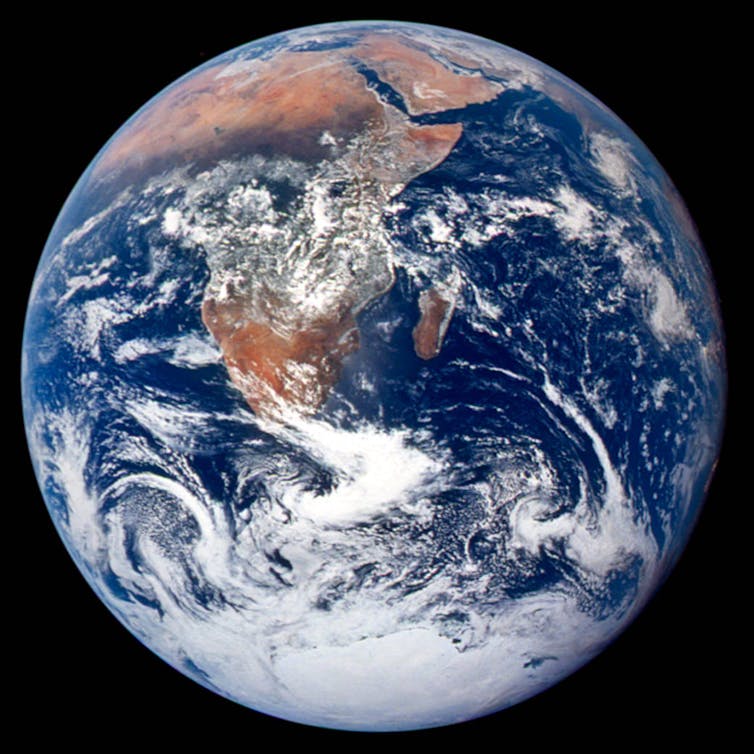
We, the humans of this planet, need to go back to the Moon for many reasons, but the most important one is the challenge – to extend ourselves to innovate and progress.
The effort put into this will lead to new ways to look at and solve problems not only for living and working in Space, but for improving how we live and work on Earth.![]()
Gretchen Benedix, Professor, Curtin University
This article is republished from The Conversation under a Creative Commons license. Read the original article.
Can’t get your teen off the couch? High-intensity interval training might help

Many parents will understand the frustration of coming home from work to find their teens slumped on the couch with their eyes glued to their phones or the TV.
This is not unusual, and dozens of studies have shown physical activity levels decline during the teenage years. In Australia, less than 10% of older adolescents are getting enough physical activity.
Adolescence is also a time when there is a spike in mental health problems. It is a key period of human development characterised by rapid psychological and biological changes due to the onset of puberty and associated hormones.
During this time young people are developing a sense of identity and independence as they transition into adulthood and establish health-related behaviours. Introducing your teen to high-intensity interval training (HIIT) is one way to get them moving and feeling better.
What Is High-Intensity Interval Training?
High-intensity interval training is a time-efficient form of exercise that involves relatively short yet intense bouts of activity, combined with rest or low intensity activity.
The intensity of the exercise should be around seven to nine out of ten on a scale of perceived exertion.
What Are The Benefits?
In our recent study, we found two to three high-intensity interval training sessions per week, each lasting about eight minutes, improved students’ aerobic and muscular fitness over the six-month study period. The exercises included things like shuttle runs (running back and forth between two lines) and push-ups.
After the program, students who participated completed on average, four more laps on the shuttle run test, and had small increases in the number of push-ups completed. They also had reductions in the stress hormone cortisol, which we measured in their hair.
There is also emerging evidence that participating in high-intensity interval training can have short- and longer-term benefits for young people’s mental health and cognitive function.

We also conducted a review of studies on high intensity interval training and found participating in a single HIIT session can improve how young people feel.
There is emerging evidence participation in HIIT can improve children’s cognitive function. In this New Zealand study, children participated in video-based HIIT workouts five times a week over a six week period. Compared to a control group, the research team found significant improvements in cognitive control and working memory among children who participated in the HIIT sessions.
How To Get Started And Make It Enjoyable
1) Start simple: a good starting point is to do 30 seconds of exercise followed by 30 seconds of rest, repeated eight times. We have found this to be effective and enjoyable for teens in a number of studies
2) incorporate variety: we recommend teens complete a variety of aerobic activities (such as shuttle runs, running on the spot, or burpees), and resistance exercises (such as push-ups, squats, or lunges) designed to increase heart rate. And while high-intensity interval training can be done in the living room, changing the exercise setting can also help satisfy your teen’s need for variety. For example, doing a session on the stairs at the beach or park might be more motivating than doing the same session in the backyard
3) modify intensity: as teens improve their fitness, they can increase the duration of the work interval, decrease the rest interval, or increase the total number of intervals completed within a session to ensure they’re getting a good workout
4) make it enjoyable: playing music and exercising with friends and family are strategies that can make high-intensity interval training more enjoyable. Although most people do not feel great in the middle of an intense exercise interval, there is evidence they will feel good about 20 minutes after completing exercise. We’ve found participating in high-intensity interval training increases adolescents’ mood and vitality (energy and alertness). Reminding teens to think about how they’re feeling after participating in a training session helps them experience the psychological benefits
5) use technology: wearable technologies (such as activity trackers and heart rate monitors) can help increase engagement during exercise, as they can provide you with real time heart rate data to see how hard you’re working. While these can be expensive, lower-cost options are available. If you don’t want to design your own sessions, there are thousands of fitness apps and online training videos to choose from.

Participate In A Variety Of Physical Activities
High-intensity interval training is a great way to get teens moving and interested in physical activity, but it shouldn’t be the only type of physical activity they undertake. Rather, it should be part of your teen’s physical activity smorgasbord which includes:
active transport (walking and cycling)
team and individual sports, such as swimming, football, netball, basketball
resistance training such as free weights, body weight exercises or exercises using elastic resistance bands to improve muscular fitness
other forms of recreational activity, such as dancing, surfing, skiing, and mountain biking.
If we want our teens to be active now and into the future, we need to provide them with the motivation, confidence and knowledge to engage in a wide variety of physical activities.![]()
David Lubans, Professor, University of Newcastle and Angus Leahy, Associate Lecturer, University of Newcastle
This article is republished from The Conversation under a Creative Commons license. Read the original article.
Why do people overshare online? 5 expert tips for avoiding social media scandal

Social media are increasingly blurring the lines between our personal and professional lives, leaving us at risk of posting sensitive information that could have ramifications far beyond our “friends” list.
Finnish Prime Minister Sanna Marin recently found this out the hard way after a video of her dancing and drinking with friends, first posted to a private Instagram account, was leaked to the press. Marin was forced to apologise, and even volunteered for a drug test, after enduring a worldwide media storm.
Other kinds of oversharing can have consequences, too. In 2020, police in Australia shared photos of arrested ex-footballer Dani Laidley in a private WhatsApp group, and the photos were then made public. Thirteen officers were suspended or transferred, with some facing charges for privacy and human rights breaches.
Many employers are introducing policies to reduce this kind of risk. Our research shows what drives much online oversharing – and we can offer some tips to keep yourself clear of social media scandal.
The Personal And Professional Risks Of Oversharing
People have different preferences for boundaries between their professional and personal lives. Some prefer to keep their work relationships formal, while others treat colleagues as friends.
However, even if we choose to maintain strong boundaries between our professional and personal lives, we may still find details of our lives divulged on social media by others.
Research has reported more than half of us feel anxious about family, friends and colleagues sharing information, photos or videos we do not want to be shared publicly. Yet many of us also reveal an inappropriate amount of detail about our own lives (“oversharing”) on social media, and regret it later.
Beyond the potential for embarrassment, indiscriminate sharing on social media can have significant negative consequences for your professional life. Many employers actively use social media to research job candidates, while some employees have lost their jobs due to social media posts.
Emotions Drive Oversharing
Why are so many of us prone to oversharing? Our research suggests emotions are central.
When we feel strong emotions, we often use social media to communicate with and get support from friends, family and colleagues. We might share good news when we feel happy or excited, or anger and frustration might drive us to vent about our employers.
When emotional, it is easy for us to cross the boundary between work and social life, underestimating the consequences of social media posts that can quickly go viral.
We have five simple tips for people to avoid oversharing and creating a social media scandal for themselves or others.
1. Set Clear Boundaries Between Personal Life And Work
Be clear about the boundaries between your social life and work. Set rules, limits and acceptable behaviours to protect these boundaries.
Let your friends, colleagues and family know your expectations. If someone oversteps your boundaries, raise your concerns. Consider your relationship with individuals who do not respect your boundaries.
You can also establish boundaries by maintaining separate professional and social accounts on different social media platforms, and only sharing things relevant to work on your professional account.
2. Respect The Boundaries Of Others
Be aware of and respect the boundaries of others. Don’t share photos or videos of others without their permission.
If someone doesn’t want their photo to be taken, video to be recorded or their name to be tagged, respect their wishes. Treat others on social media the same way you would like to be treated.
3. Lock Down Your Social Media Accounts
Adjust your privacy settings to control who can view your profile and posts.
Most social media platforms provide features to help users protect their privacy online. Facebook’s “Privacy Checkup tool”, for example, lets you see what you’re sharing and with whom.
Also consider what information you place in your profile. If you don’t want your personal social media profile associated with your employer, do not list your employer in your profile.
4. Share Consciously To Avoid Mistakes
Do not use social media when you feel emotional. Especially if you are feeling strong emotions like hurt, anger or excitement, give yourself time to process your feelings before posting.
Ask yourself: How many people will see this post? Would anyone be hurt? Does anyone benefit? Would I feel comfortable if my colleagues or supervisors saw this?
Assume what you share can be seen by your friends, enemies, colleagues, boss and another 5,000 people. Stop if you don’t want any of them to see what you’re thinking about posting.
5. If You Do Overshare, Try To Remove Unwanted Content
Oversharing and accidental posting are not uncommon. If you have posted unwanted content, remove it immediately.
If you are concerned about information about yourself on someone else’s social media, raise your concerns and ask the person who posted to remove it.
If the information has spread through multiple sources, it is a bit tricky, but it is worth trying to contact the website or service that hosts the information or image to remove the content.
If you need further assistance with removing online content, you can also try a content removal service.
Posting Is Forever
Be aware that nothing shared over social media is private. Even “private” messages can easily be forwarded, screenshotted, posted and shared elsewhere.
You should treat social media content like your personal brand. If you wouldn’t say it to your colleagues and managers, don’t post it online.
Social media can enrich our professional and personal lives, but ill-considered posts and oversharing can be damaging to yourself and others. Being smart on social media is something we need to get better at in our professional lives, just as much as our personal lives.![]()
Van-Hau Trieu, Senior Lecturer in Information Systems, Deakin University and Vanessa Cooper, Professor, Information Systems, RMIT University
This article is republished from The Conversation under a Creative Commons license. Read the original article.
Indigenous Ecological Knowledge Kept Alive Through New Language Exchange
A project celebrating Indigenous scientific knowledge that has added 2,500 native plant and animal names to the Atlas of Living Australia (ALA) was launched On September 1st at Ngukurr Primary School in South-East Arnhem Land.
The ALA, hosted by Australia’s national science agency, CSIRO, worked with Yugul Mangi Rangers in South-East Arnhem Land and Macquarie University on the project, adding language words in eight local languages and descriptions for 295 species to the ALA.
ALA Indigenous Ecological Knowledge (IEK) Program Lead Nat Raisbeck-Brown said the new Indigenous names and transcriptions would increase data accessibility and strengthen researchers’ and Australians’ connection to Traditional Owner knowledge and language.
“This project is a wonderful celebration of Indigenous scientific knowledge, highlighting the importance of Australia’s first scientists in understanding biodiversity, and supporting biodiversity management and conservation efforts,” Ms Raisbeck-Brown said.
“The newly updated species names are now searchable in the ALA, both by their Indigenous language name and western names (Latin and common). By having species names discoverable in Indigenous languages, we benefit from and encourage more Indigenous content to be contributed to the project," she said.
The project celebrates the Kriol, Marra, Ritharrηu/Wӓgliak, Ngandi, Wubuy, Ngalakgan, Alawa and Rembarrnga languages which are now included in the ALA.
Yugul Mangi Assistant Ranger Coordinator Julie Roy, who speaks Ngalakgan and Ngandi languages, said the work not only offered shared scientific benefits but also helped support keeping local languages alive.
“It was very interesting for me to learn both the scientific names and local language names for the species and it's also good for the kids to be able to search these species online to learn more about local languages,” Ms Roy said.
In 2020, the Ngukurr Language Centre published this knowledge in a book titled The Cross-cultural guide to some animals and plants of South East Arnhem Land.
Macquarie University project lead Emilie Ens said working with local communities reinforced the long-standing traditions and knowledge of First Nations Peoples in effective environmental management.
“This knowledge, often encoded in language, is an important part of Australia’s natural and cultural heritage,” Ms Ens said.
“By showcasing these names and knowledge in the ALA, we are recognising the deep traditions of Australia’s First Nations Peoples which is long overdue yet is increasingly seen as essential for effective management of Australia’s environments," she said.
The ALA’s IEK project is a collaborative effort with Traditional Owners across Australia to preserve and provide access to Indigenous cultural and environmental knowledge and language.
The ALA, Australia’s national biodiversity data infrastructure, is funded by the National Collaborative Research Infrastructure Strategy (NCRIS) and is hosted by Australia’s national science agency, CSIRO.
Find out more about Indigenous ecological knowledge by visiting this website: https://www.ala.org.au/indigenous-ecological-knowledge/
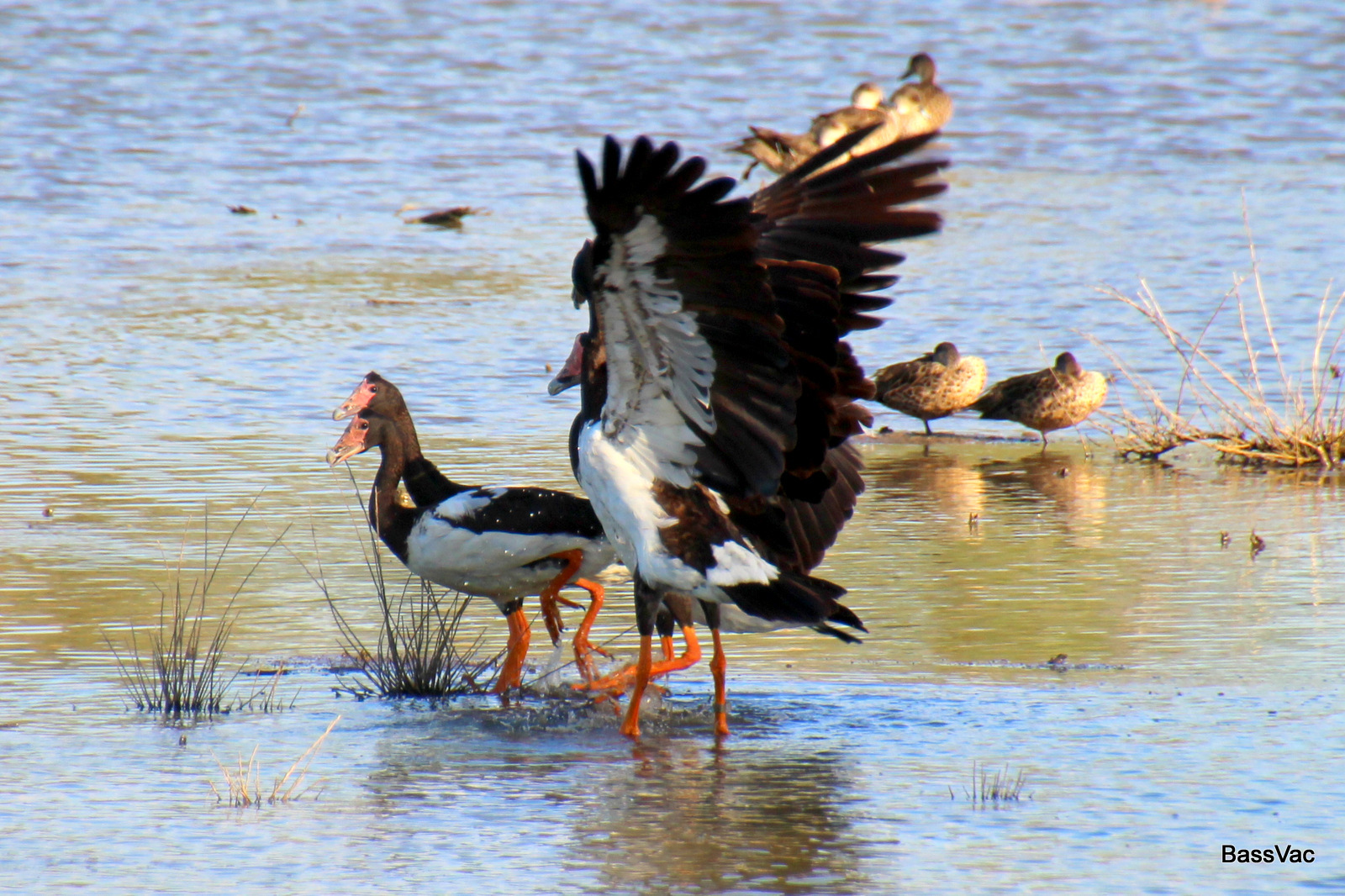
Magpie Goose or Anseranas semipalmata, 'Langgurna' in Marra language, via iNaturalist. Credit: gillbsydney
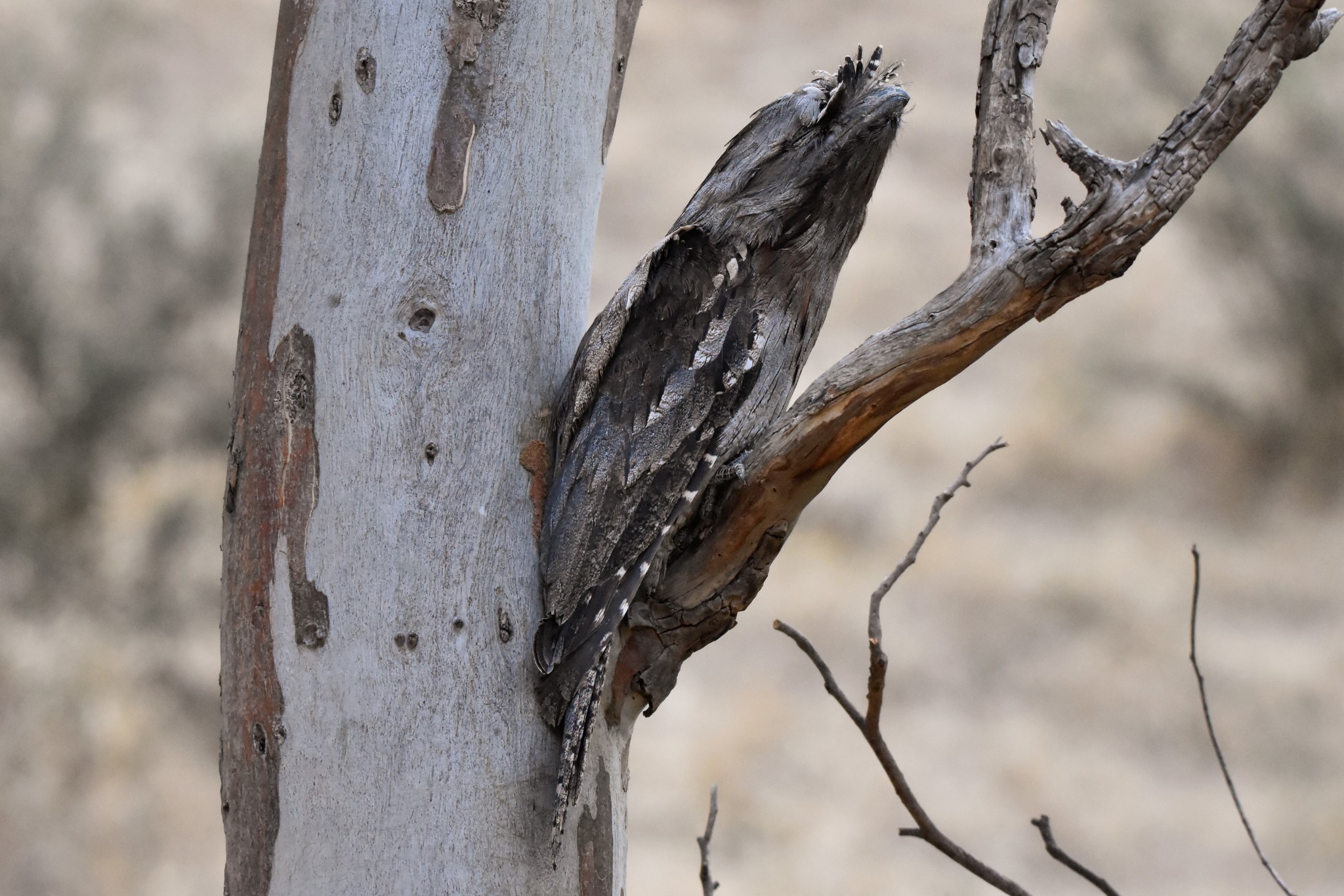
The Tawny Frogmouth or Podargus strigoides, 'Aguluykuluy' in Ngandi language, via iNaturalist. Credit: Owen Gal
Yugul Mangi Ranger Simon Ponto holding a Lined Firetail Skink or Morethia ruficauda, 'Rlokrlok' in Ngalakgan language, on a fauna survey in 2014 at Mission Gorge, South-East Arnhem Land. Photo: Emilie Ens
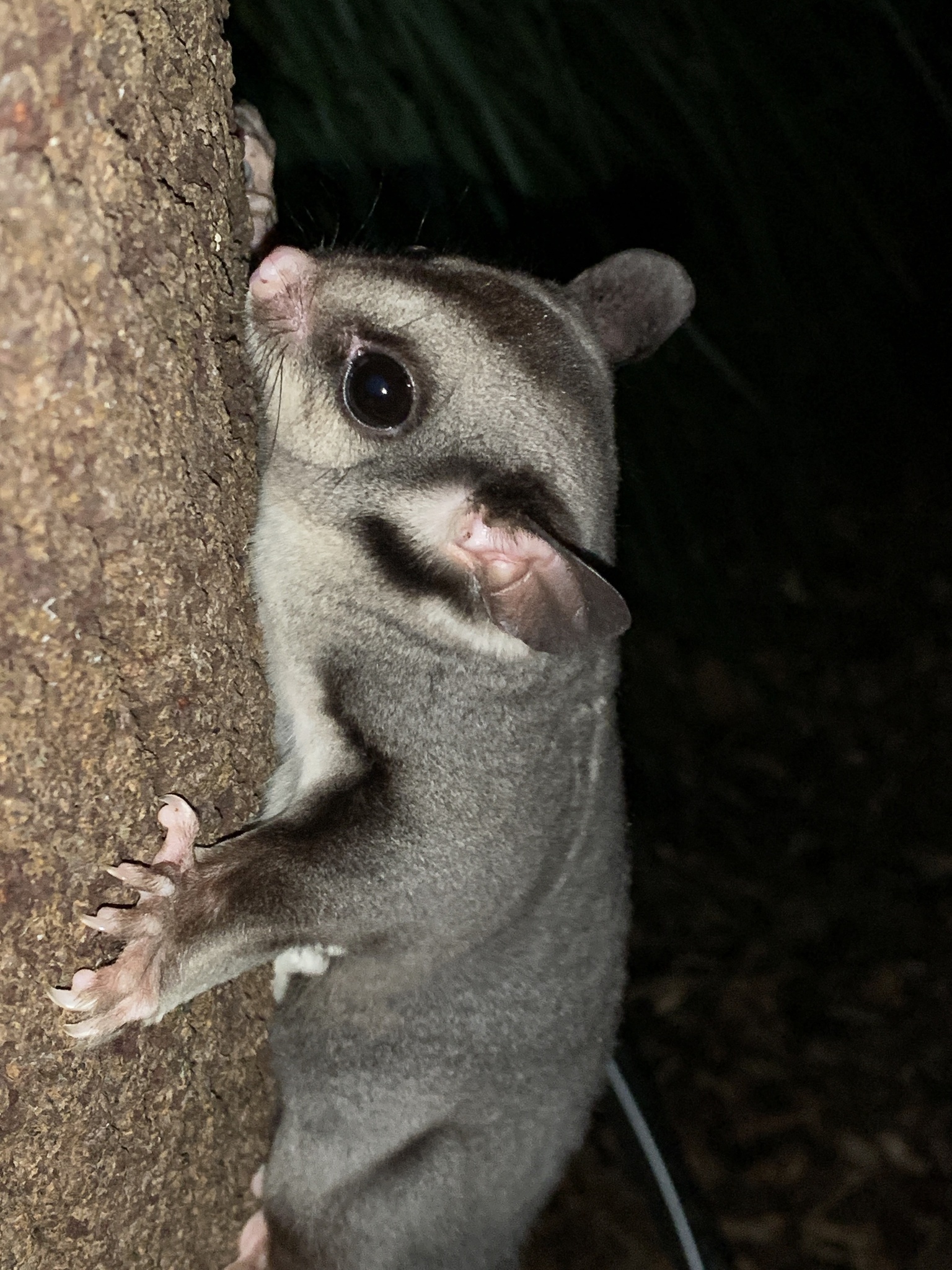
Sugar Glider or Petaurus breviceps, 'Lambalk' in Rembrrnga language, via iNaturalist. Credit: Nimzee
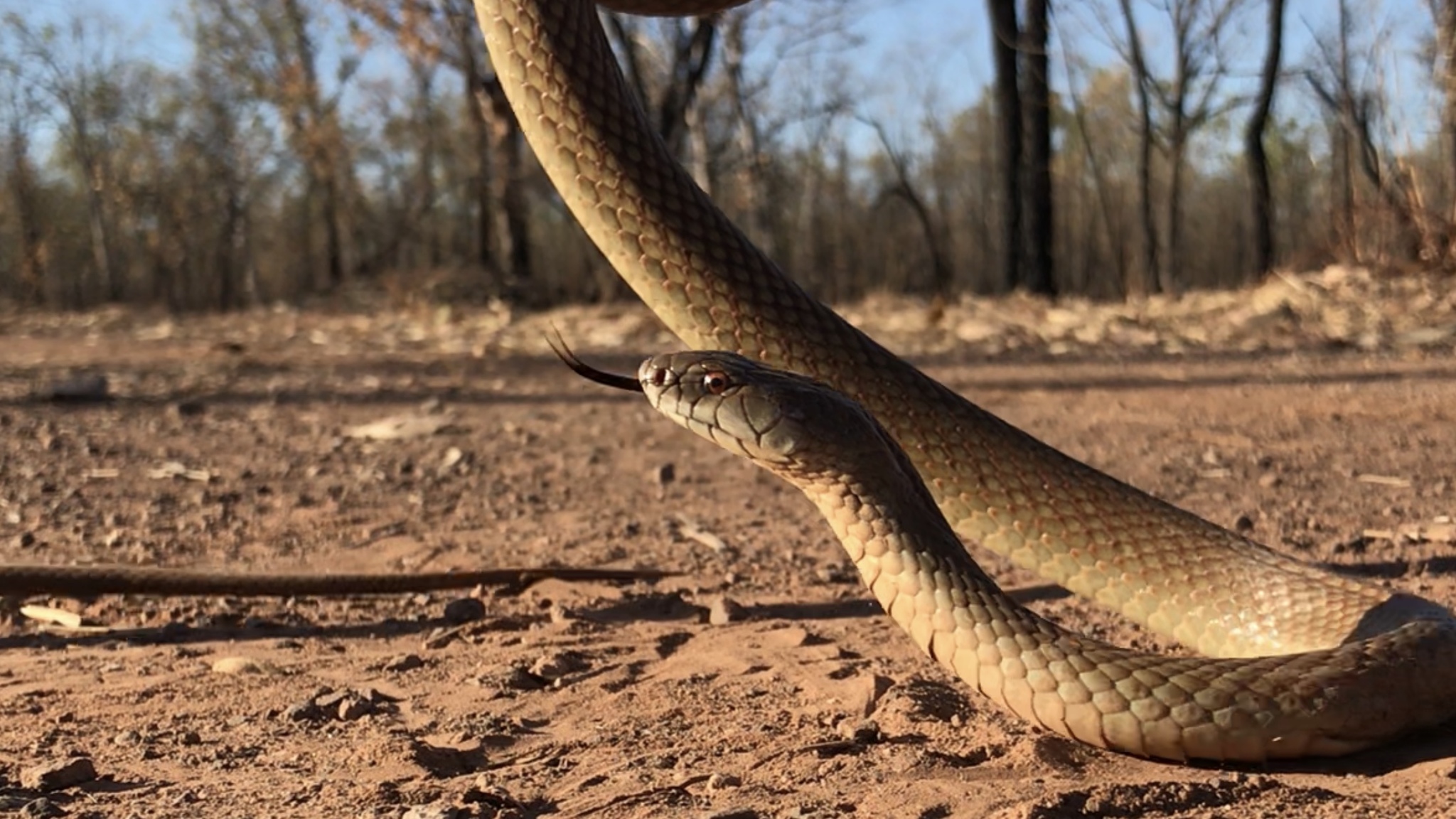
Mulga Snake or Pseudechis australis, 'Bandiyan' in Kriol language, via iNaturalist. Credit: pratty90
Australian-First Cyber Centre To Safeguard NSW Police Network
Track Laying Complete On The Next Stage Of Sydney Metro
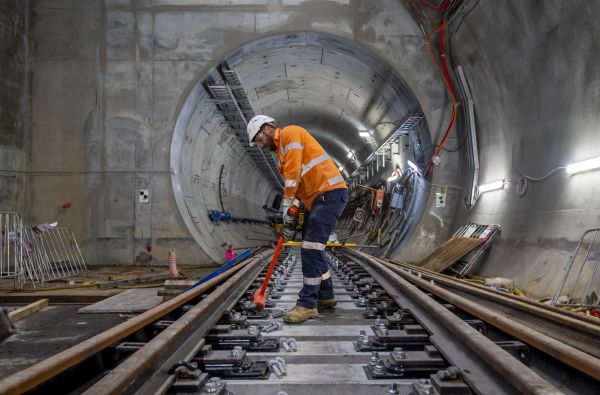 The final track has officially been laid on the NSW Government’s flagship public transport development, the Sydney Metro City and Southwest project.
The final track has officially been laid on the NSW Government’s flagship public transport development, the Sydney Metro City and Southwest project.Eco-Glue Can Replace Harmful Adhesives In Wood Construction
Positive Neighbour Involvement Important If Teens Don't Develop Mother-Child Bond
Discovery And Naming Of Africa's Oldest Known Dinosaur
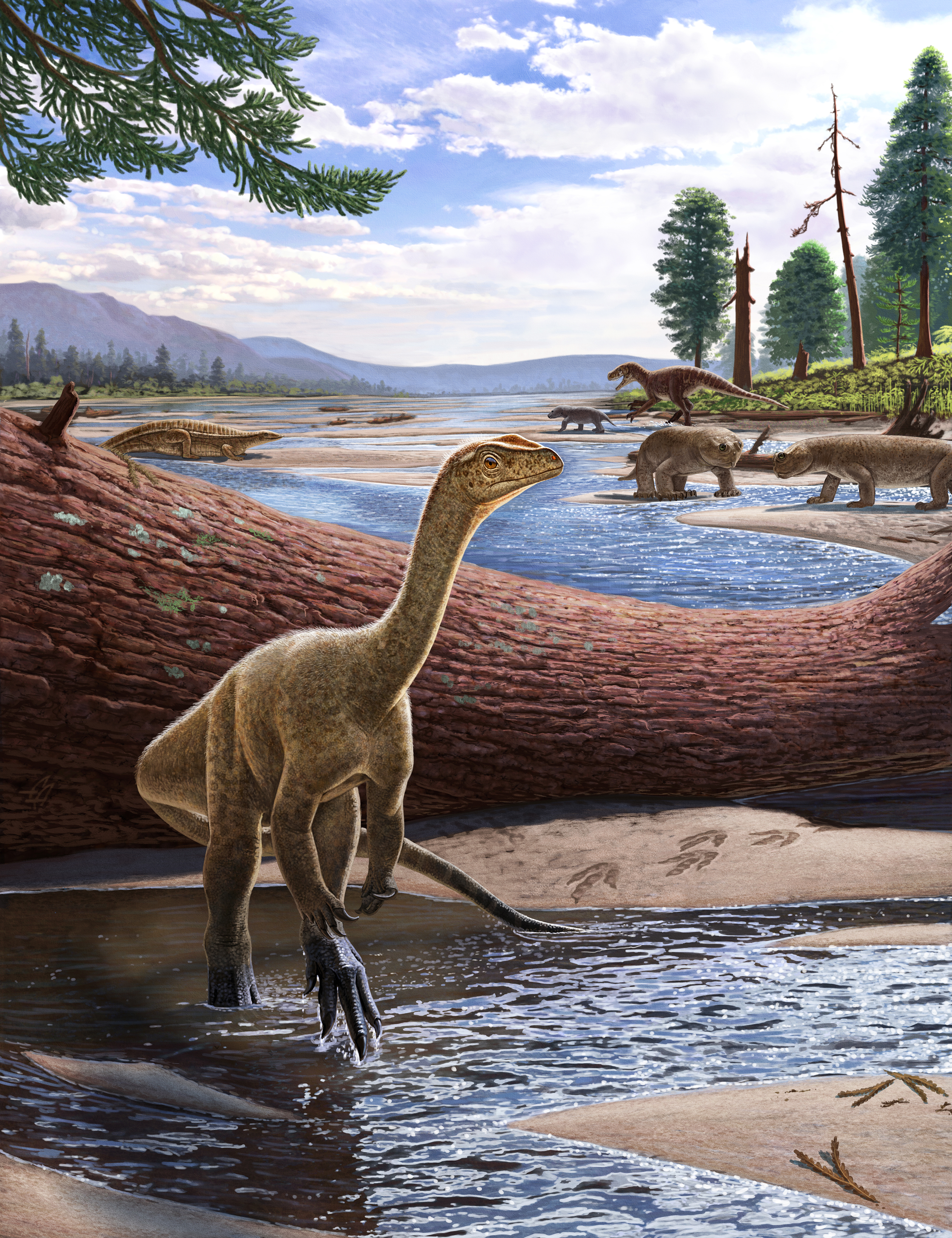
High Folic Acid Supplementation Associated With Higher Rates Of COVID-19 Infections And Mortality
Dolphins Form Largest Alliance Network Outside Humans
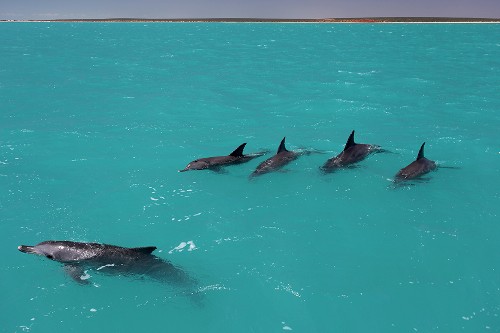 Male bottlenose dolphins form the largest known multi-level alliance network outside humans, an international team led by researchers at the University of Bristol have shown. These cooperative relationships between groups increase male access to a contested resource.
Male bottlenose dolphins form the largest known multi-level alliance network outside humans, an international team led by researchers at the University of Bristol have shown. These cooperative relationships between groups increase male access to a contested resource.New Way Found To Turn Number Seven Plastic Into Valuable Products
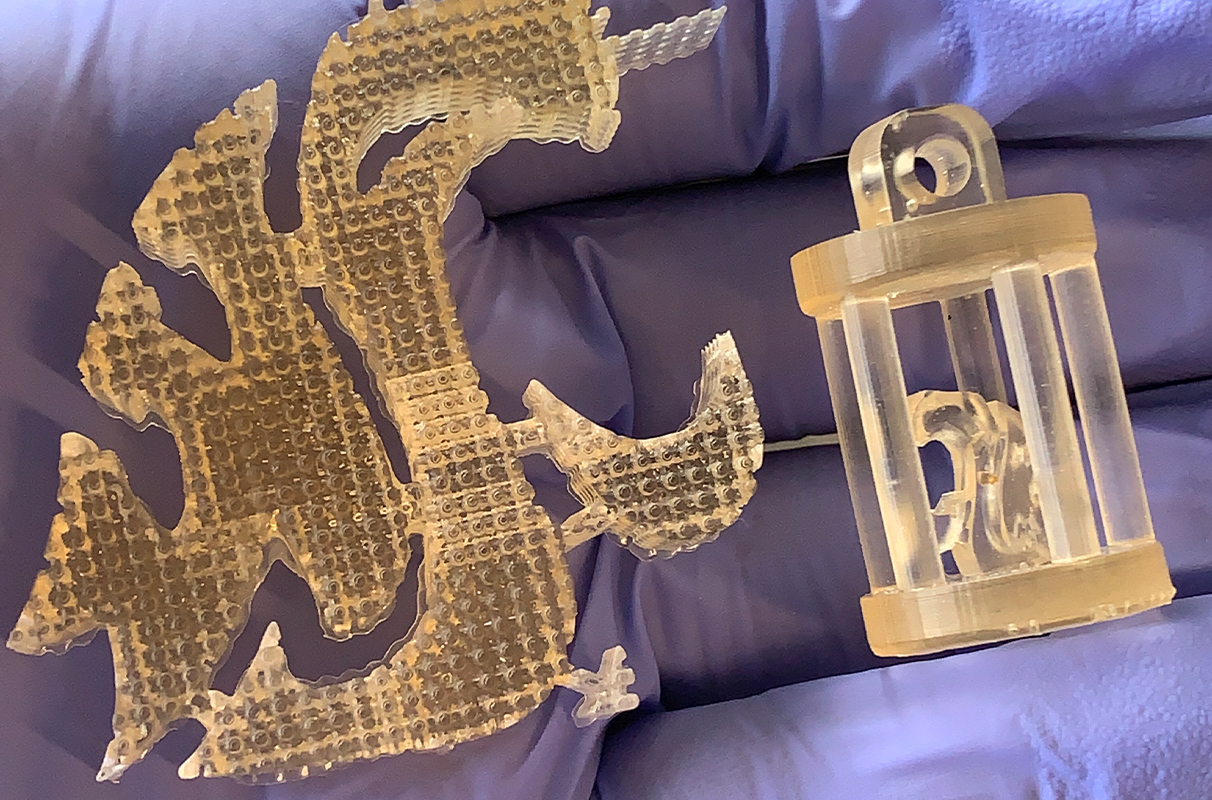
Team Developing Oral Insulin Tablet Sees Breakthrough Results
Disclaimer: These articles are not intended to provide medical advice, diagnosis or treatment. Views expressed here do not necessarily reflect those of Pittwater Online News or its staff.